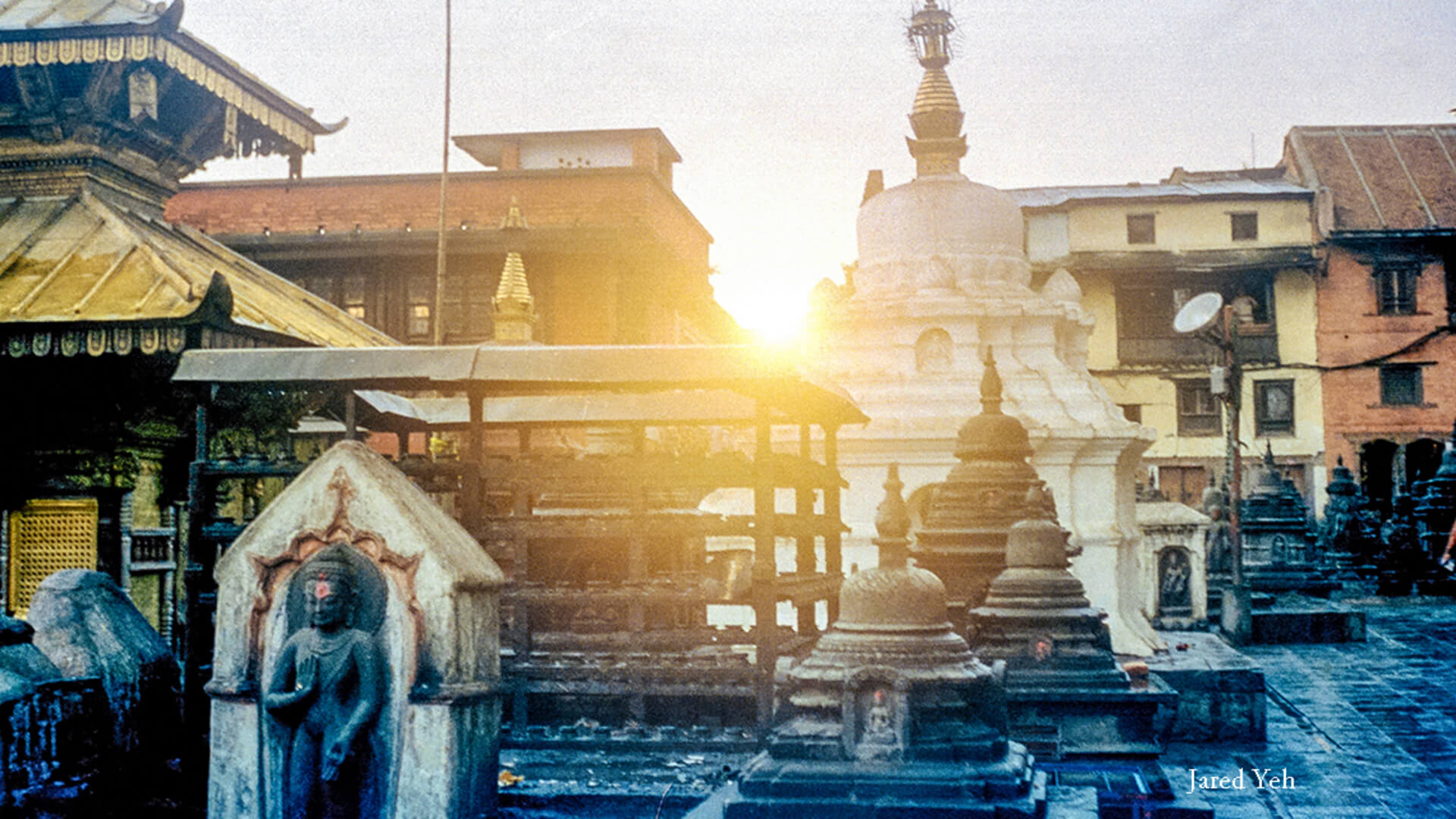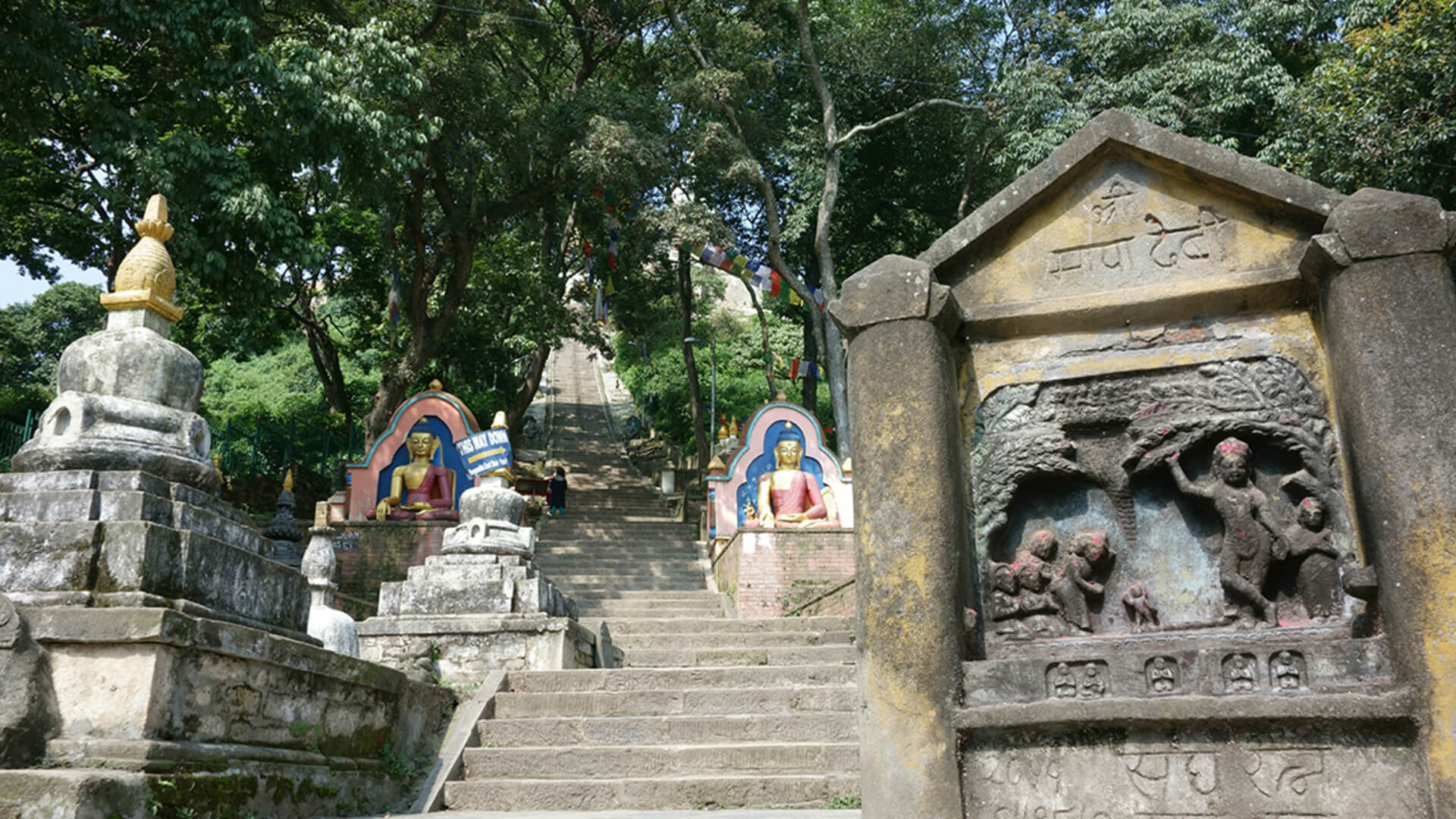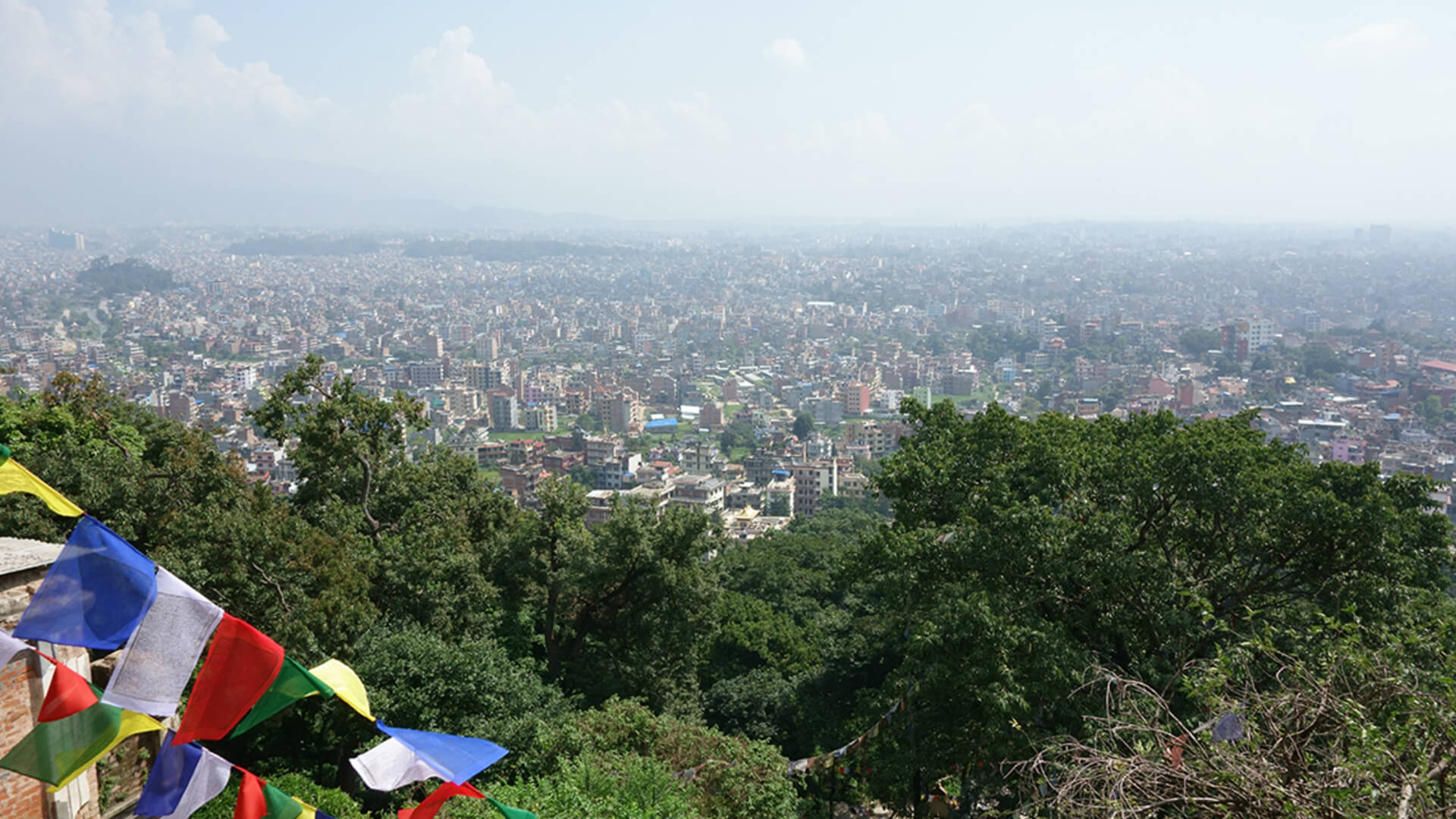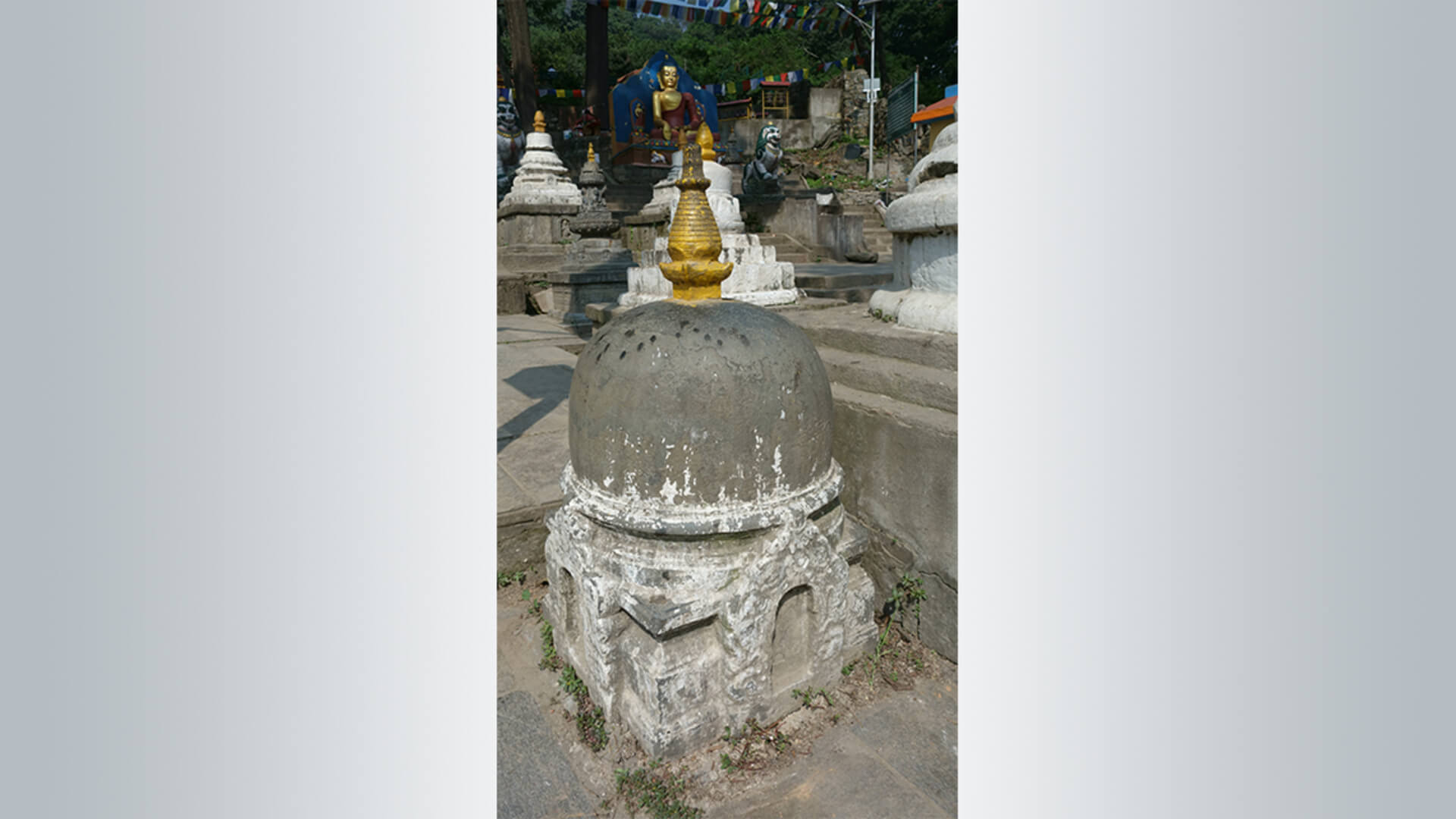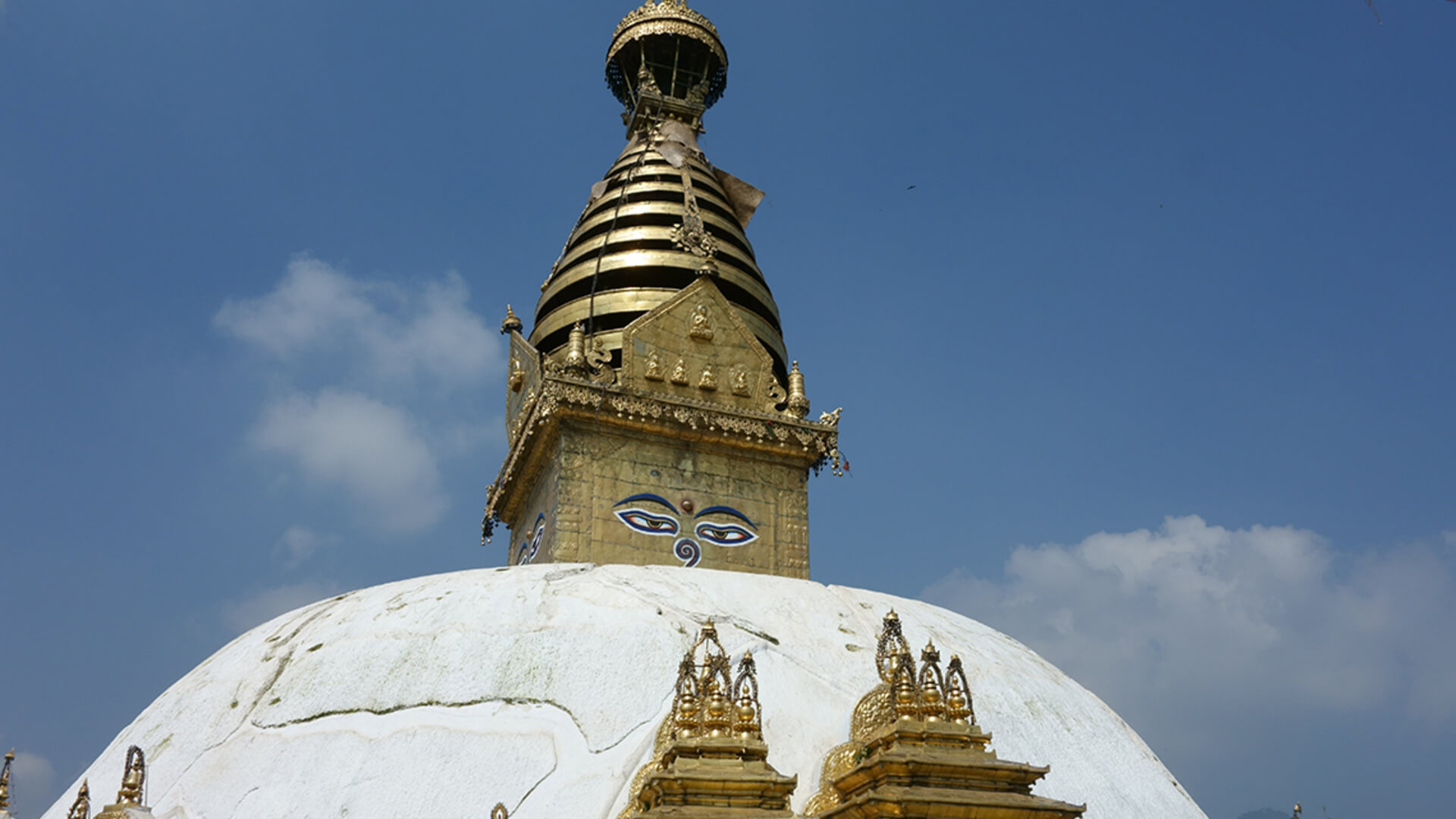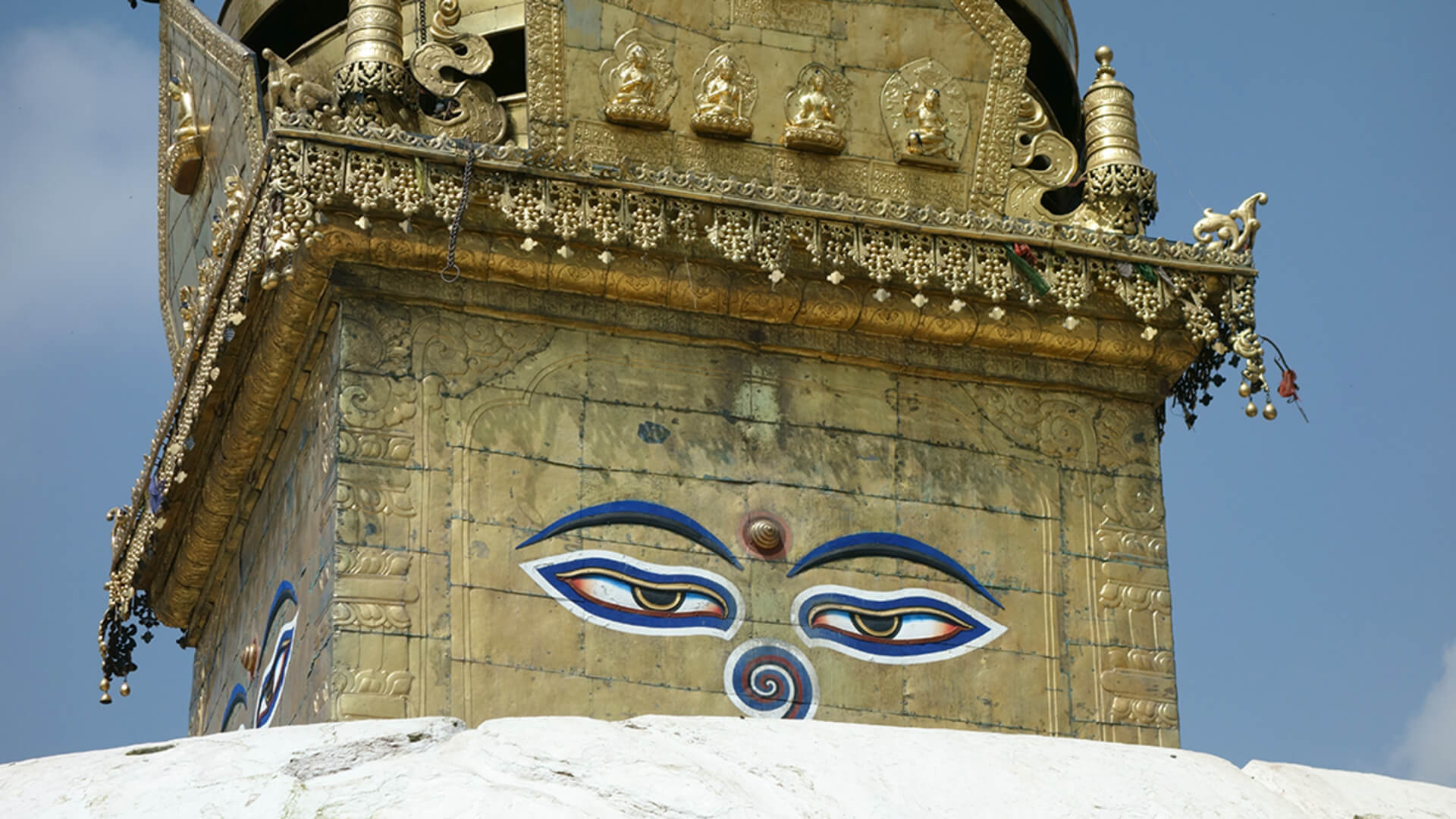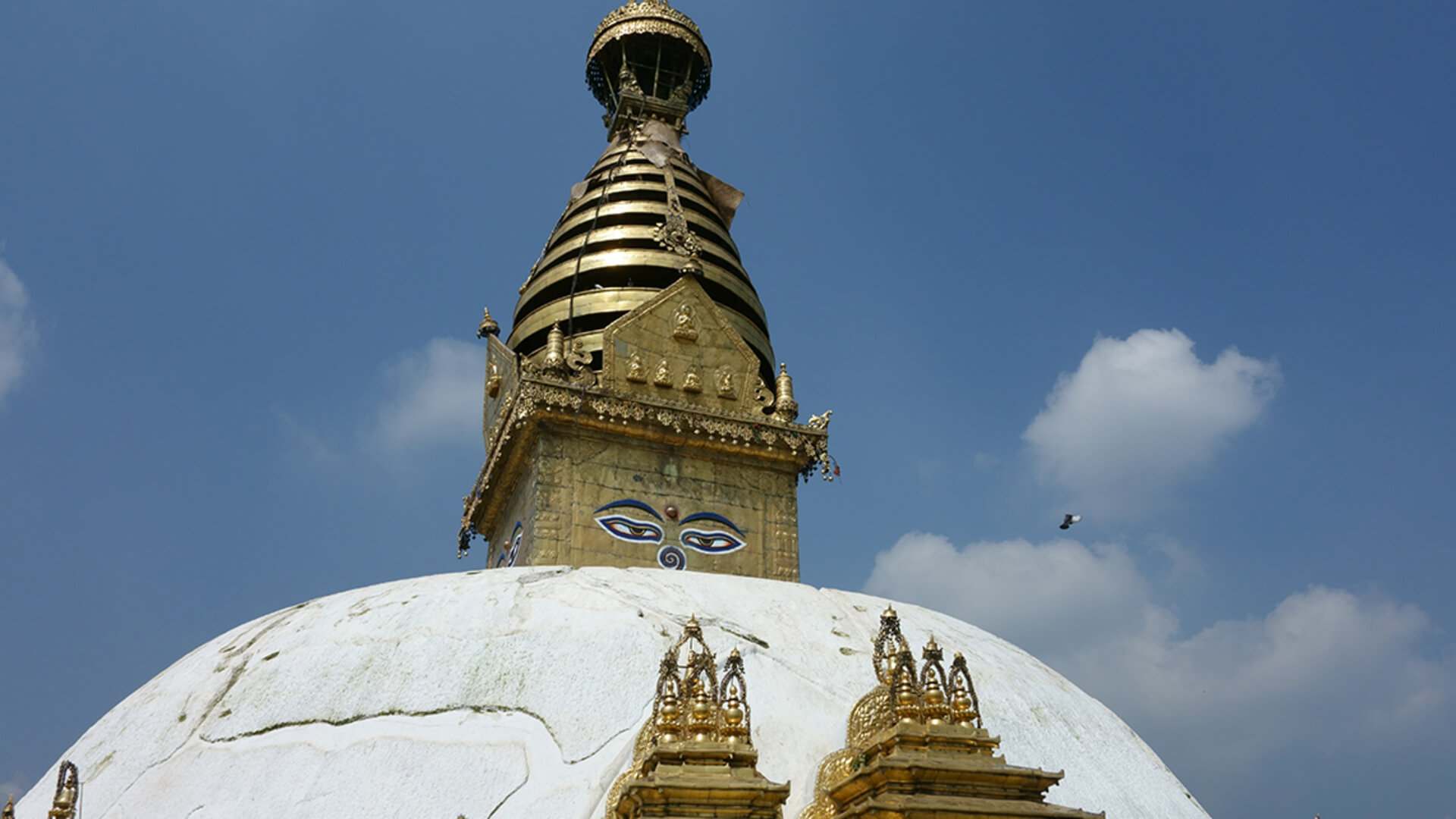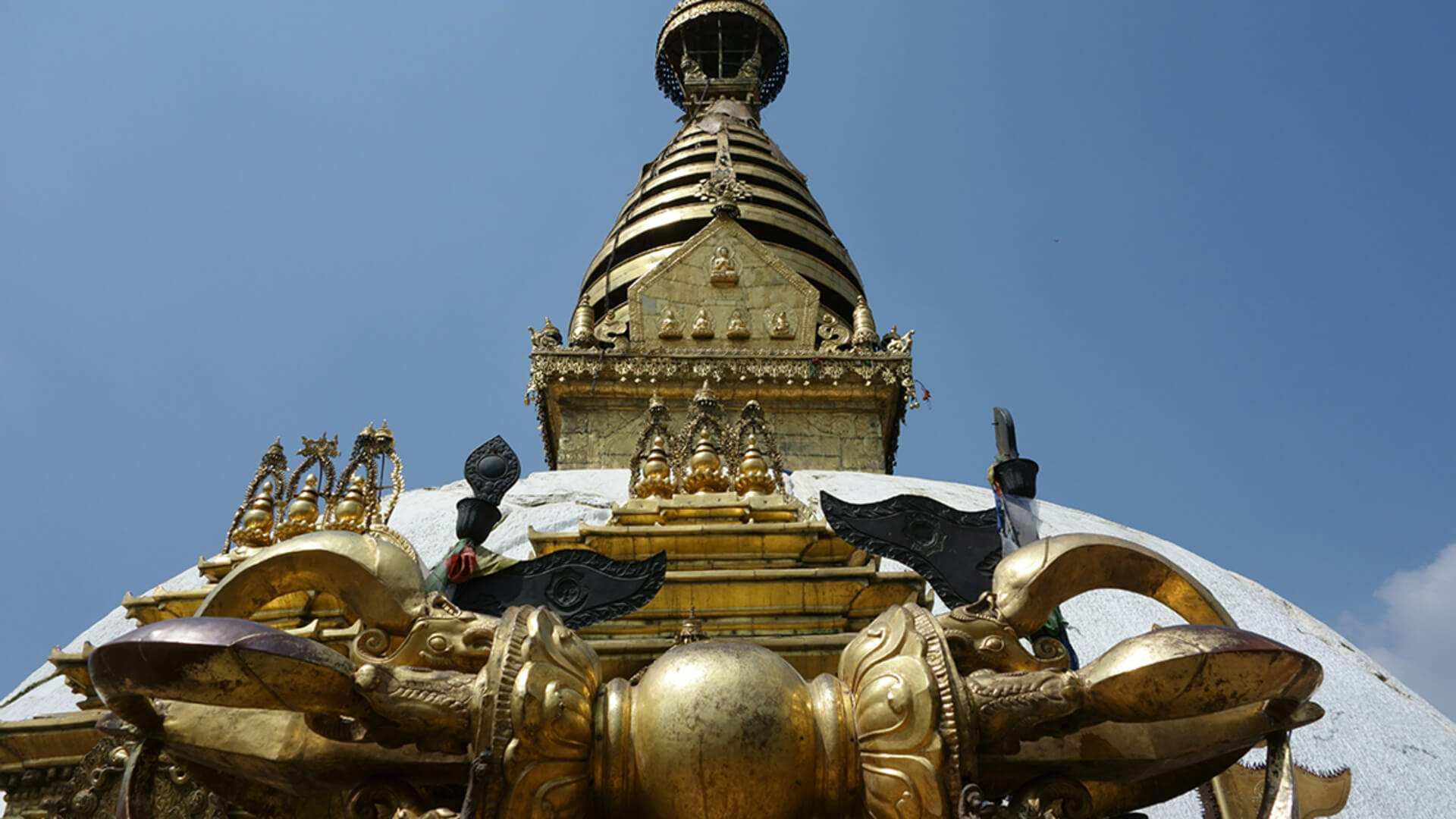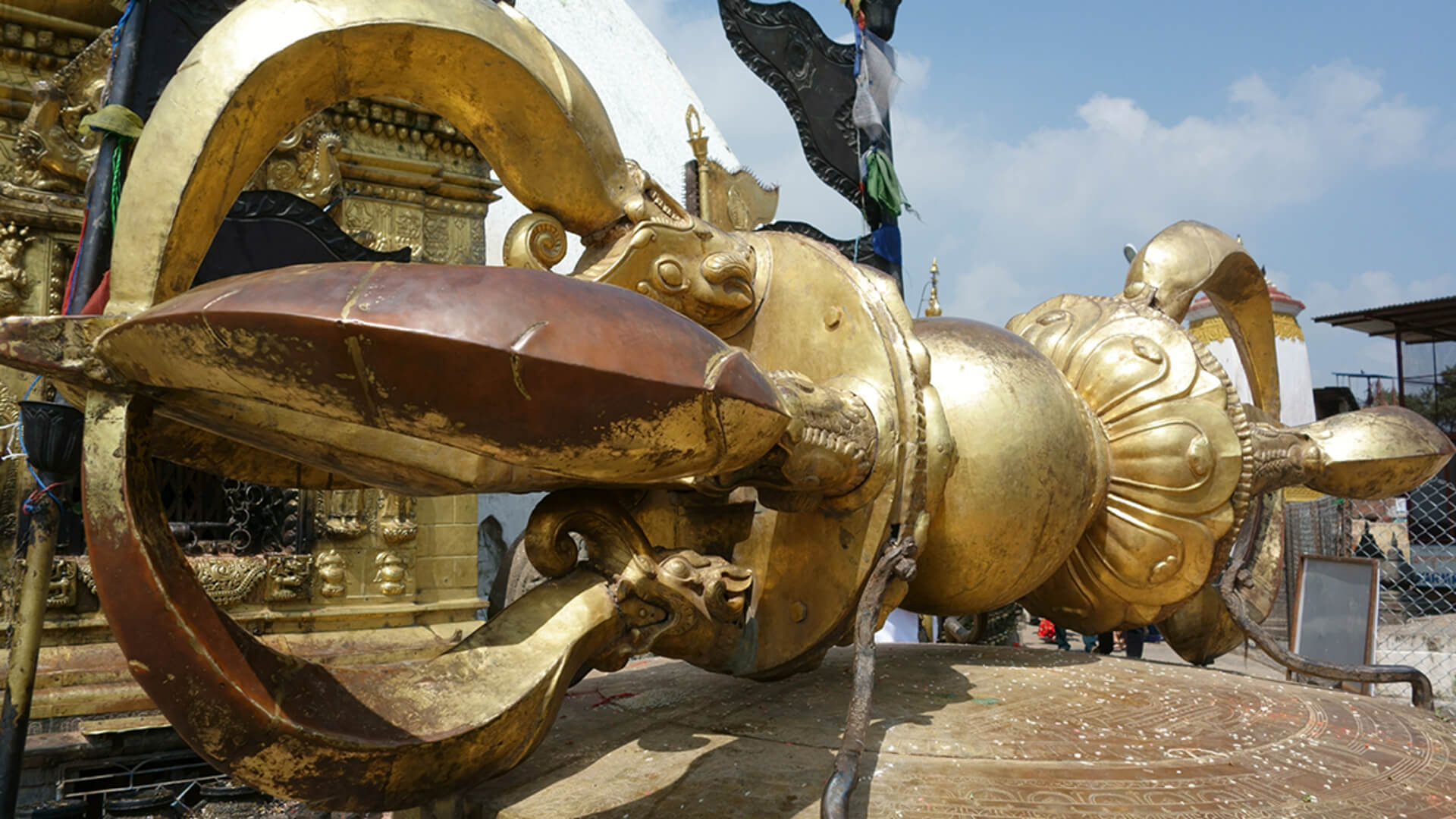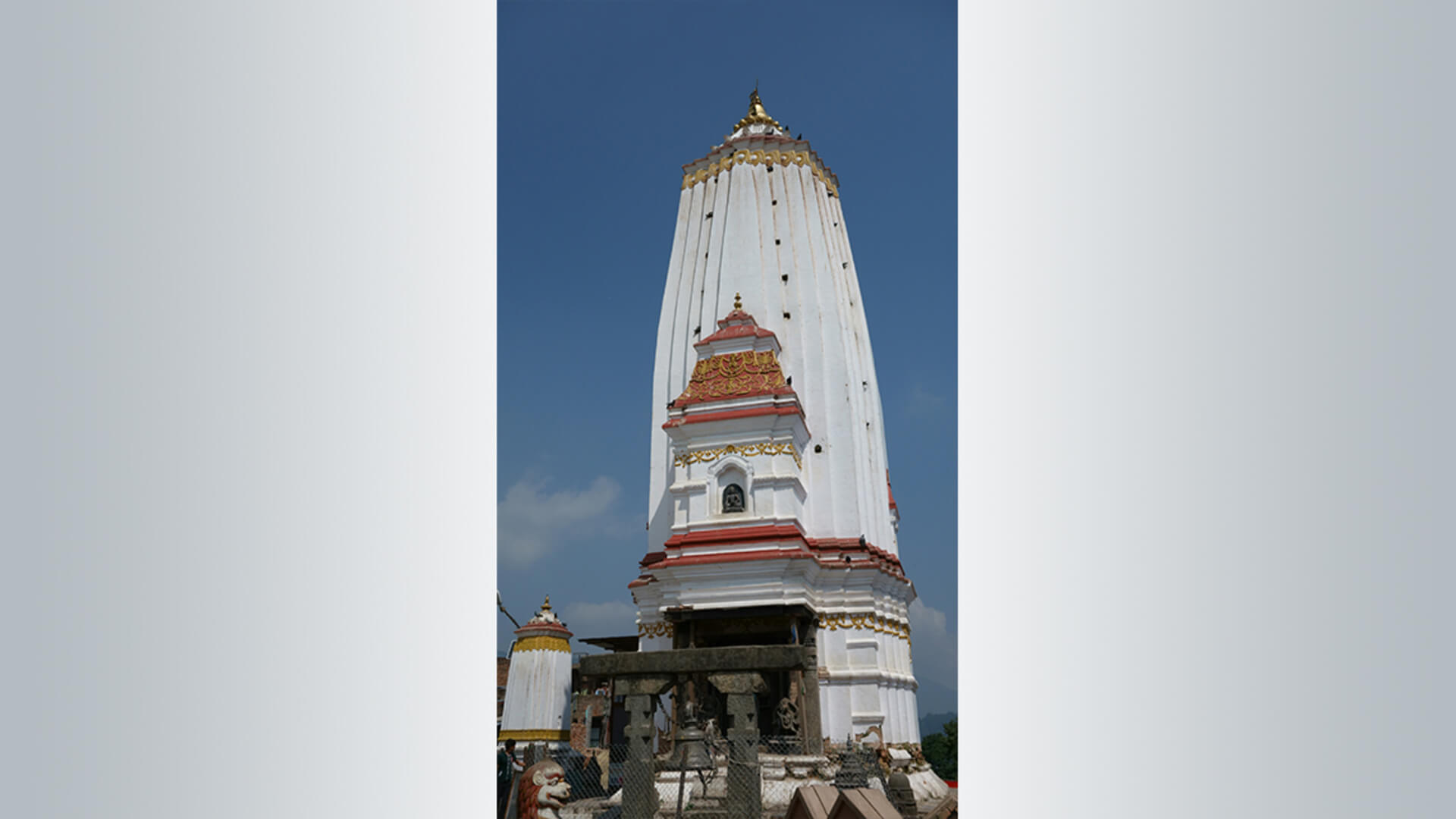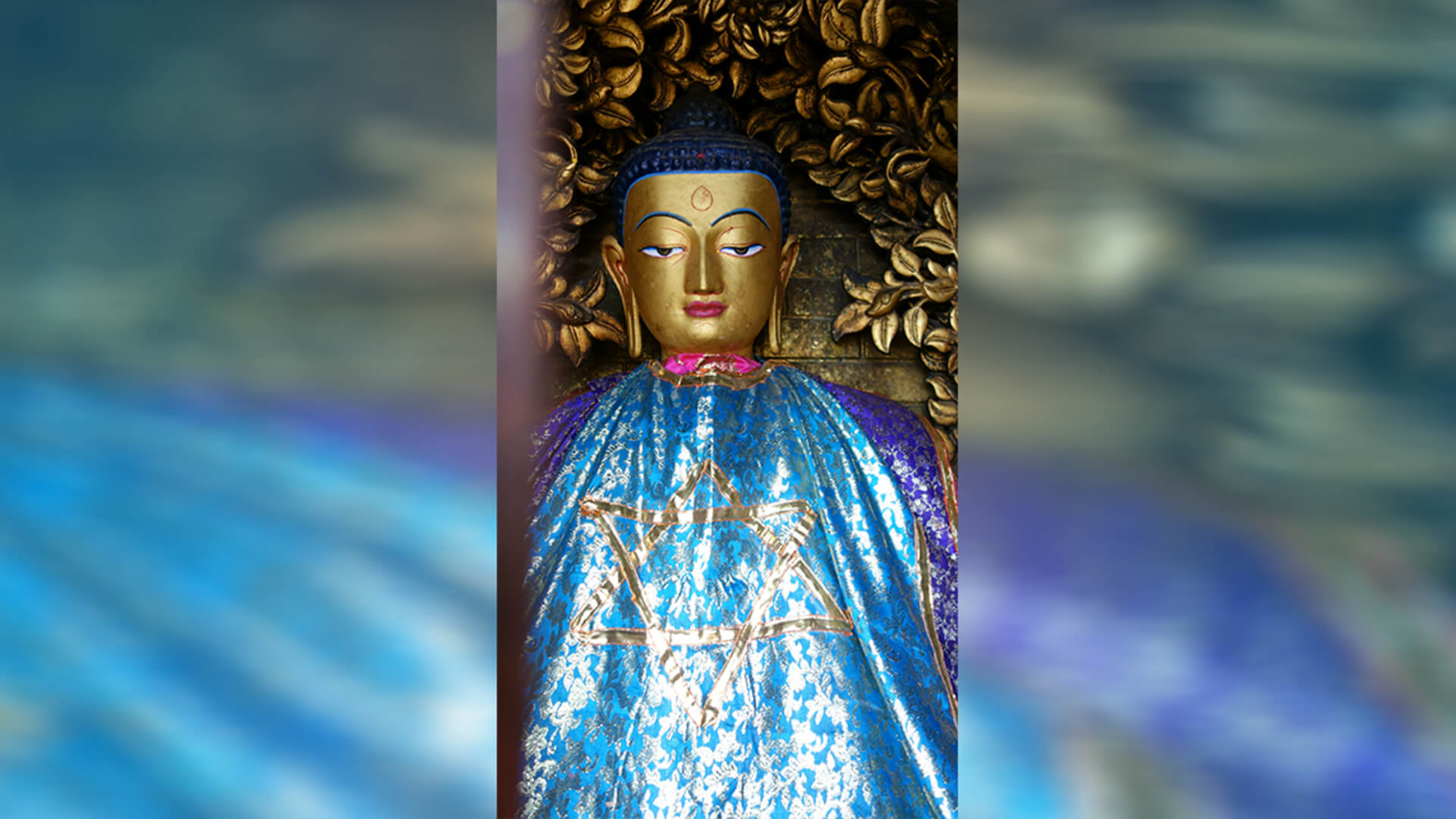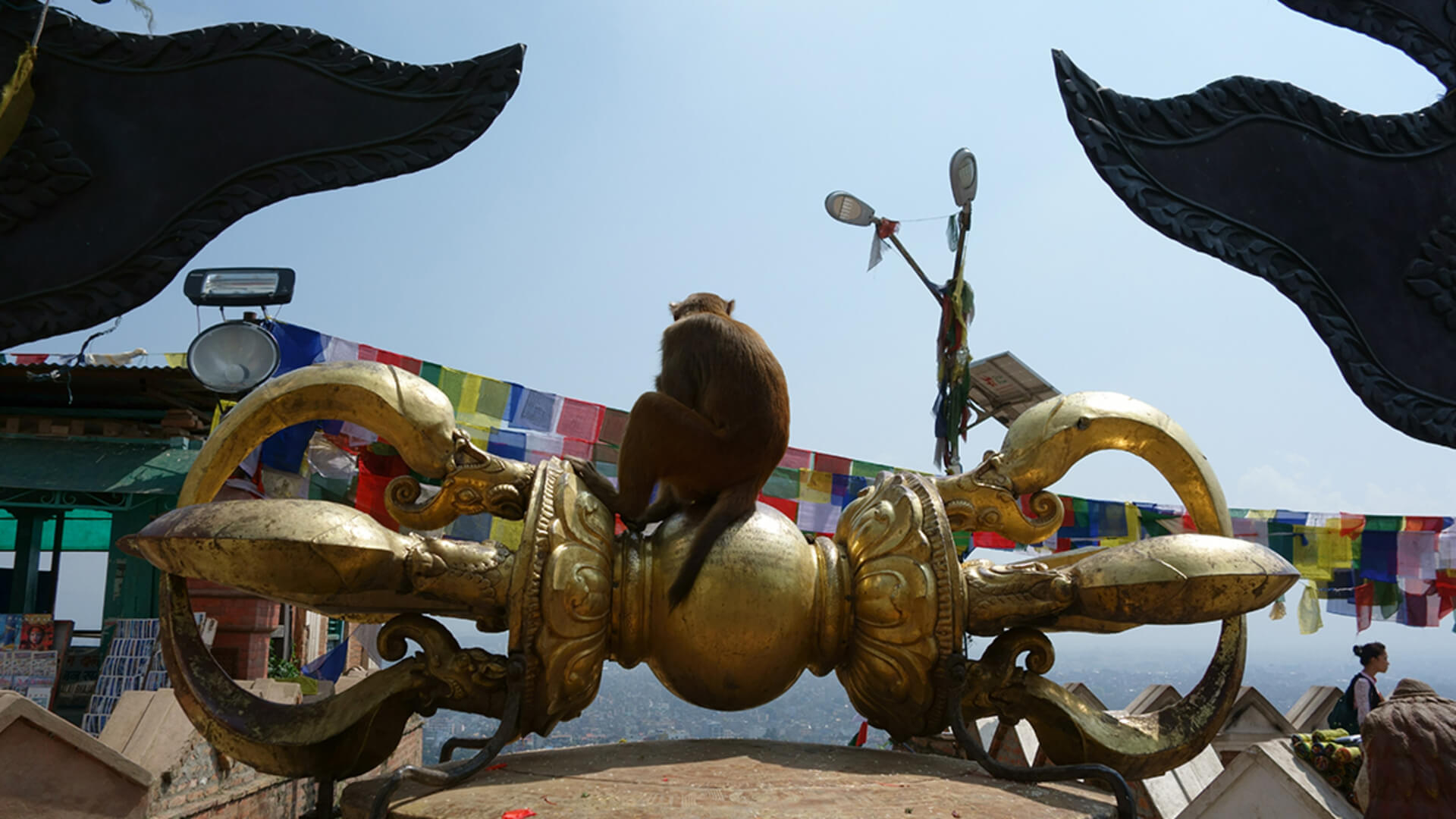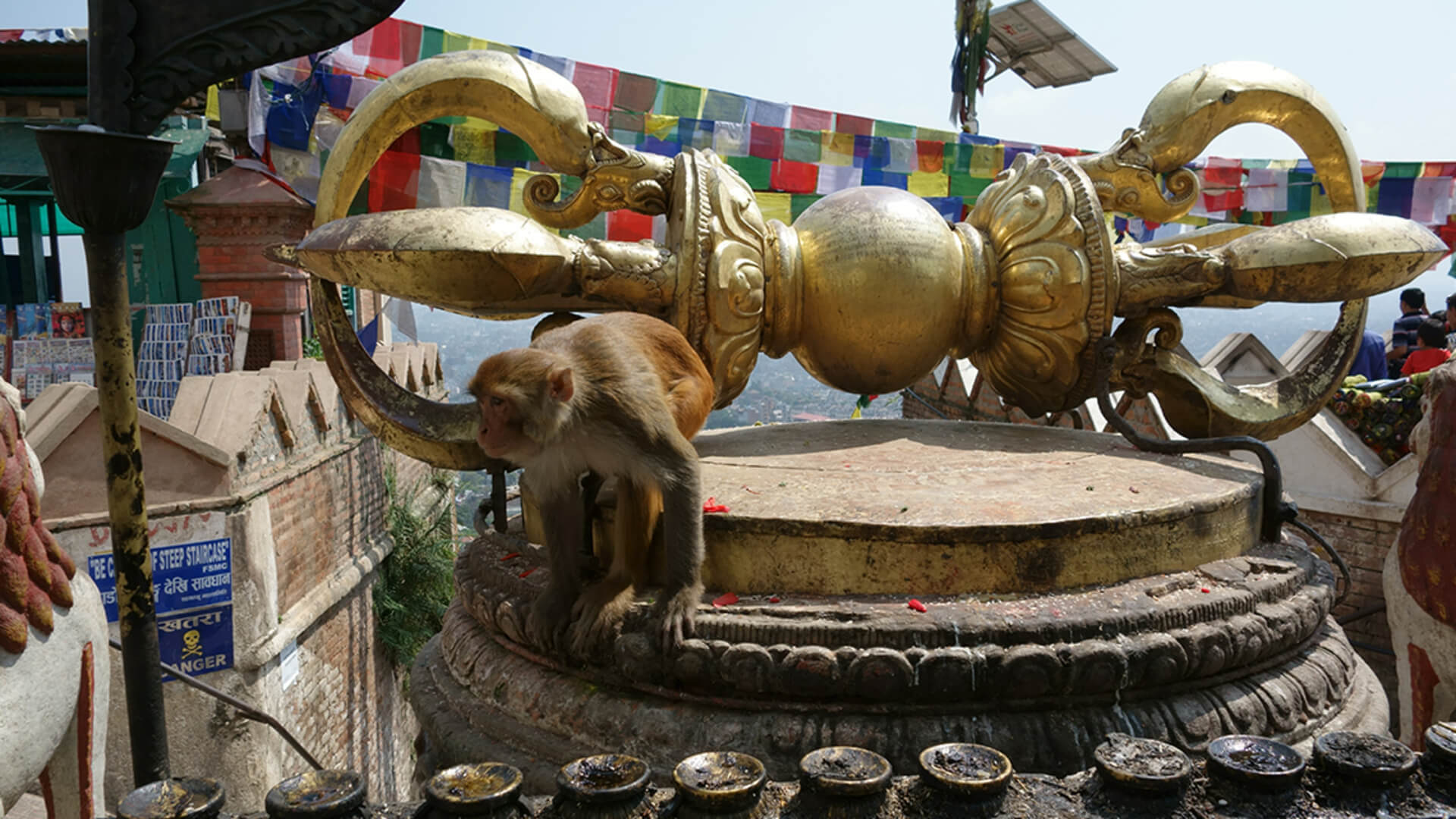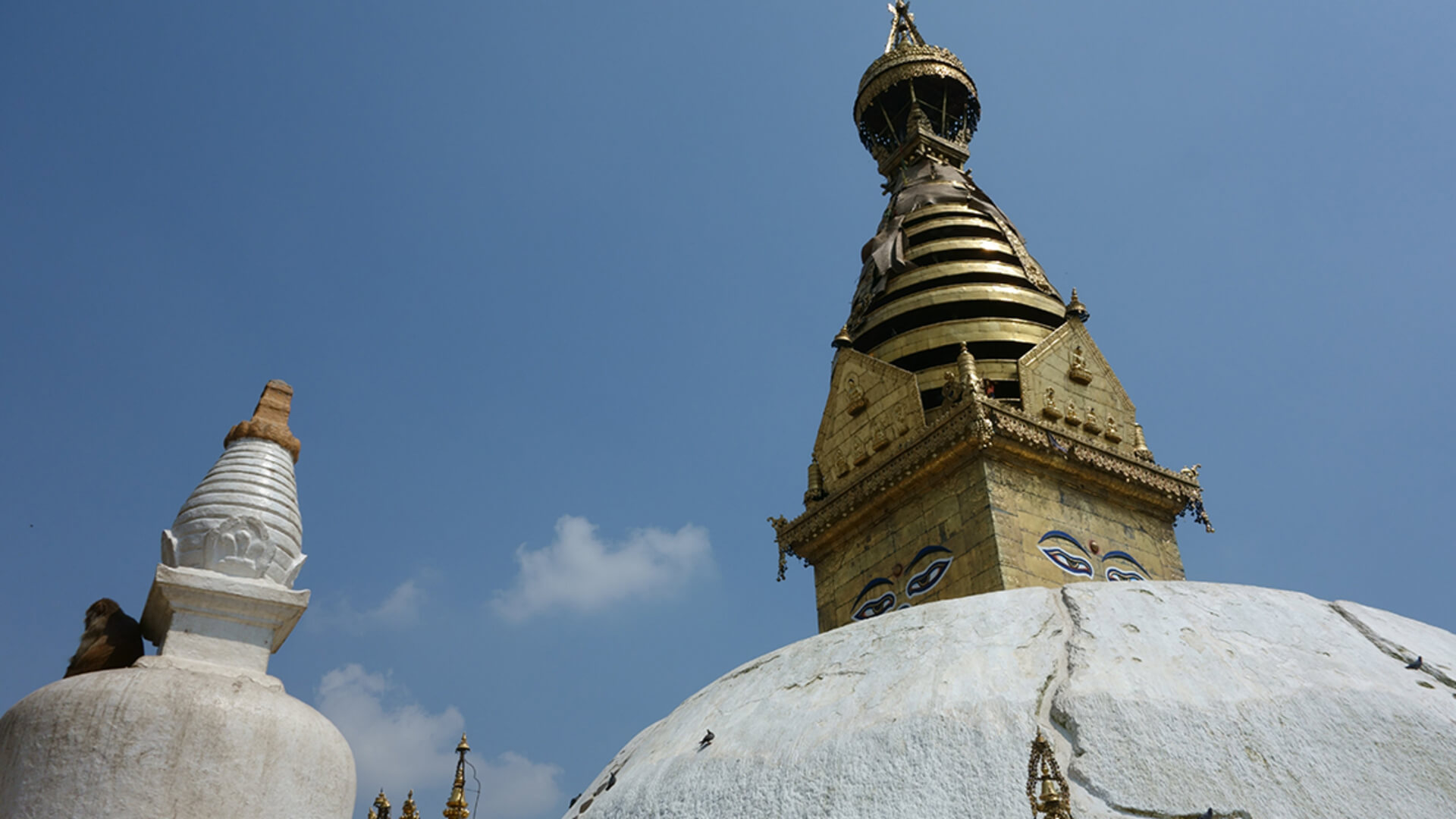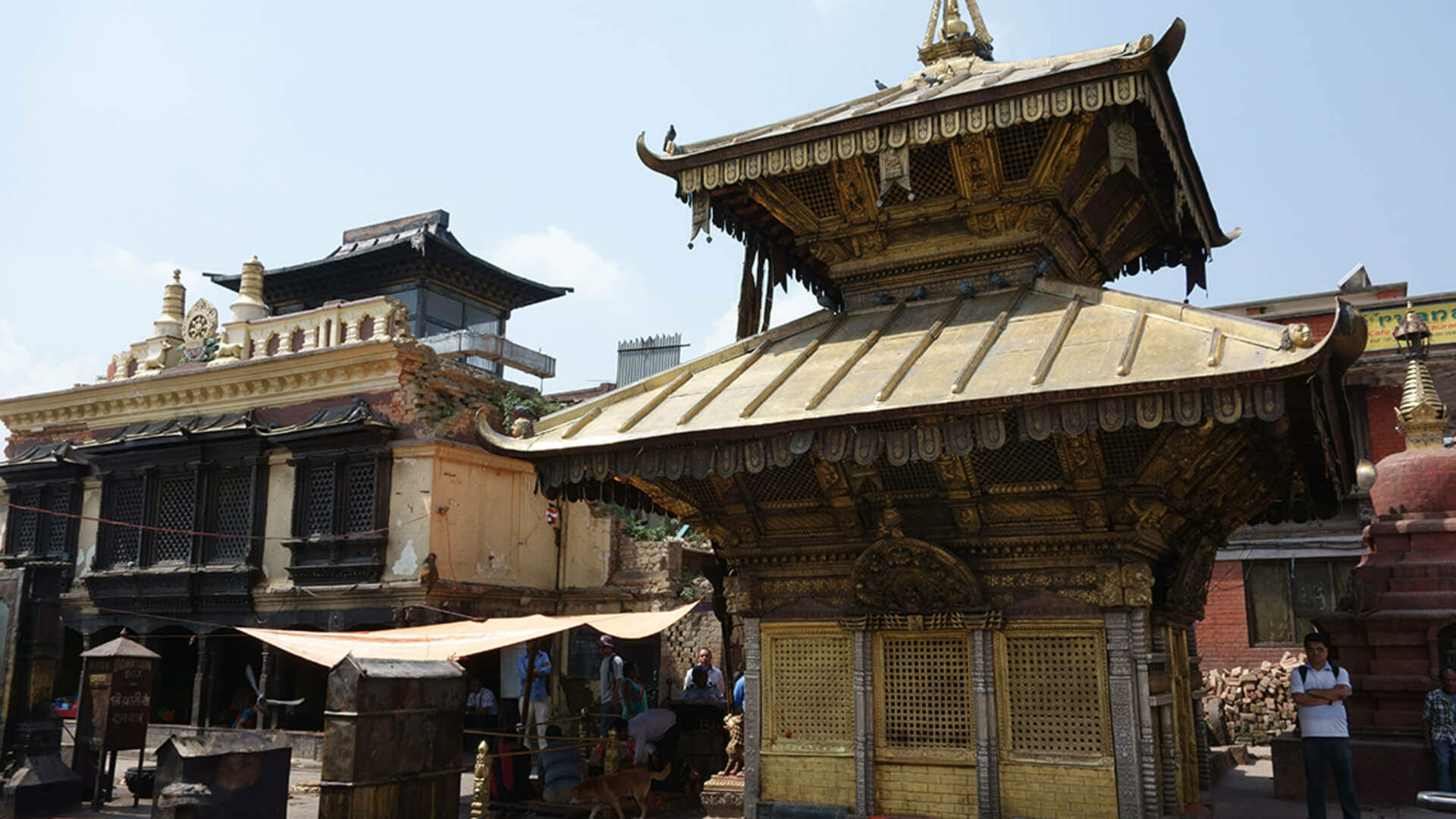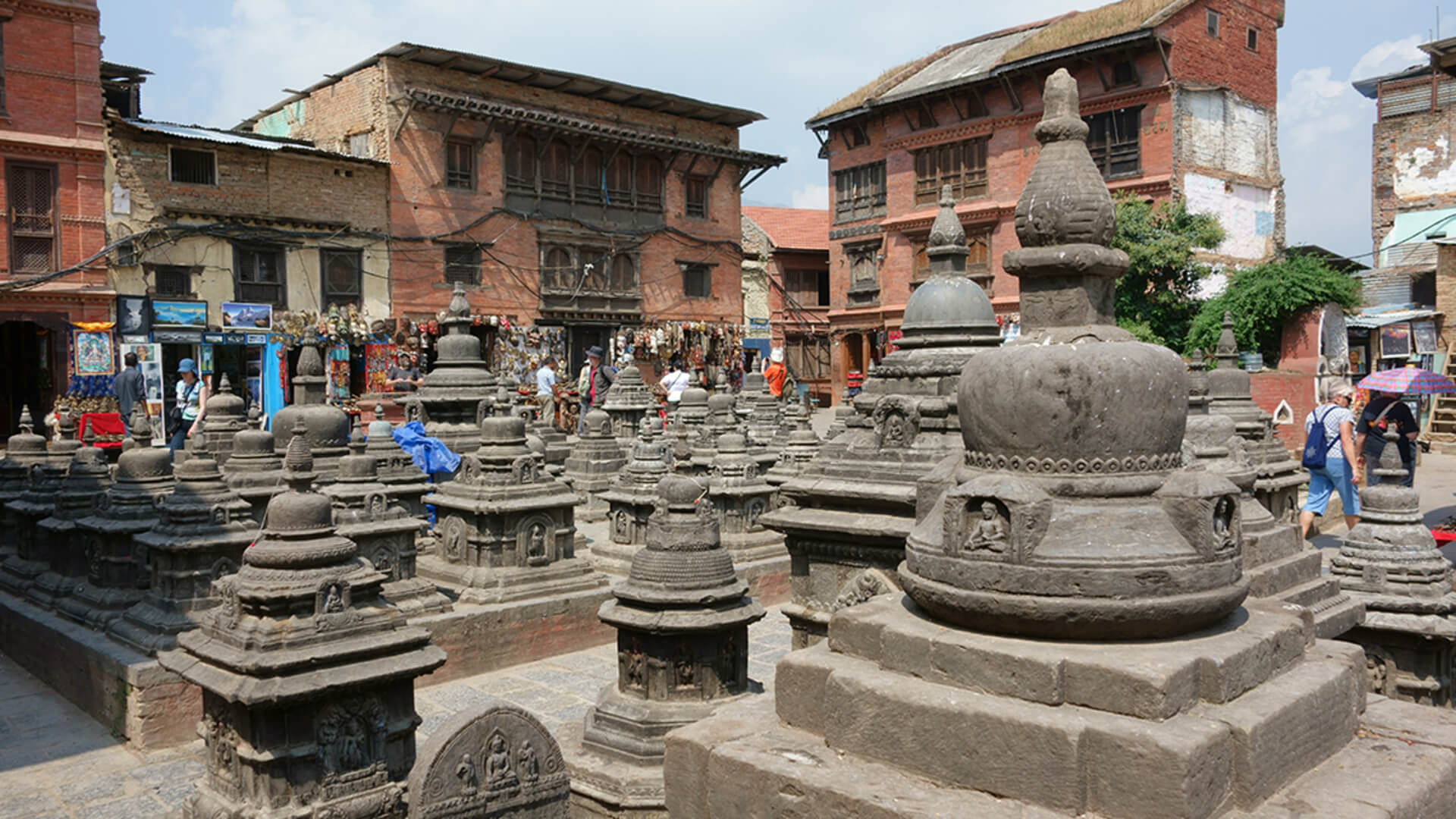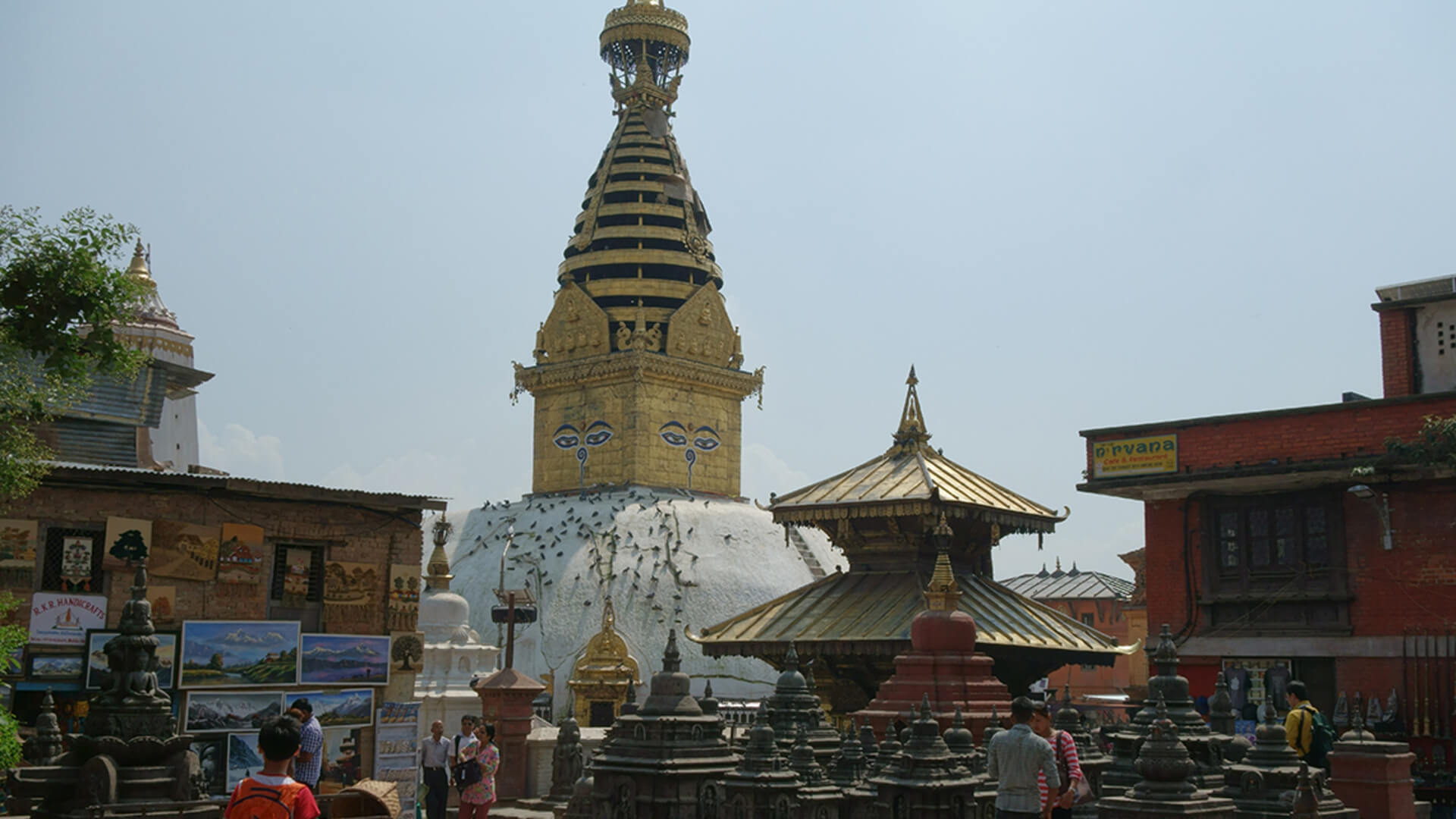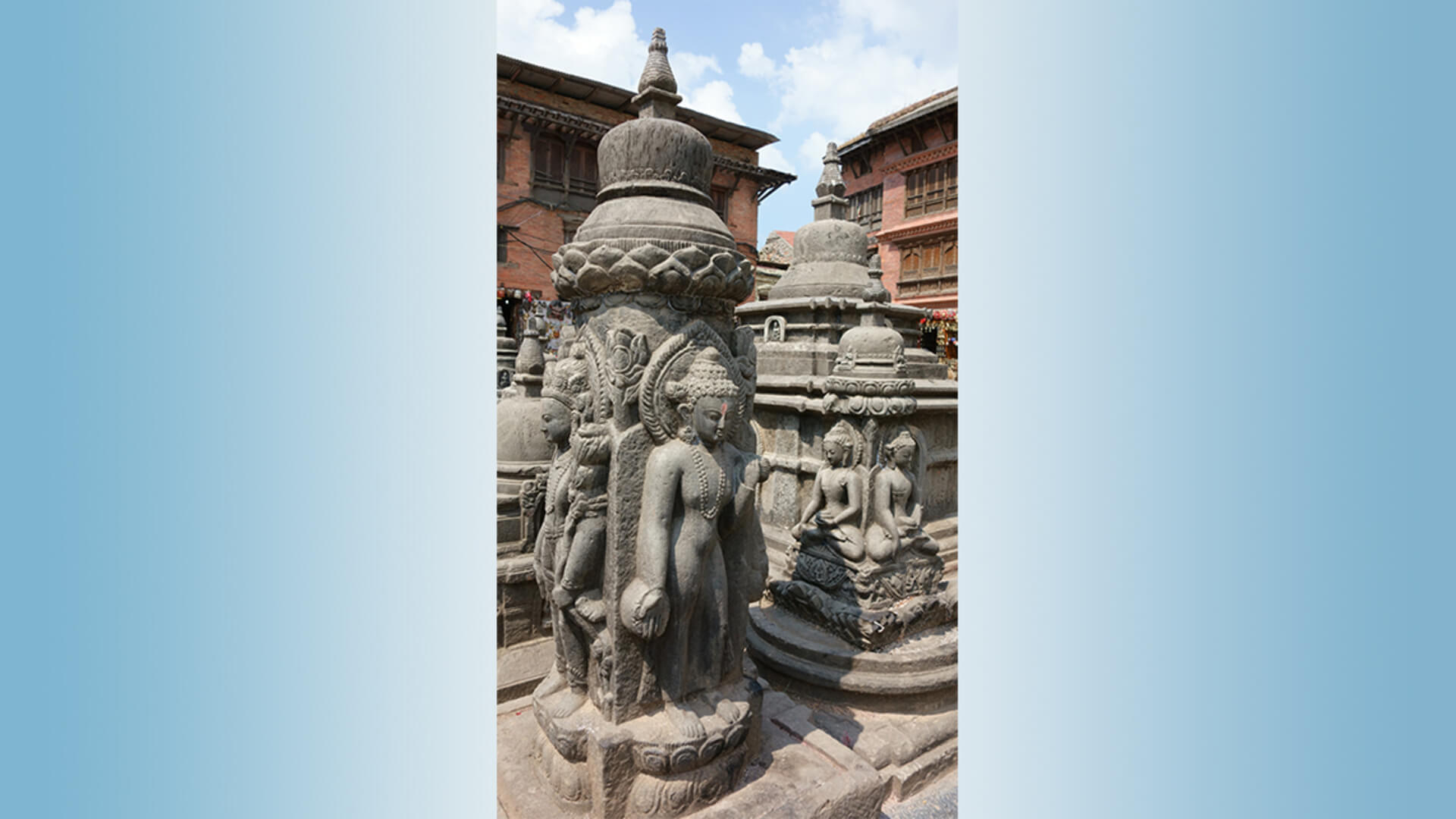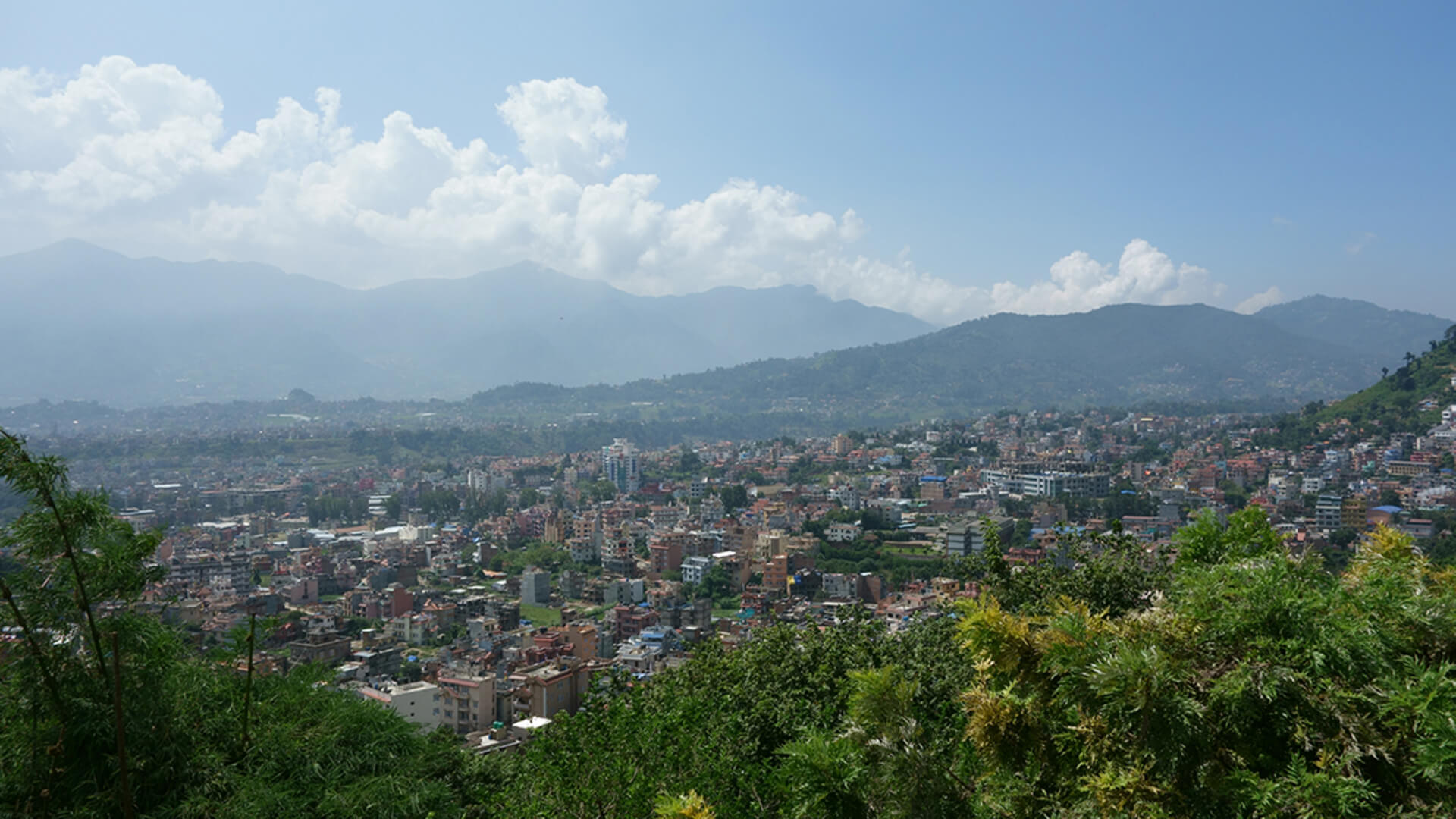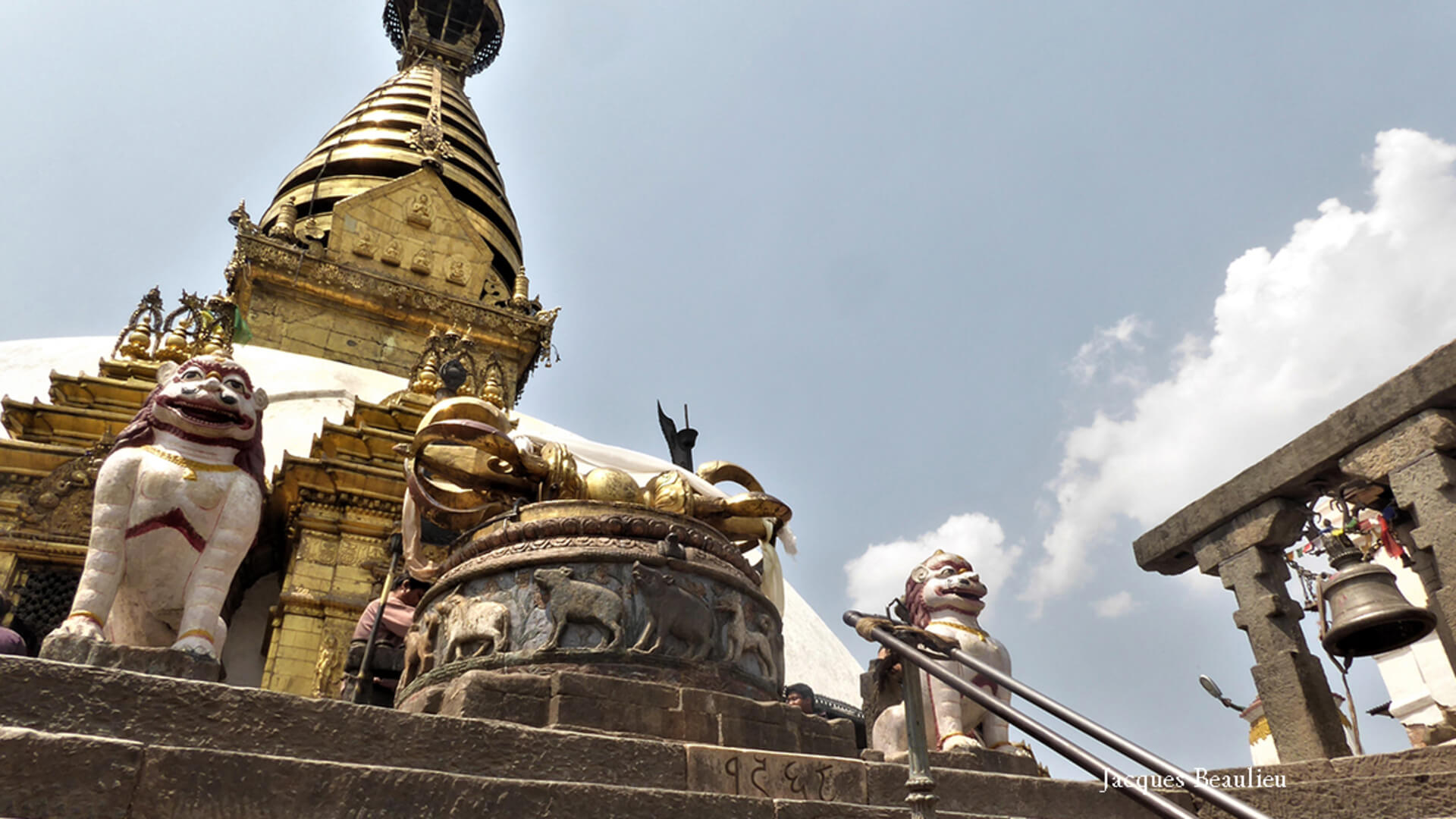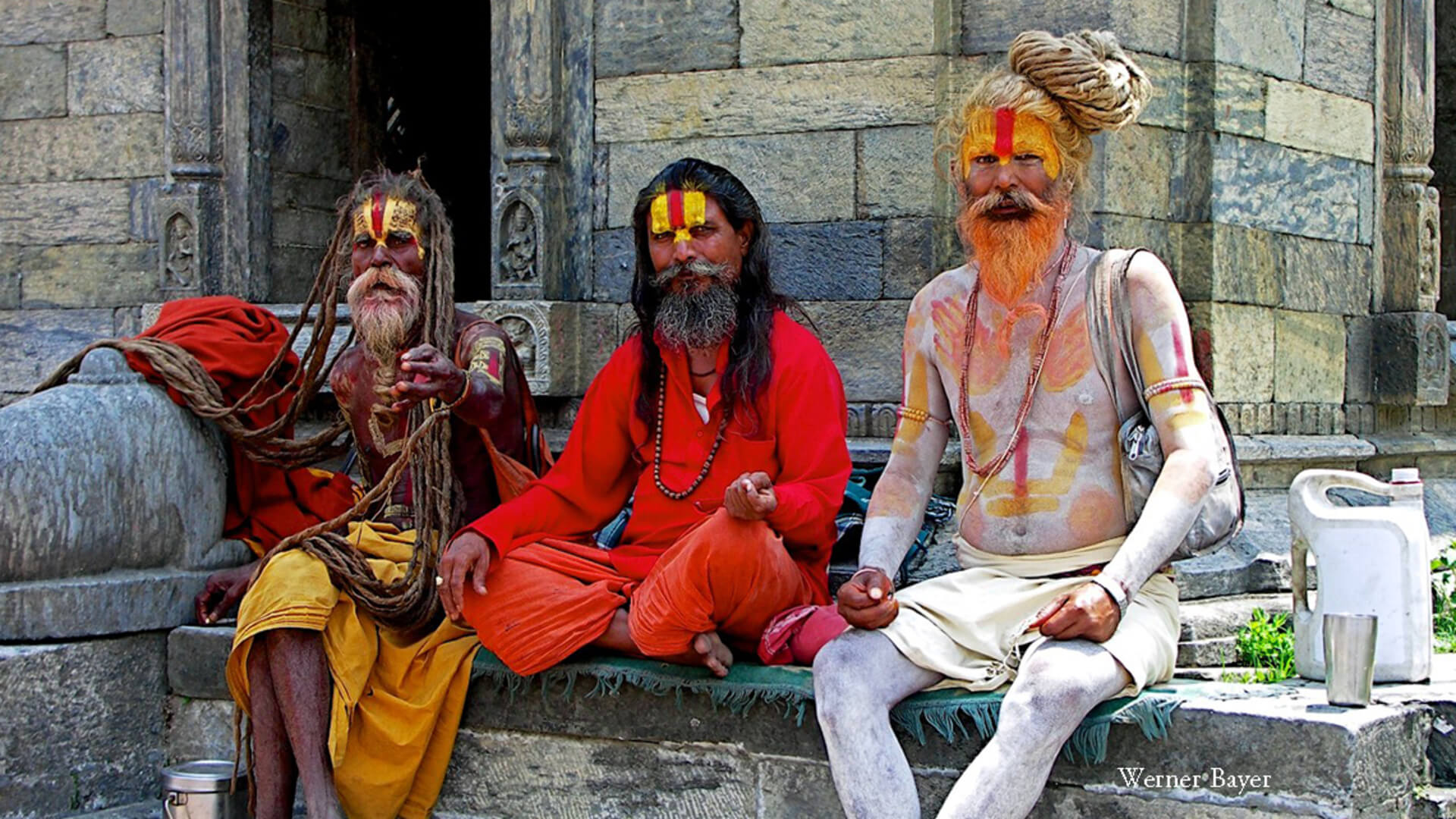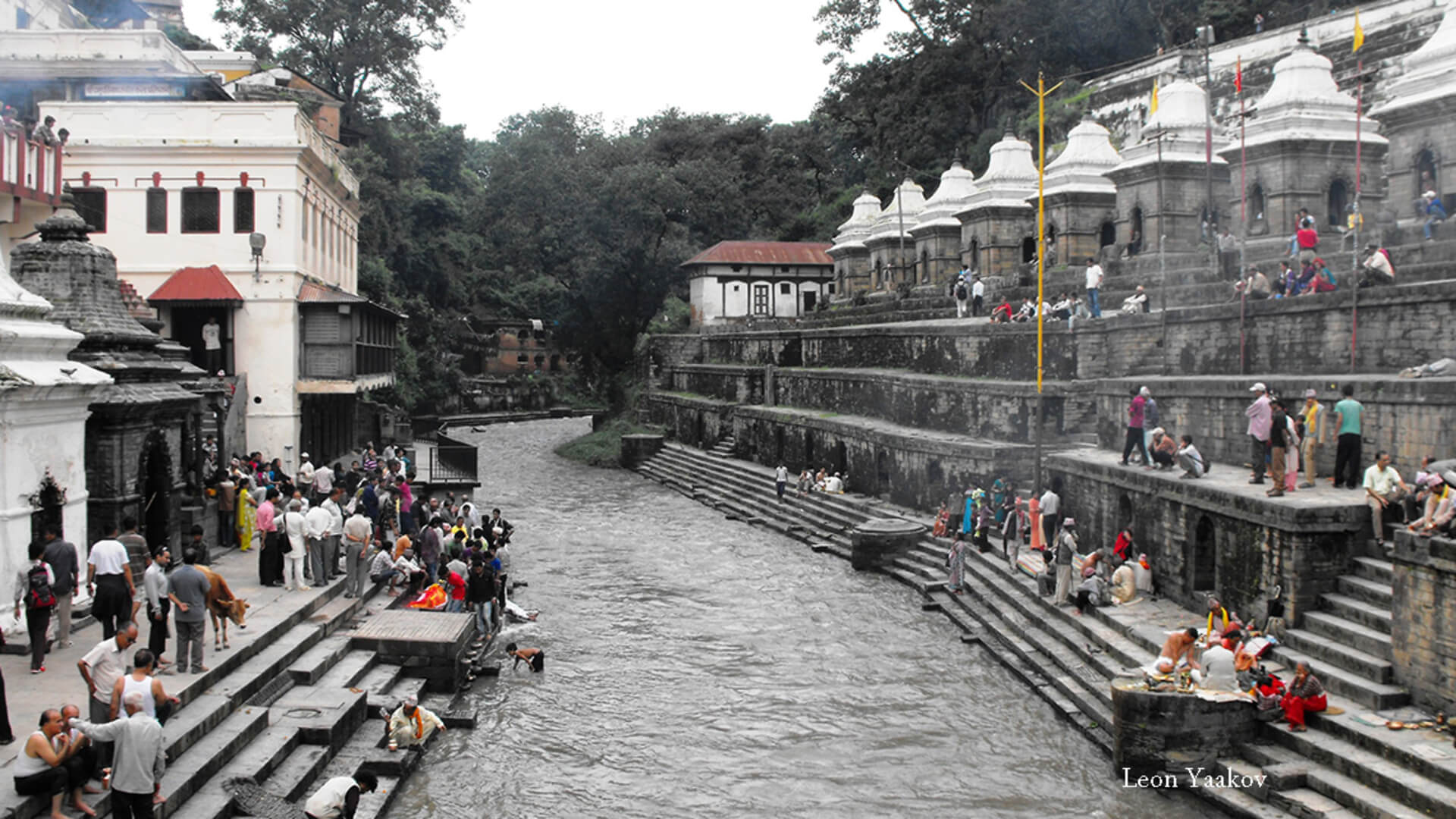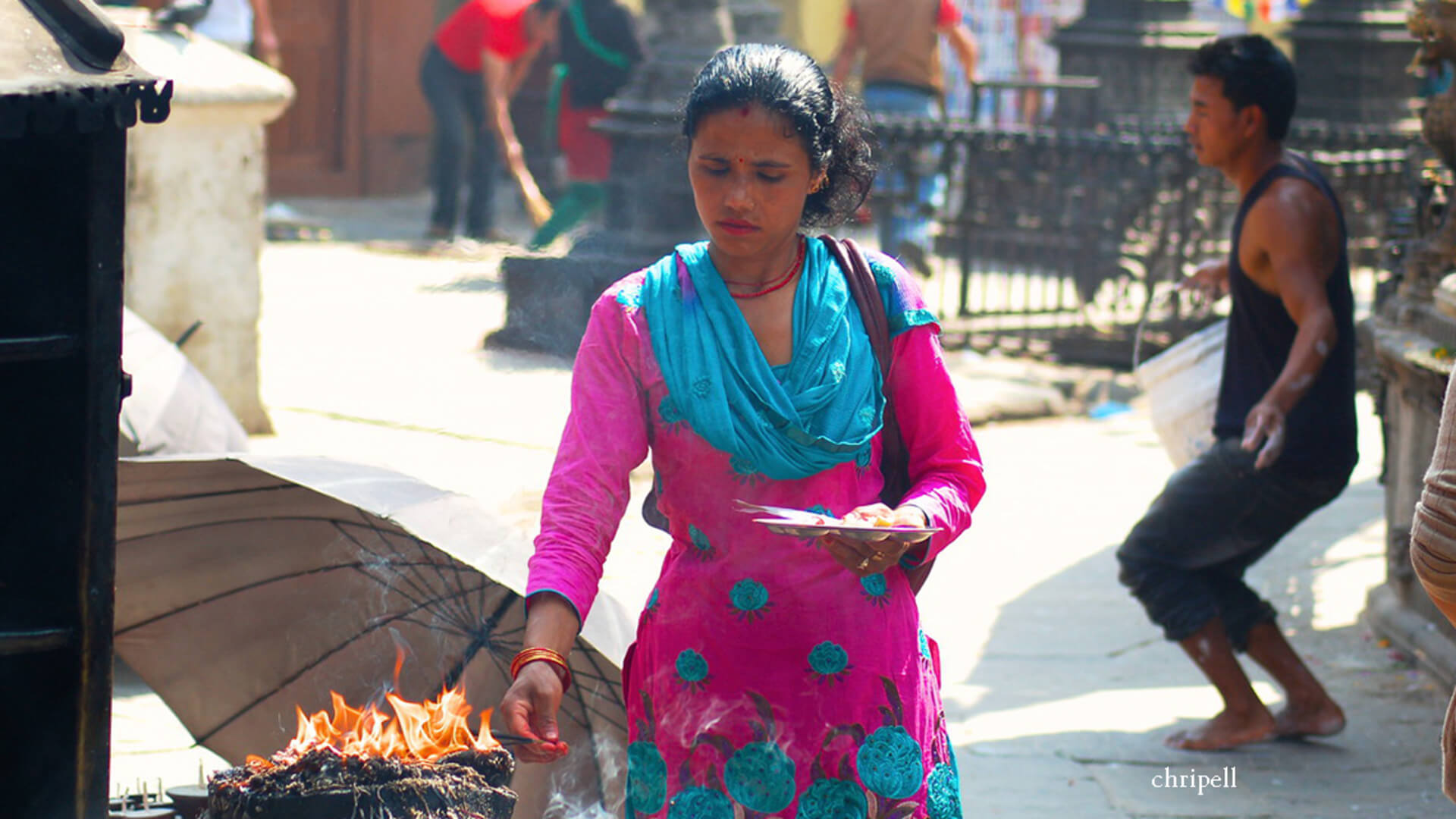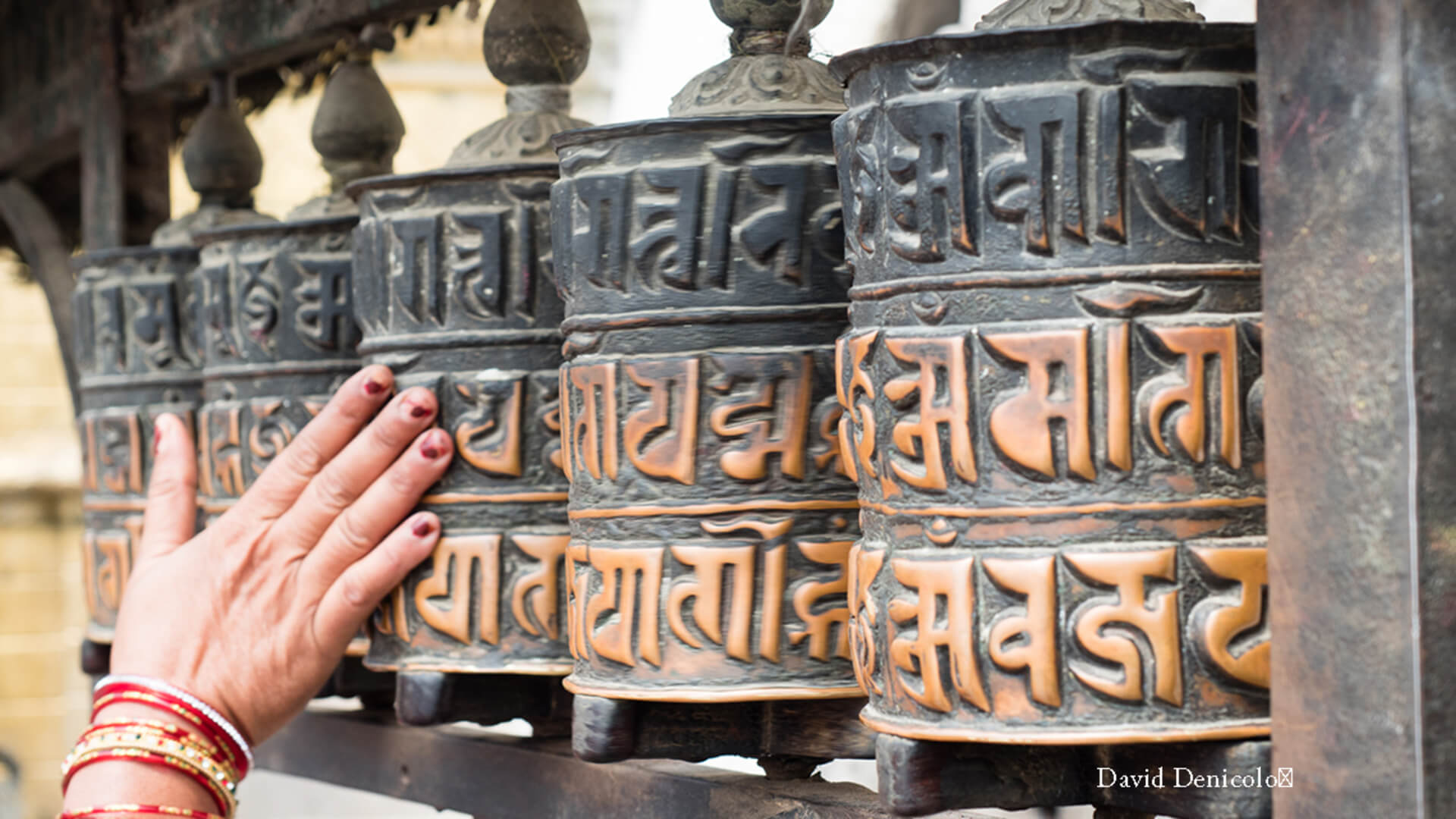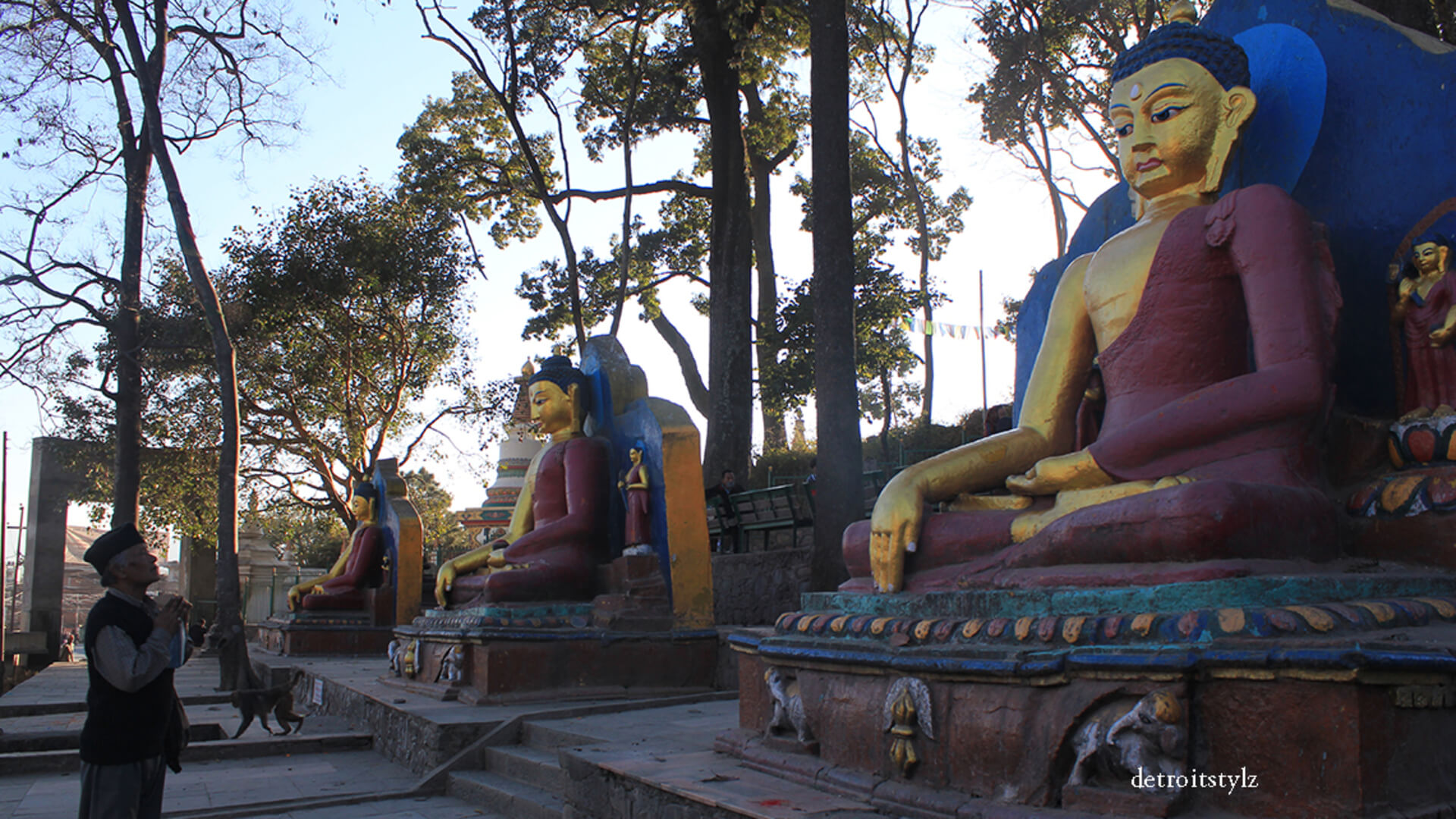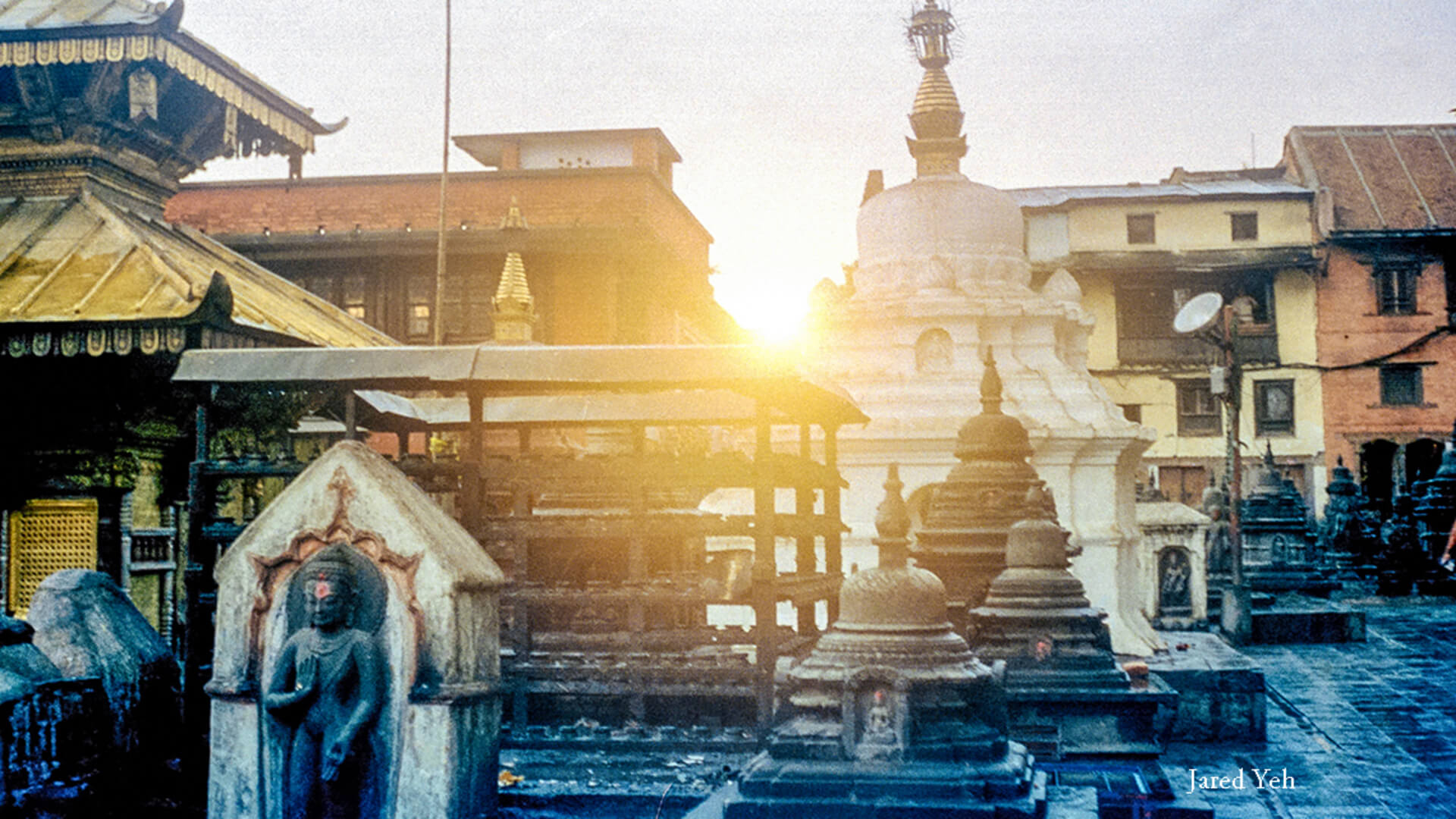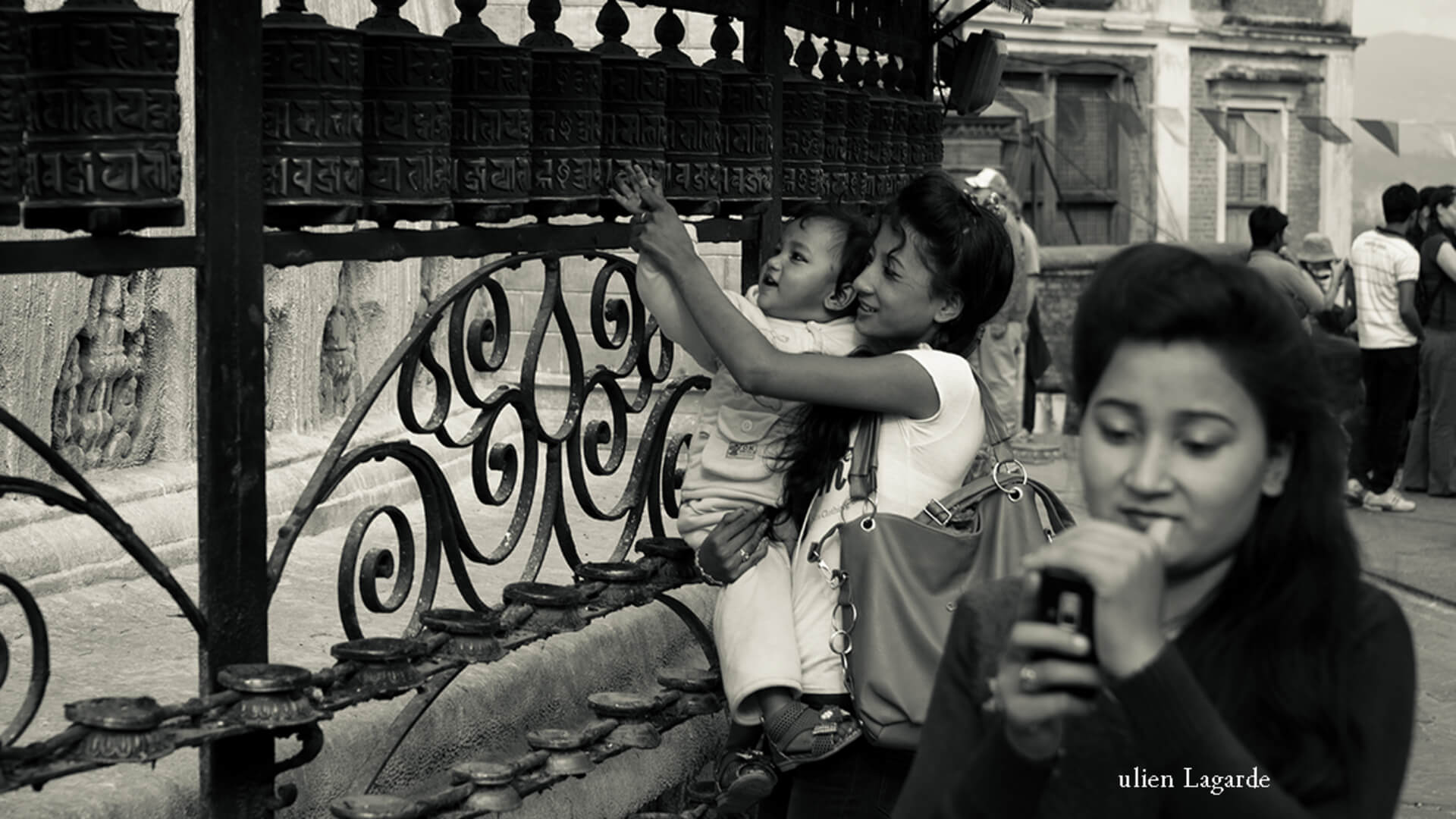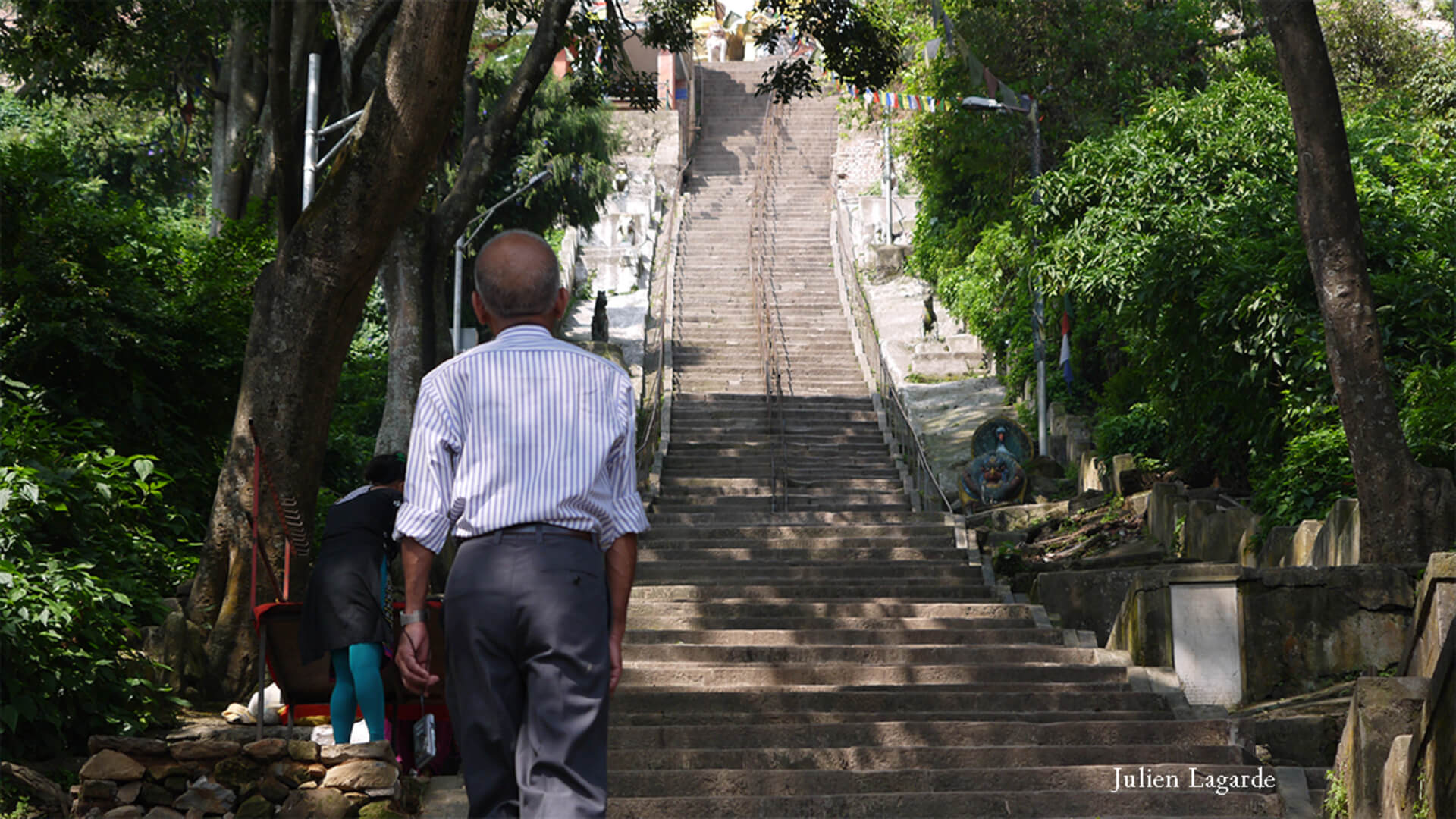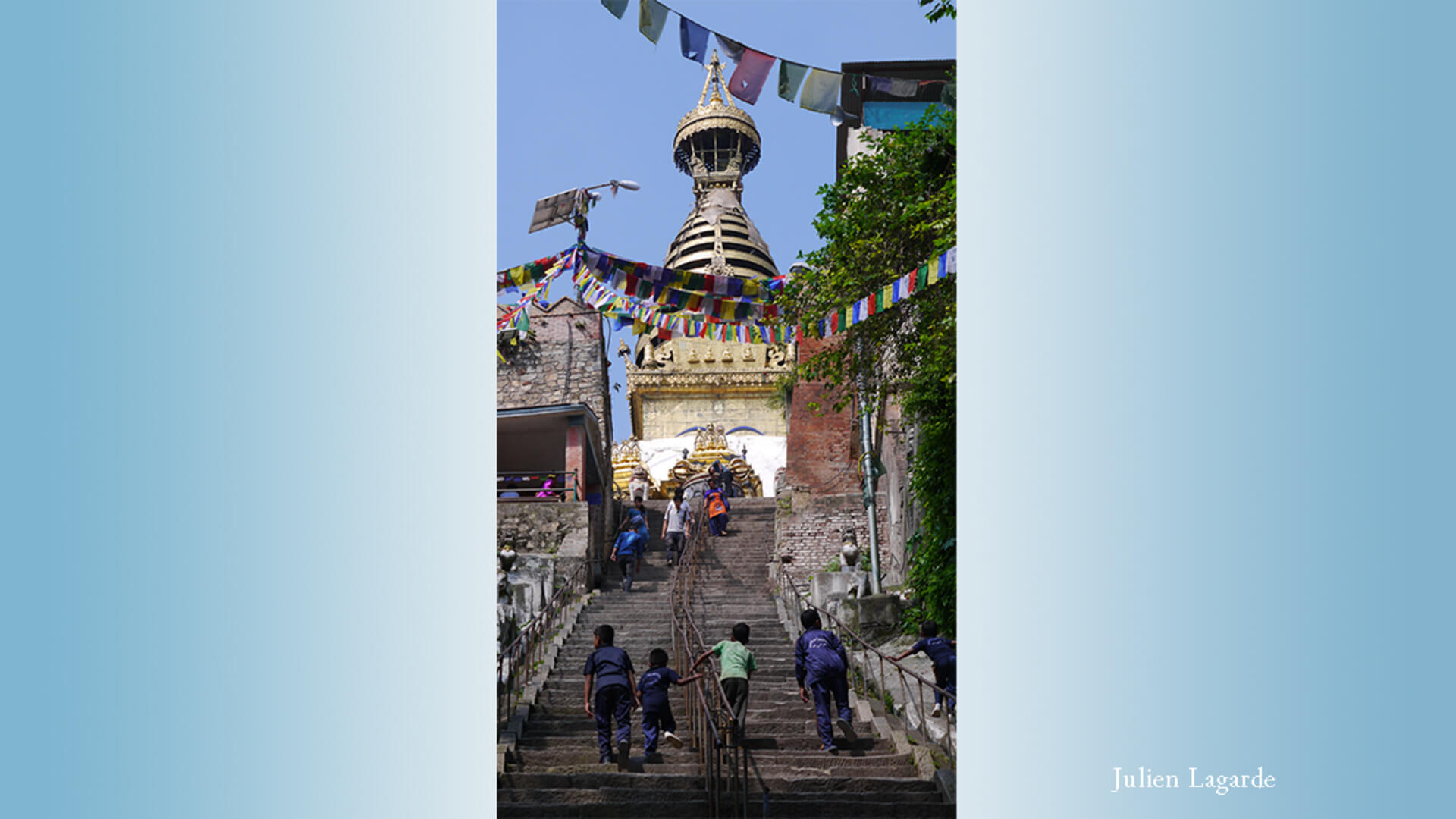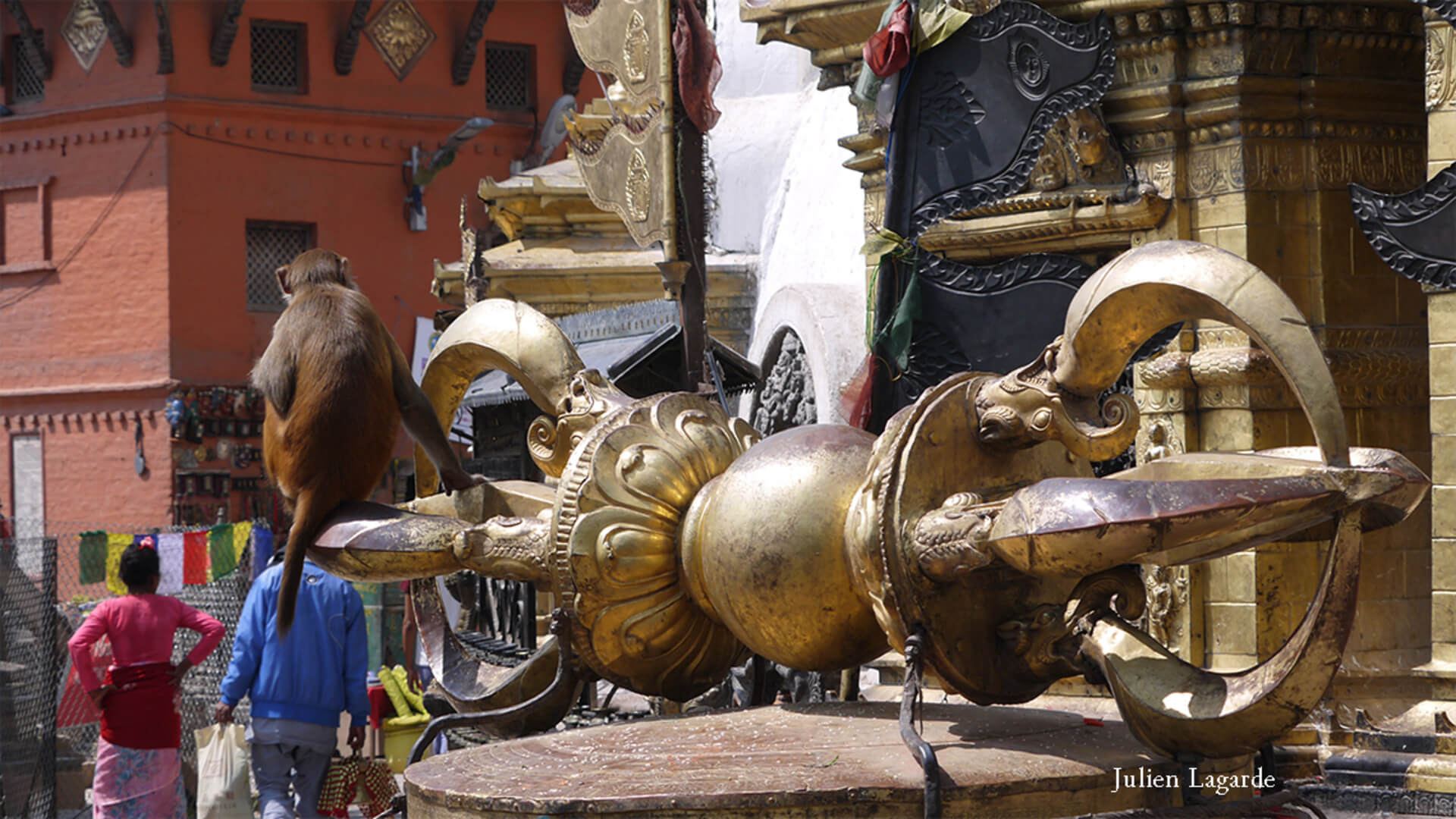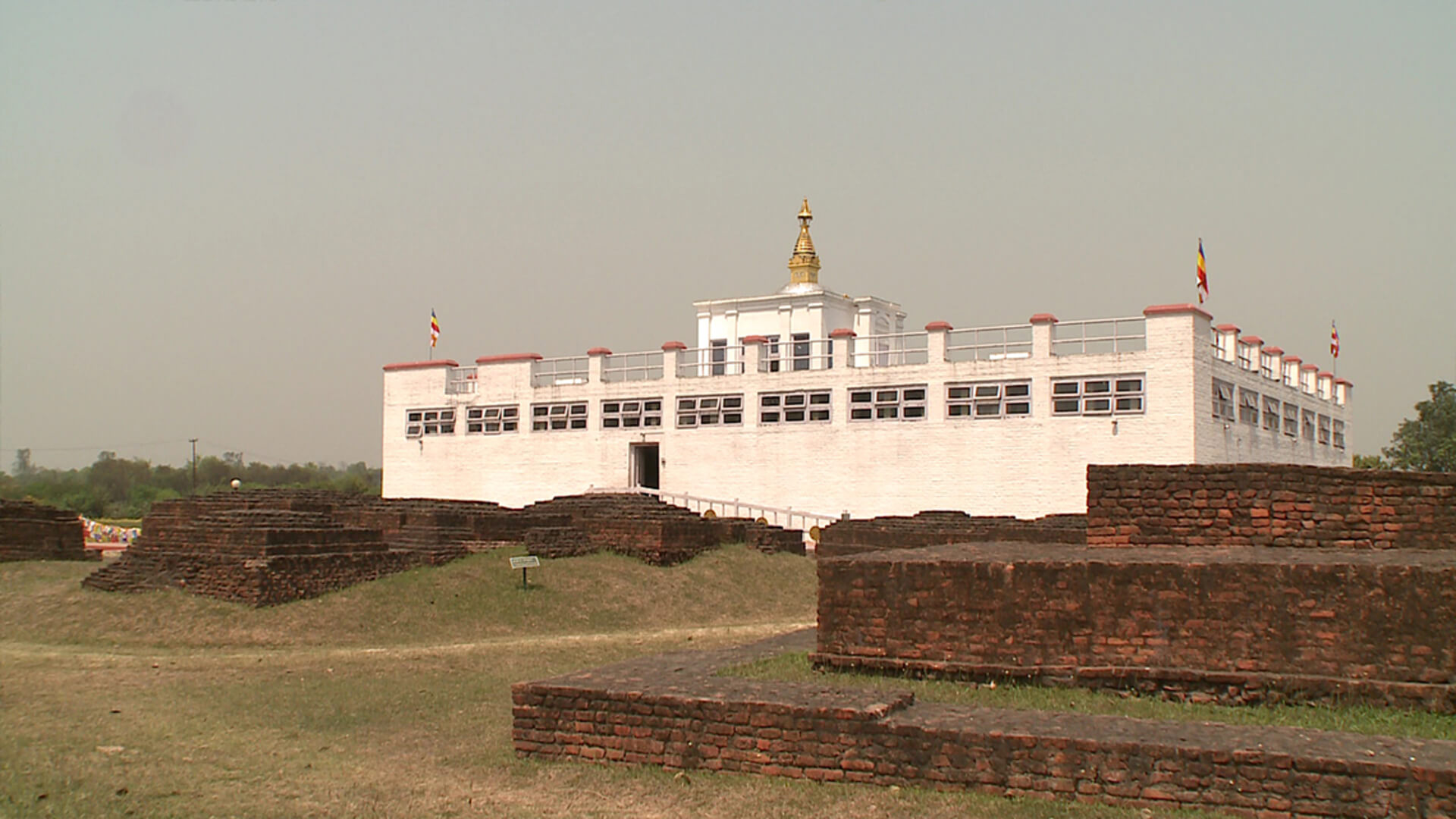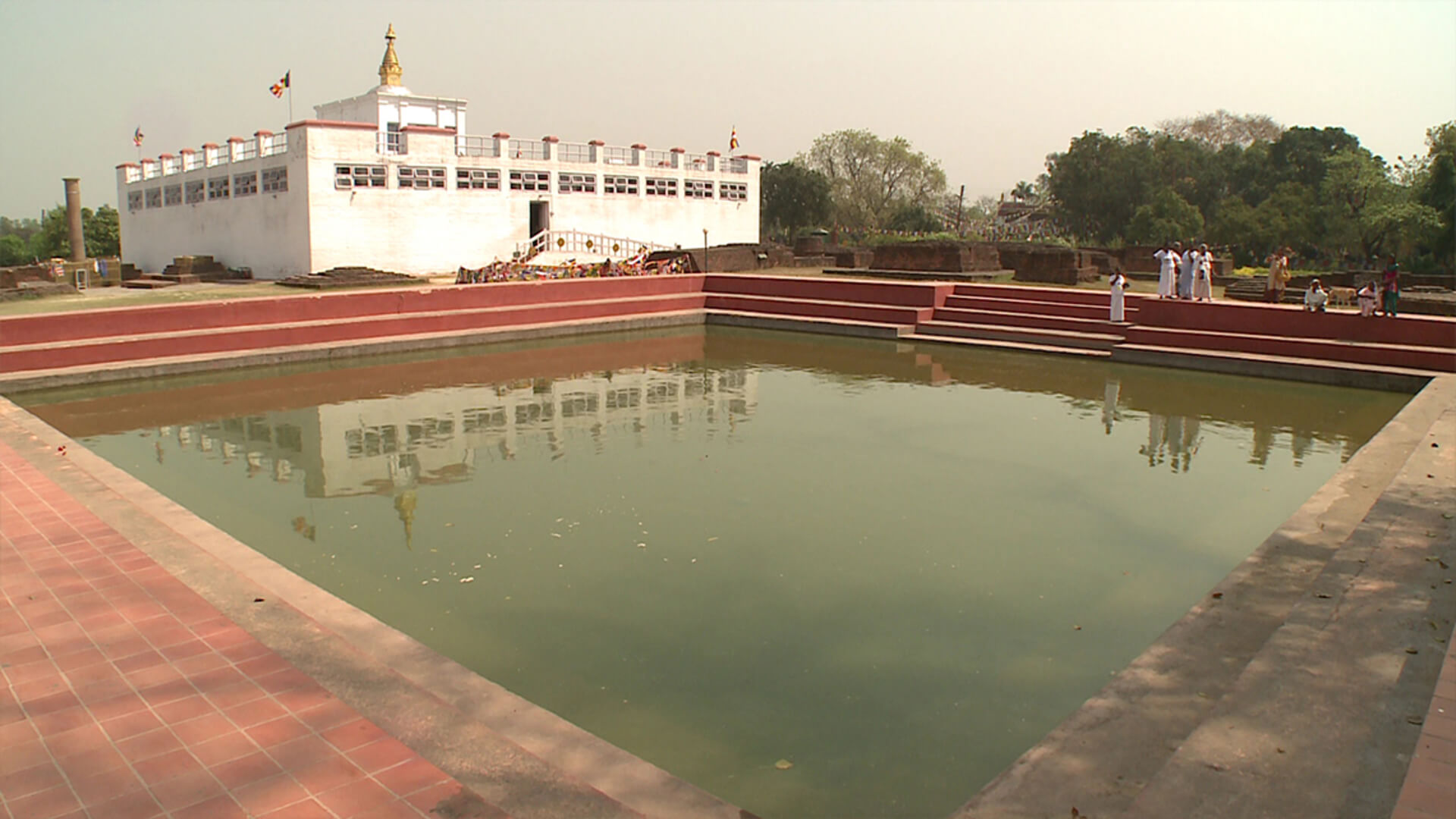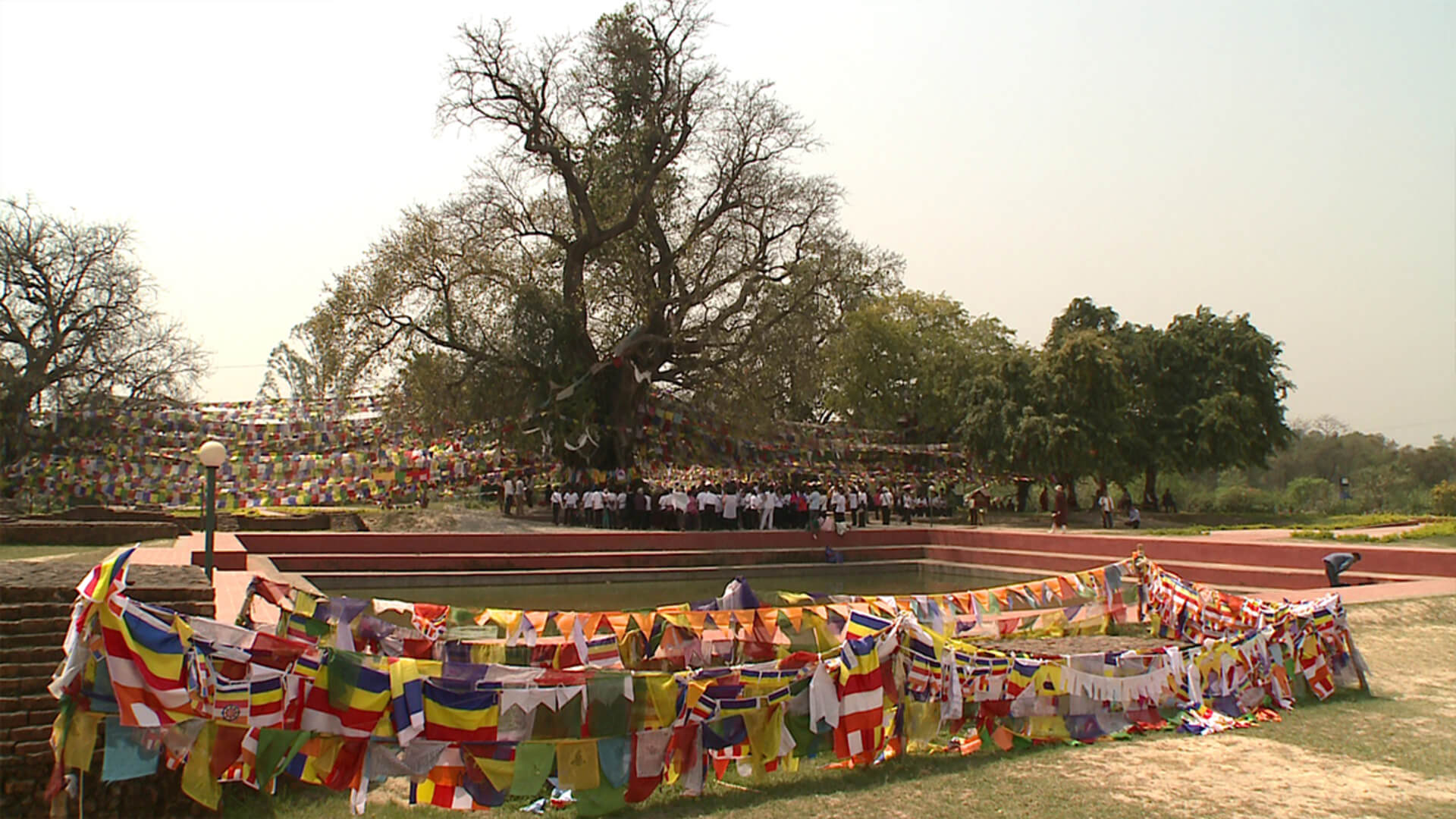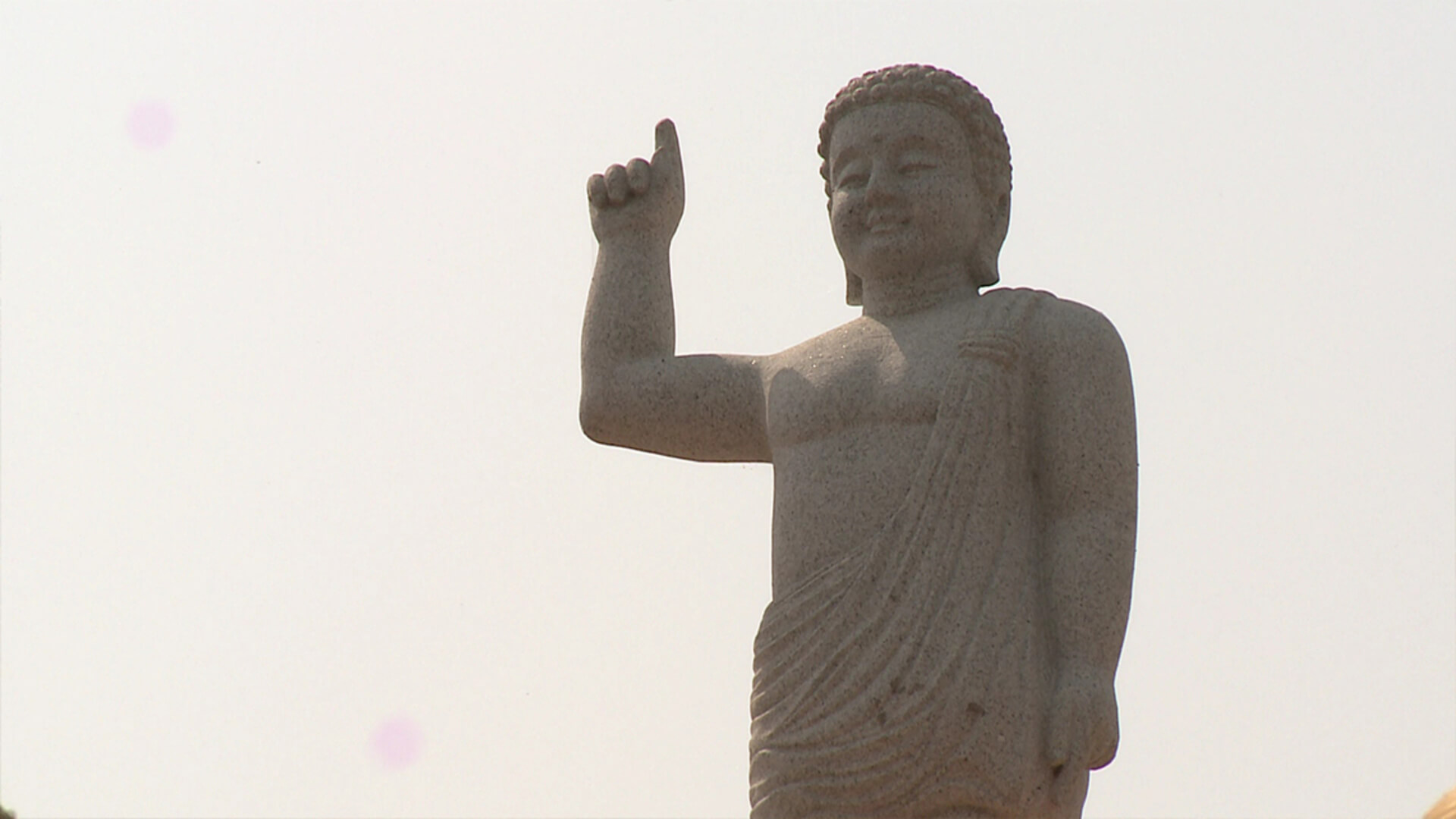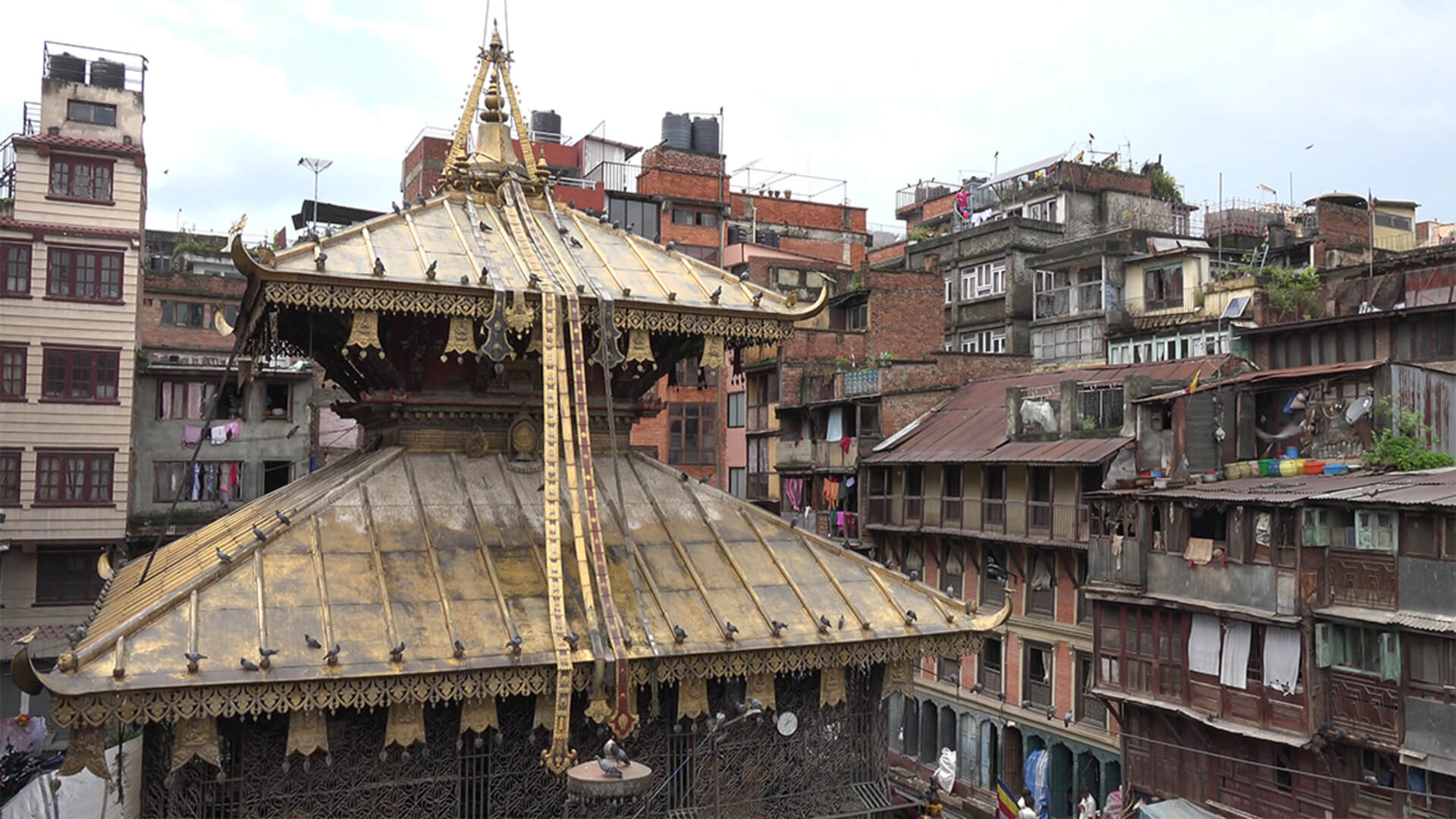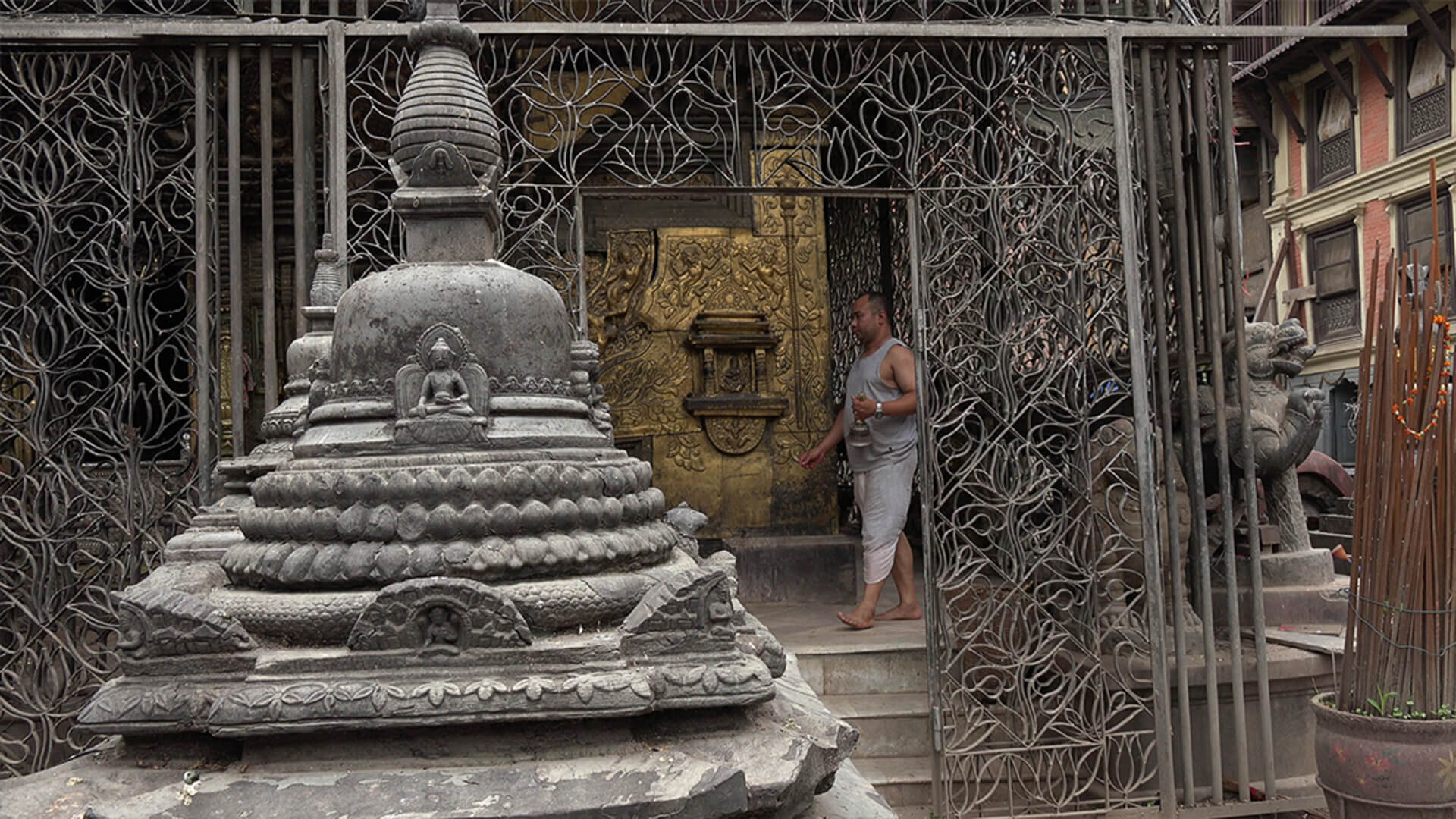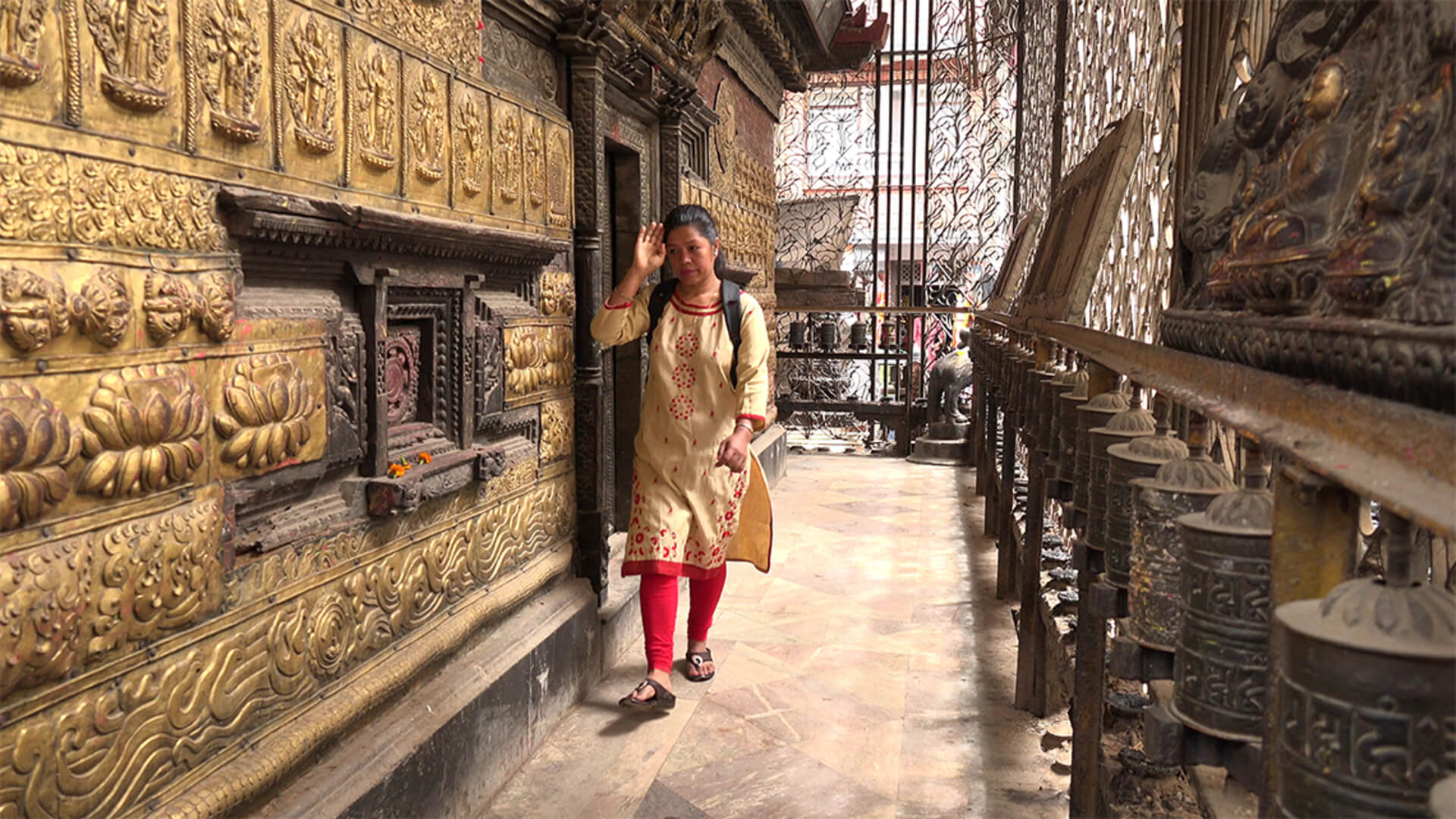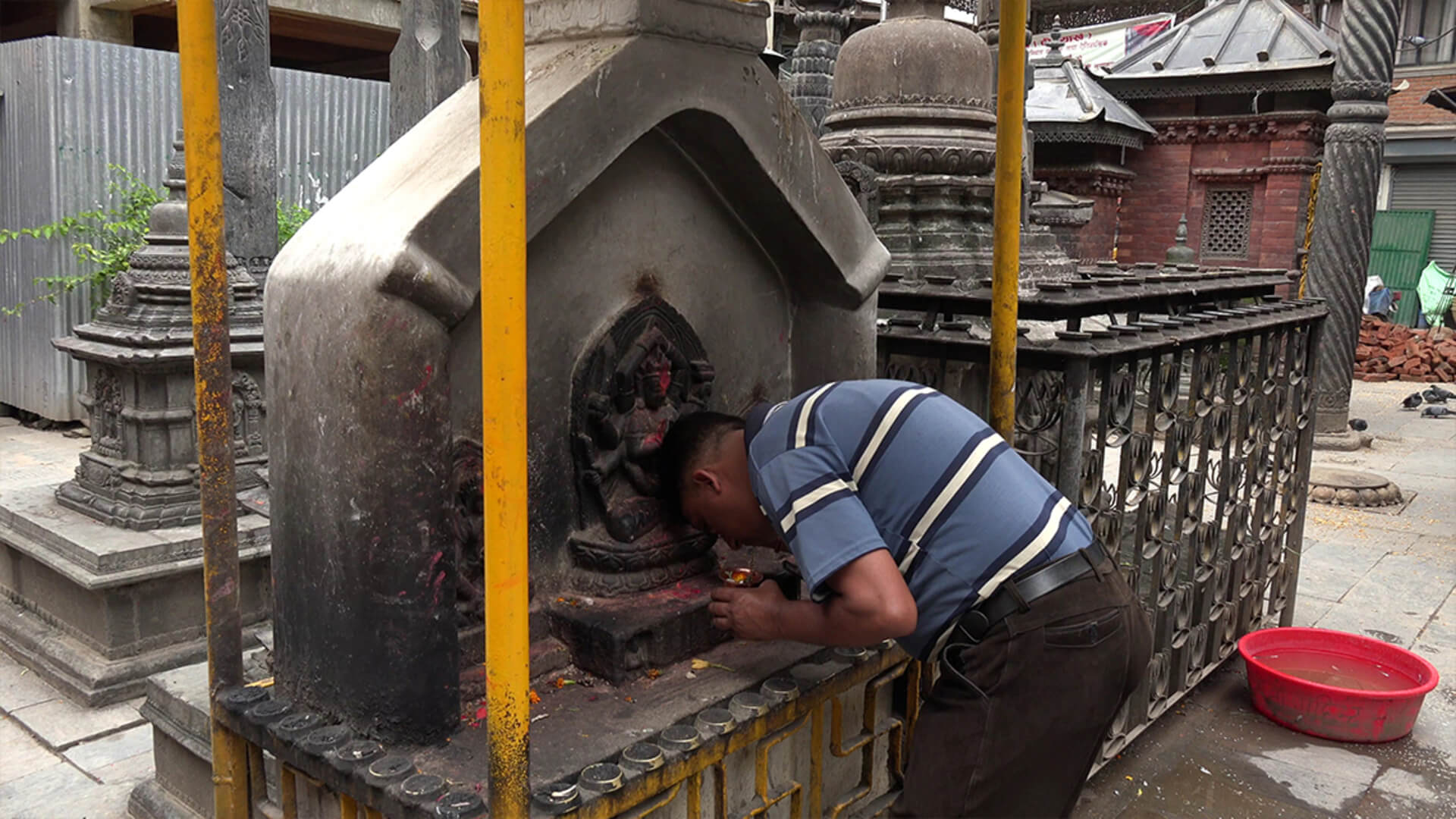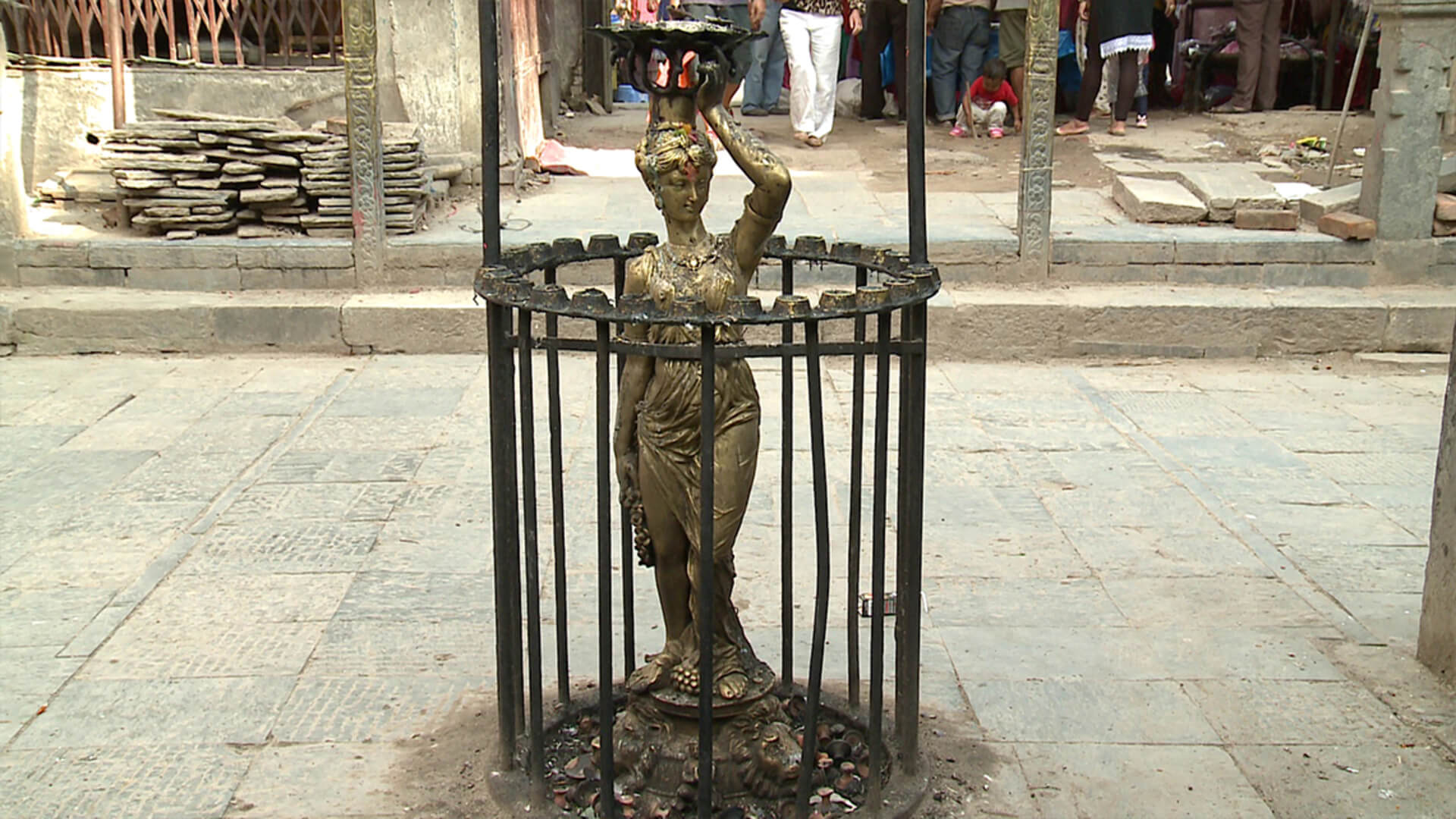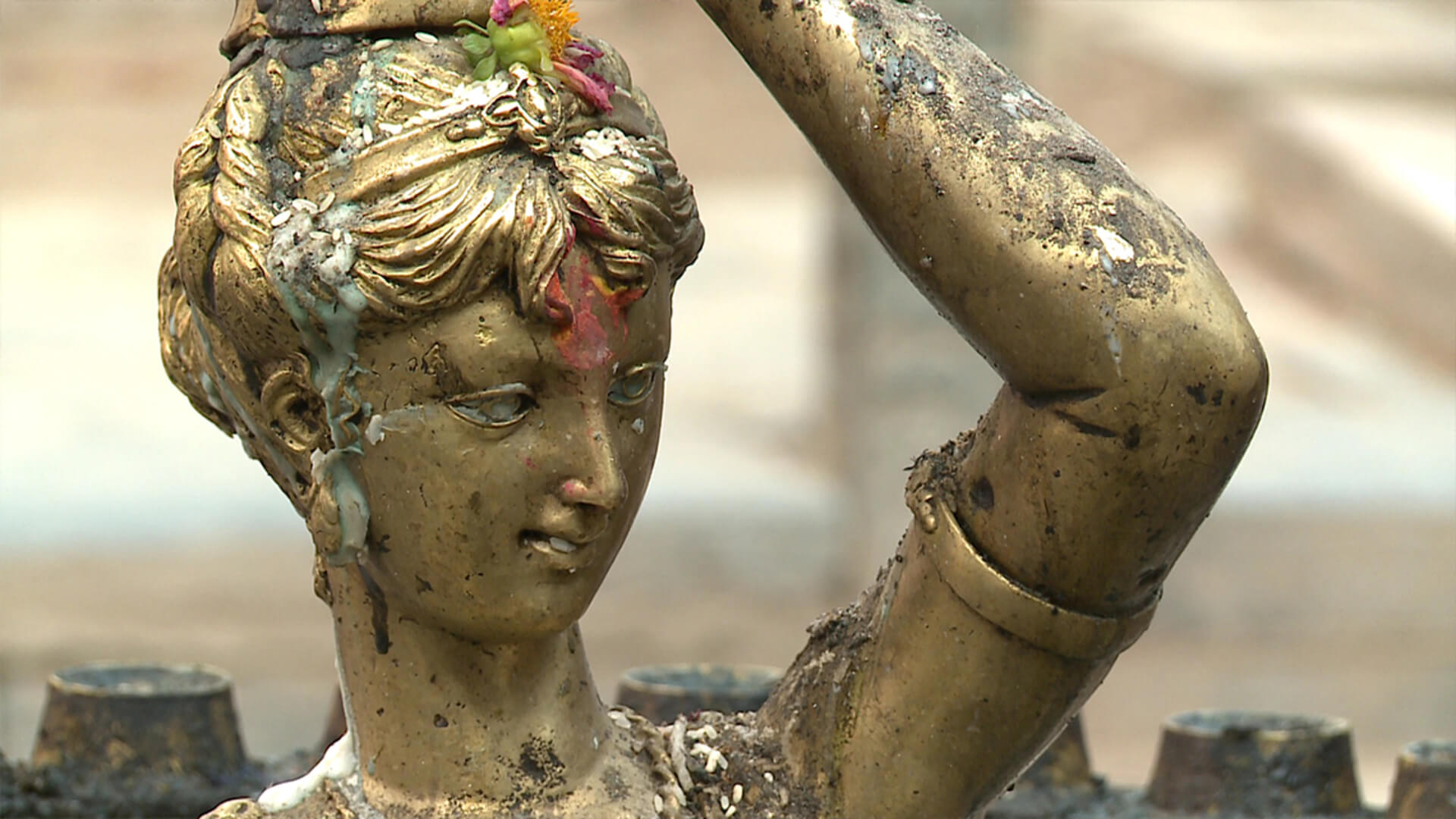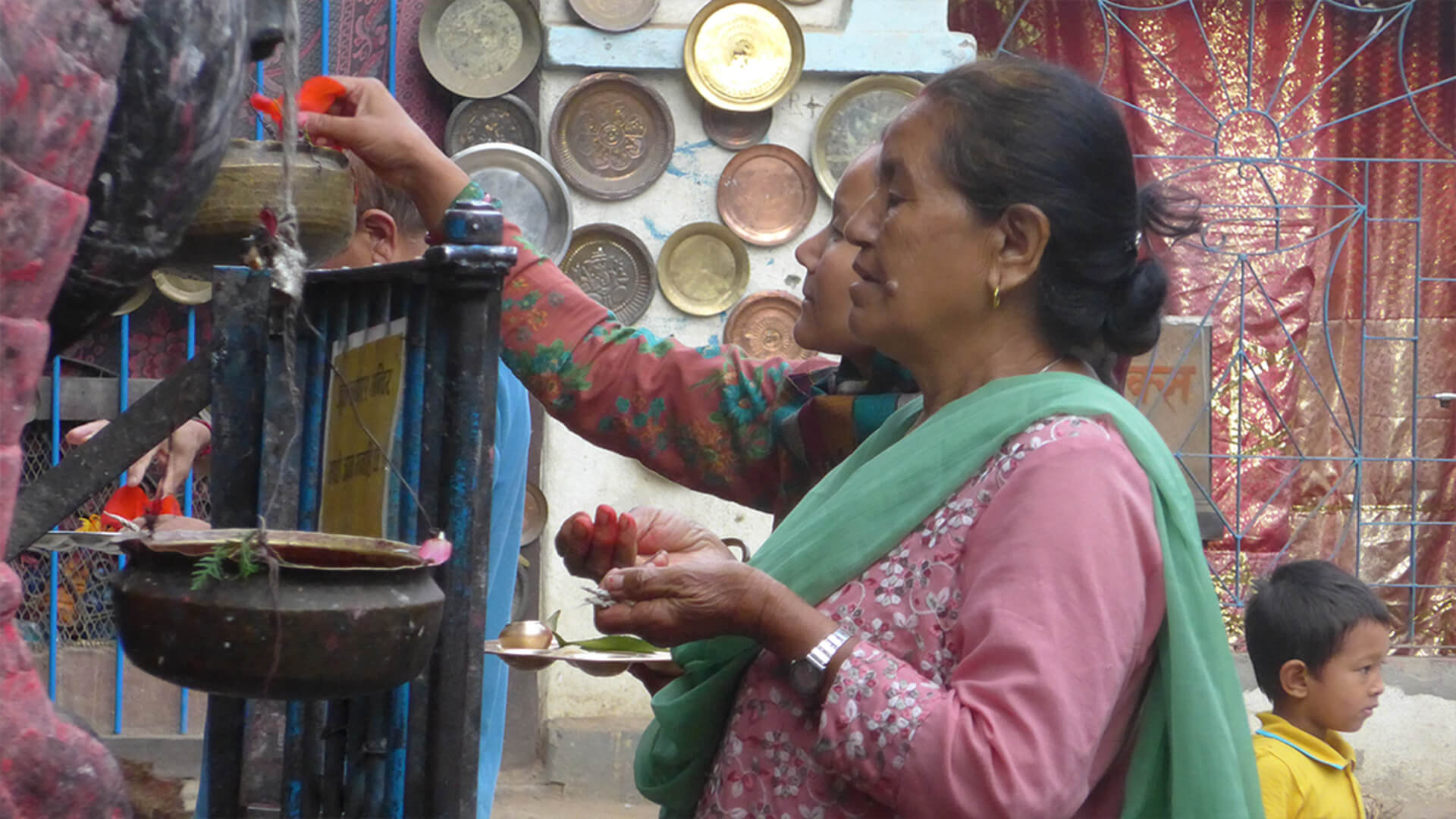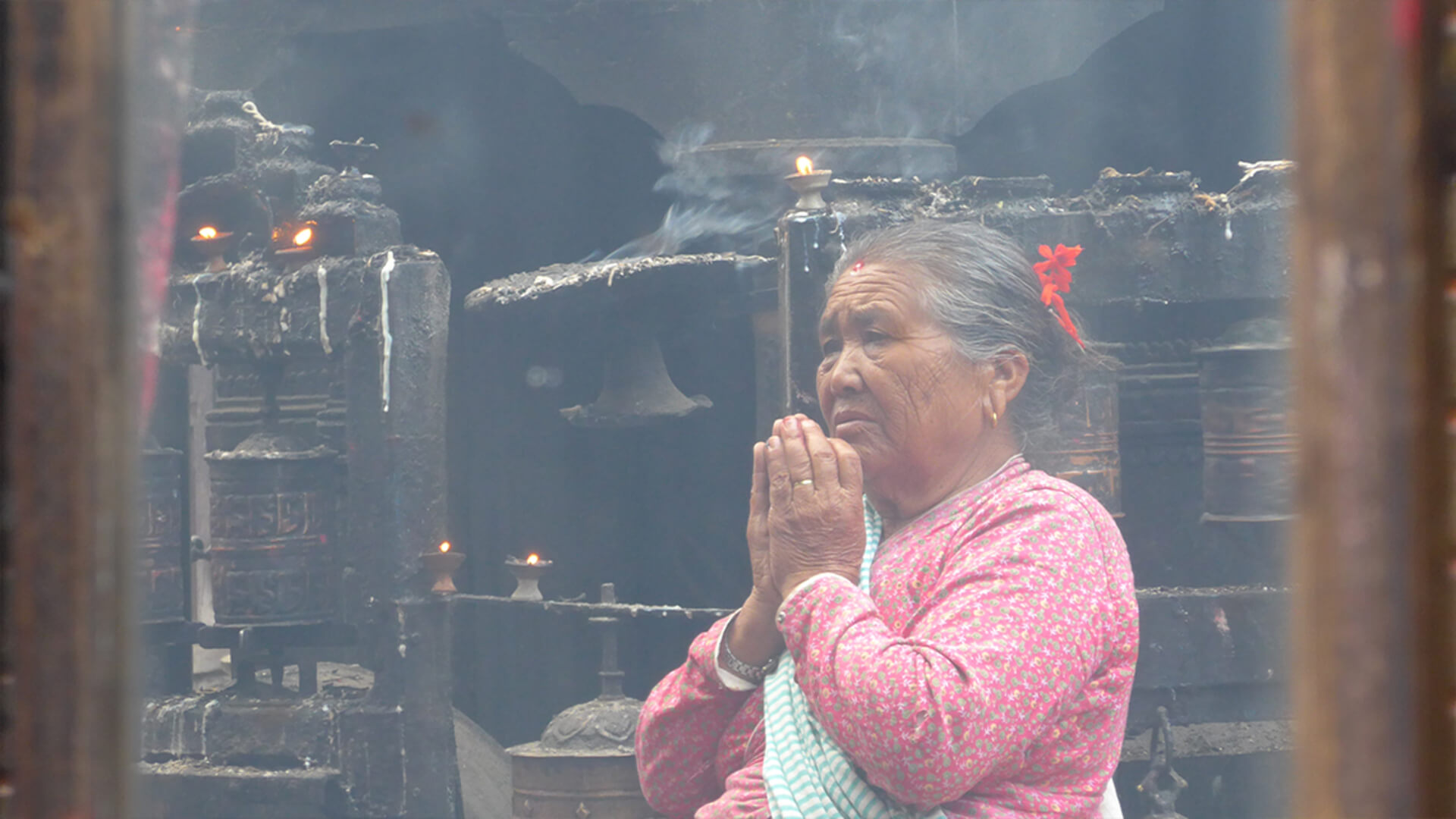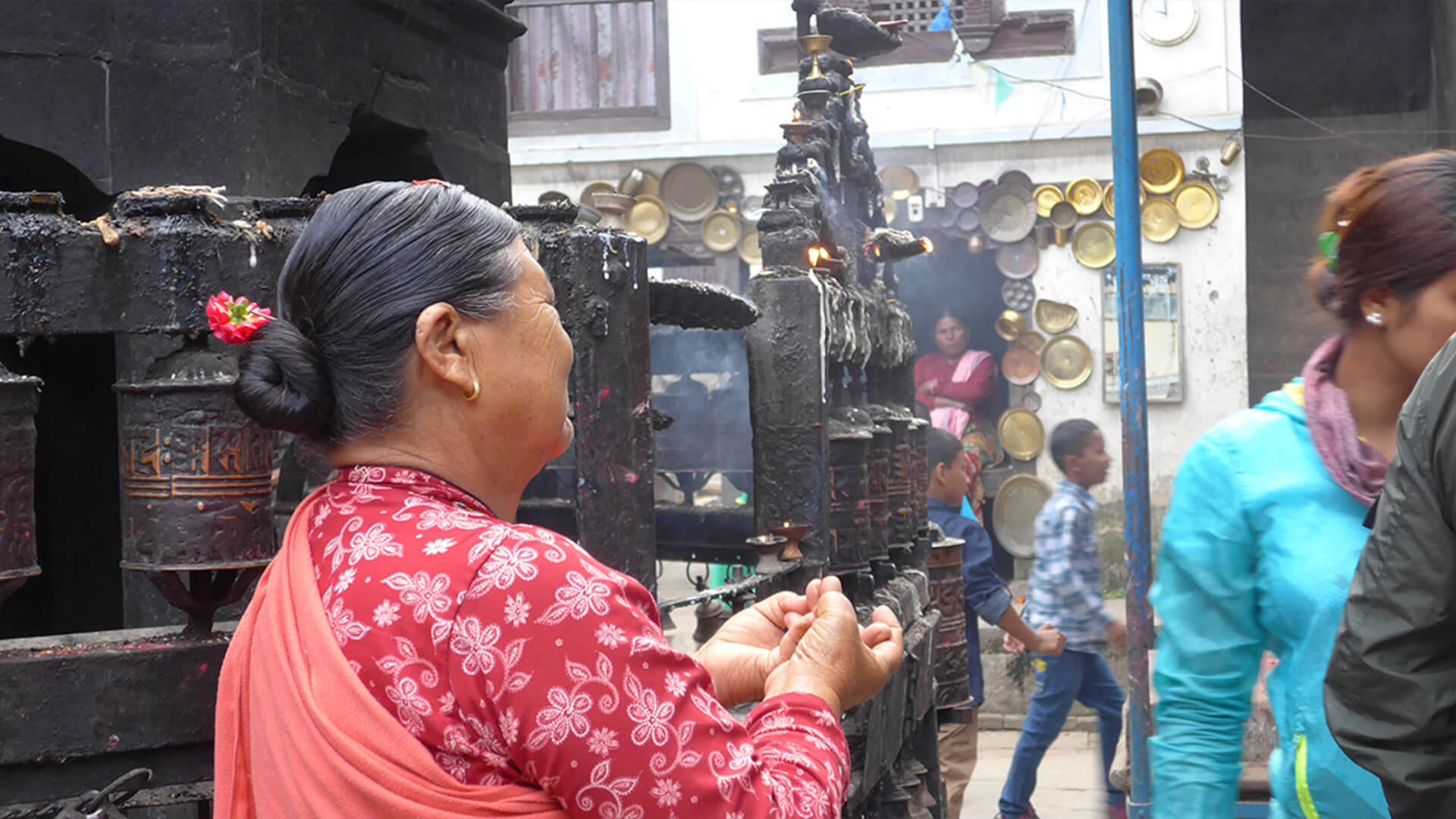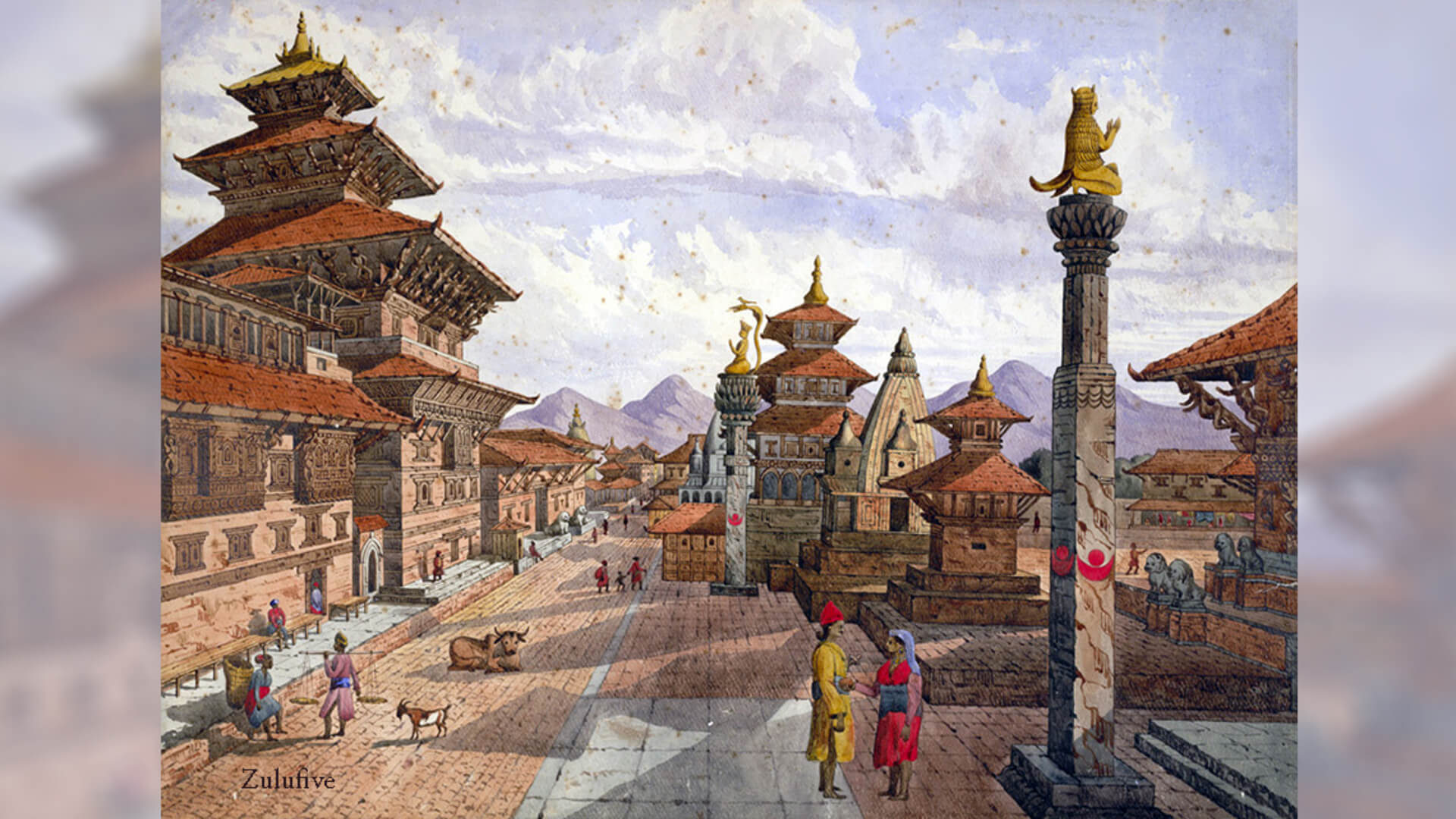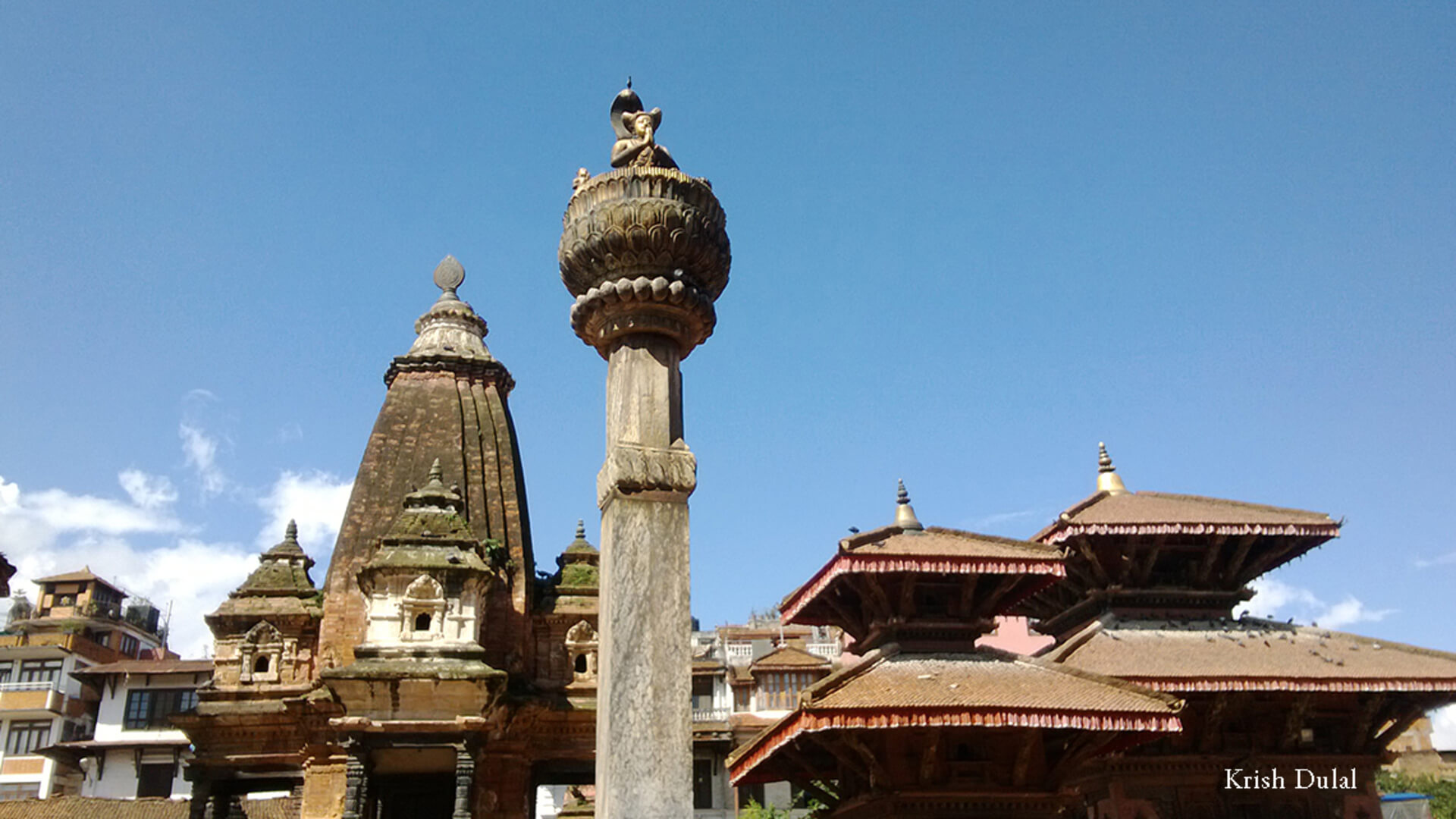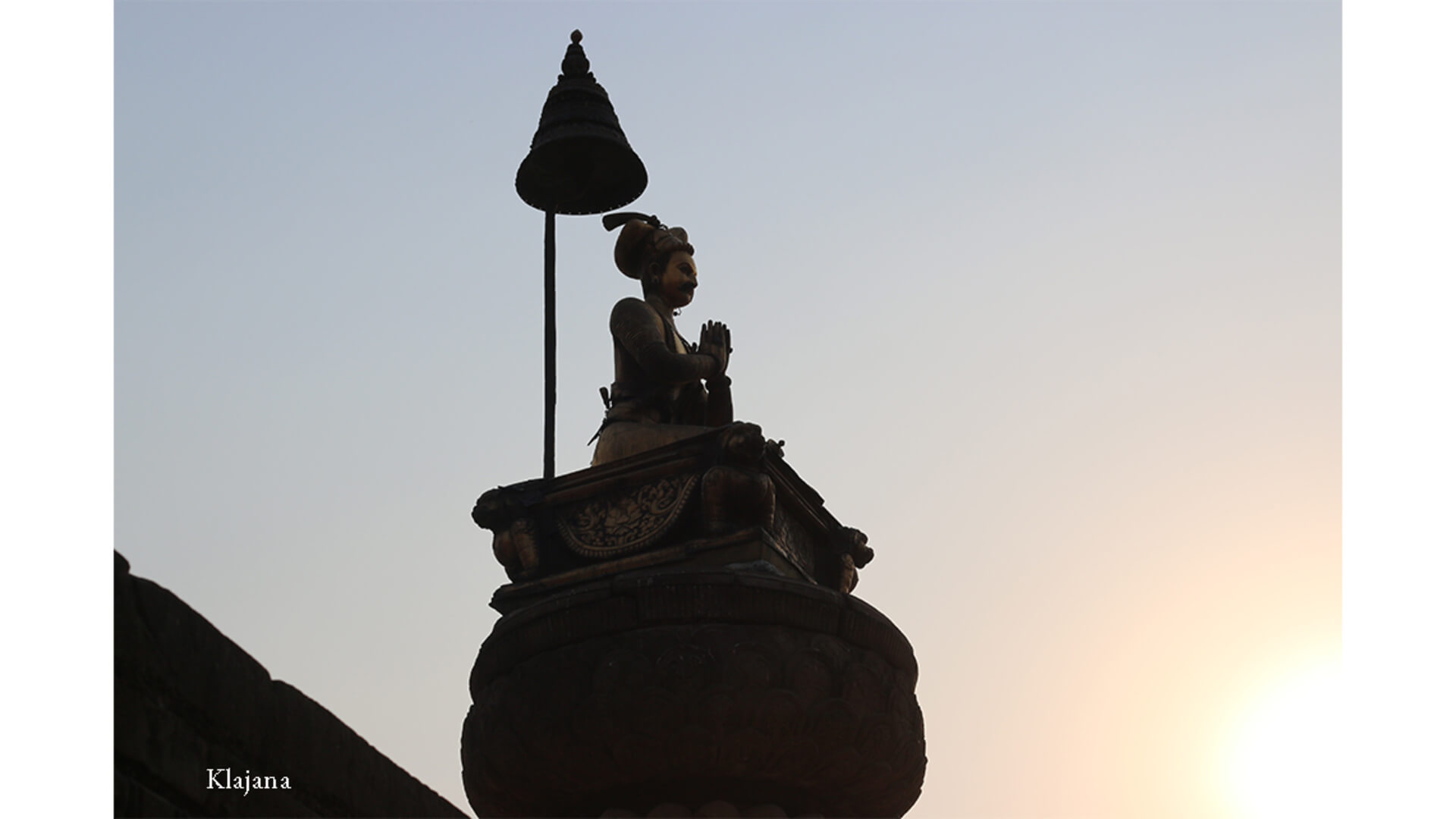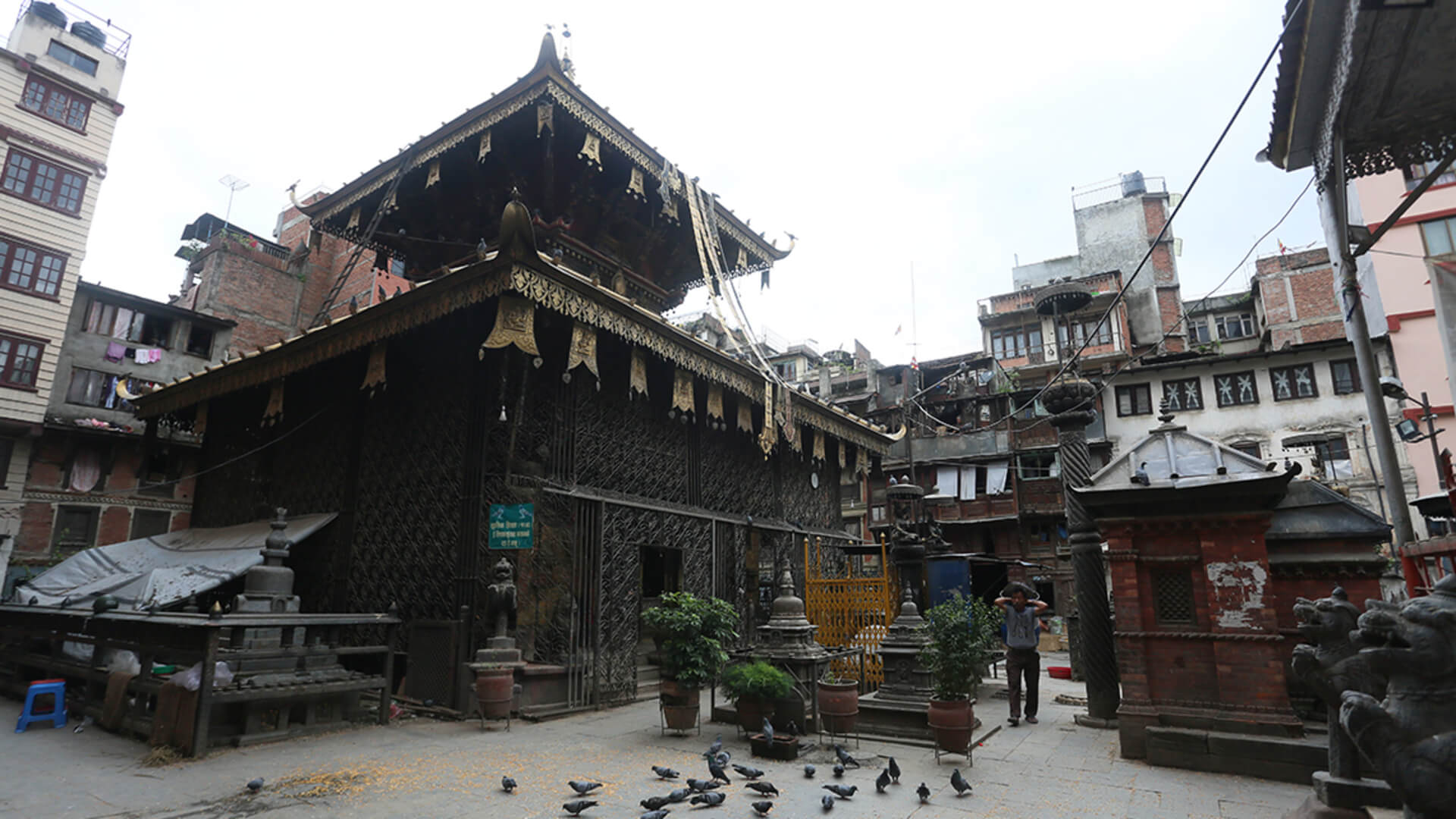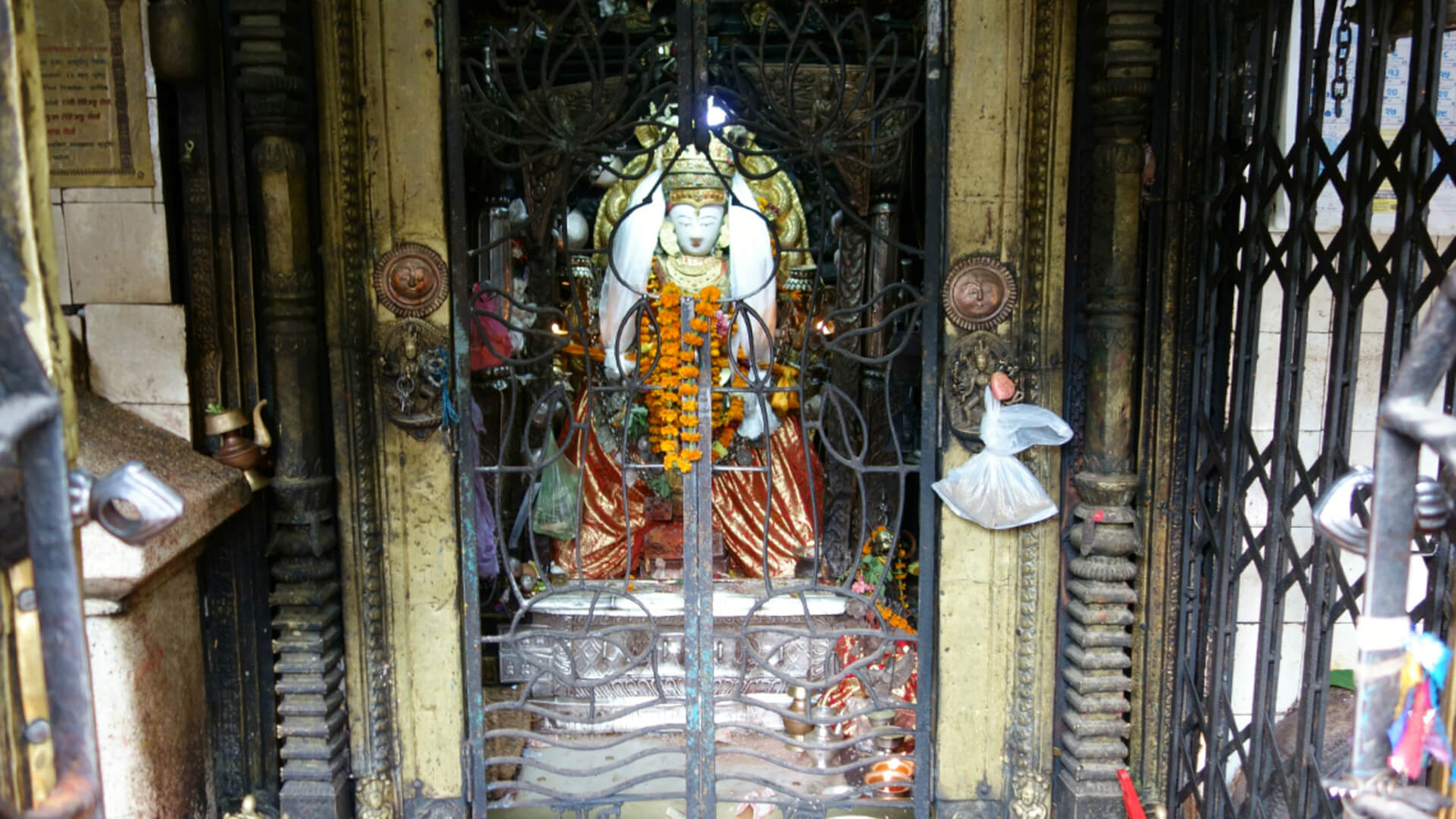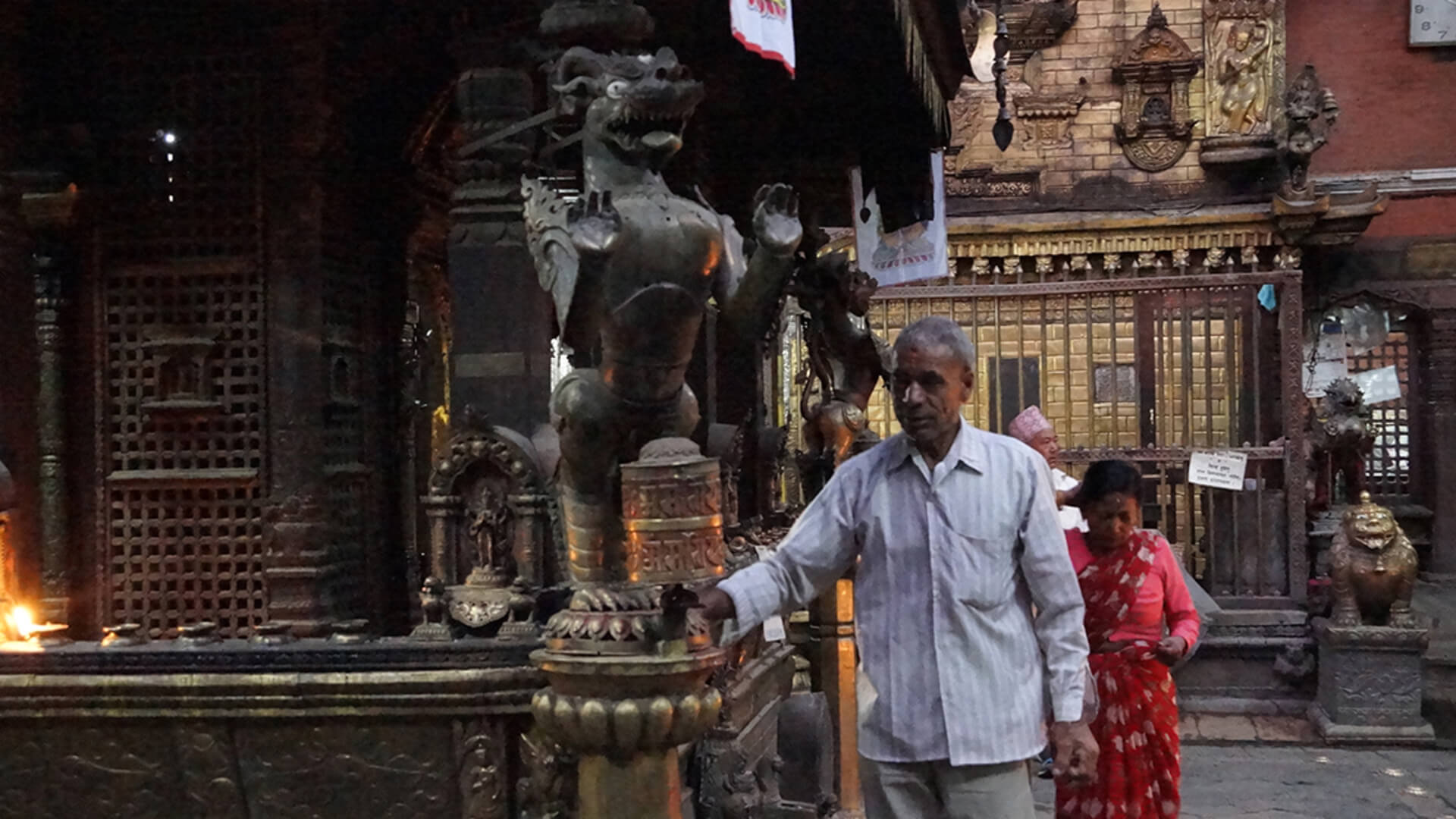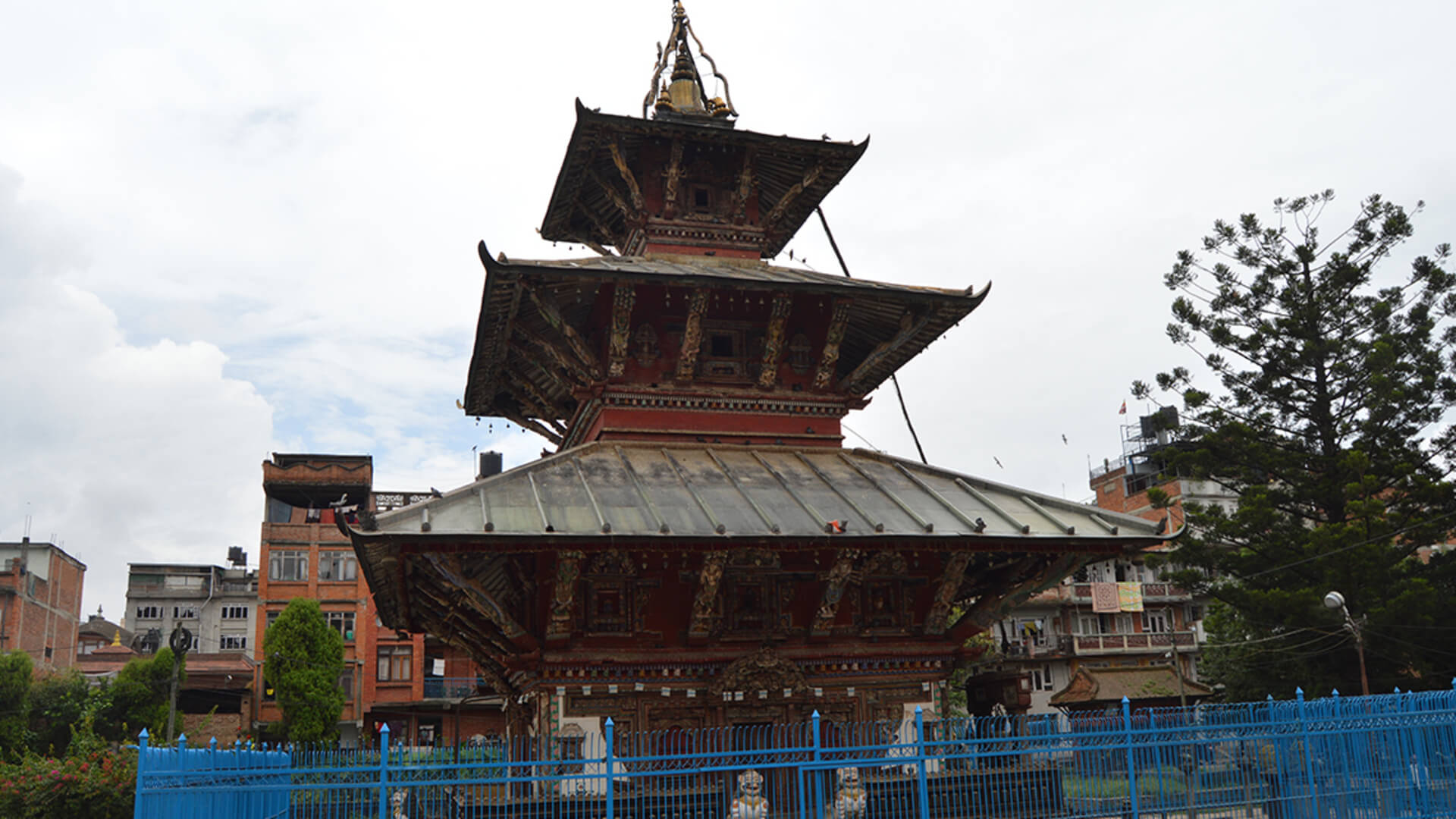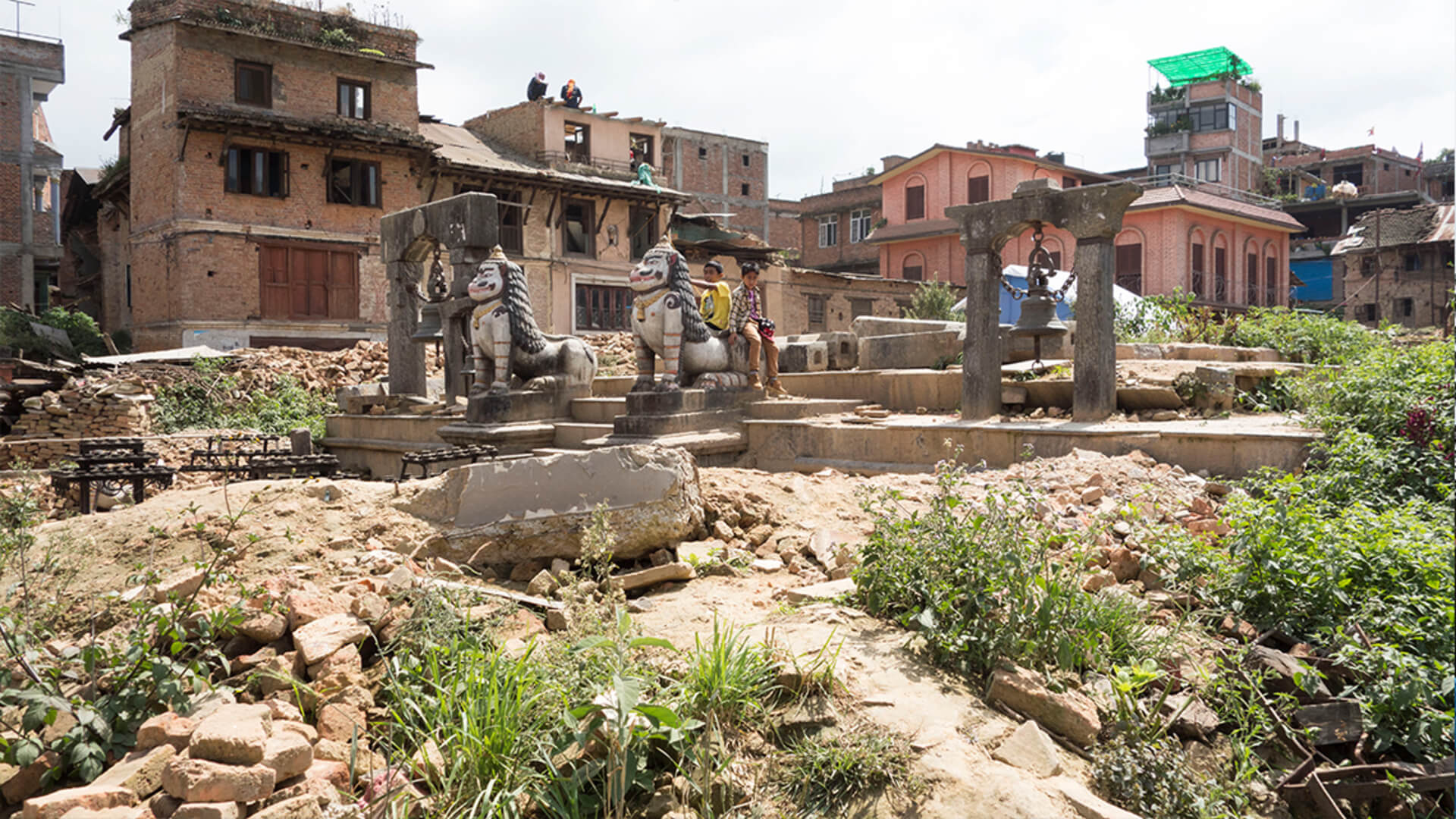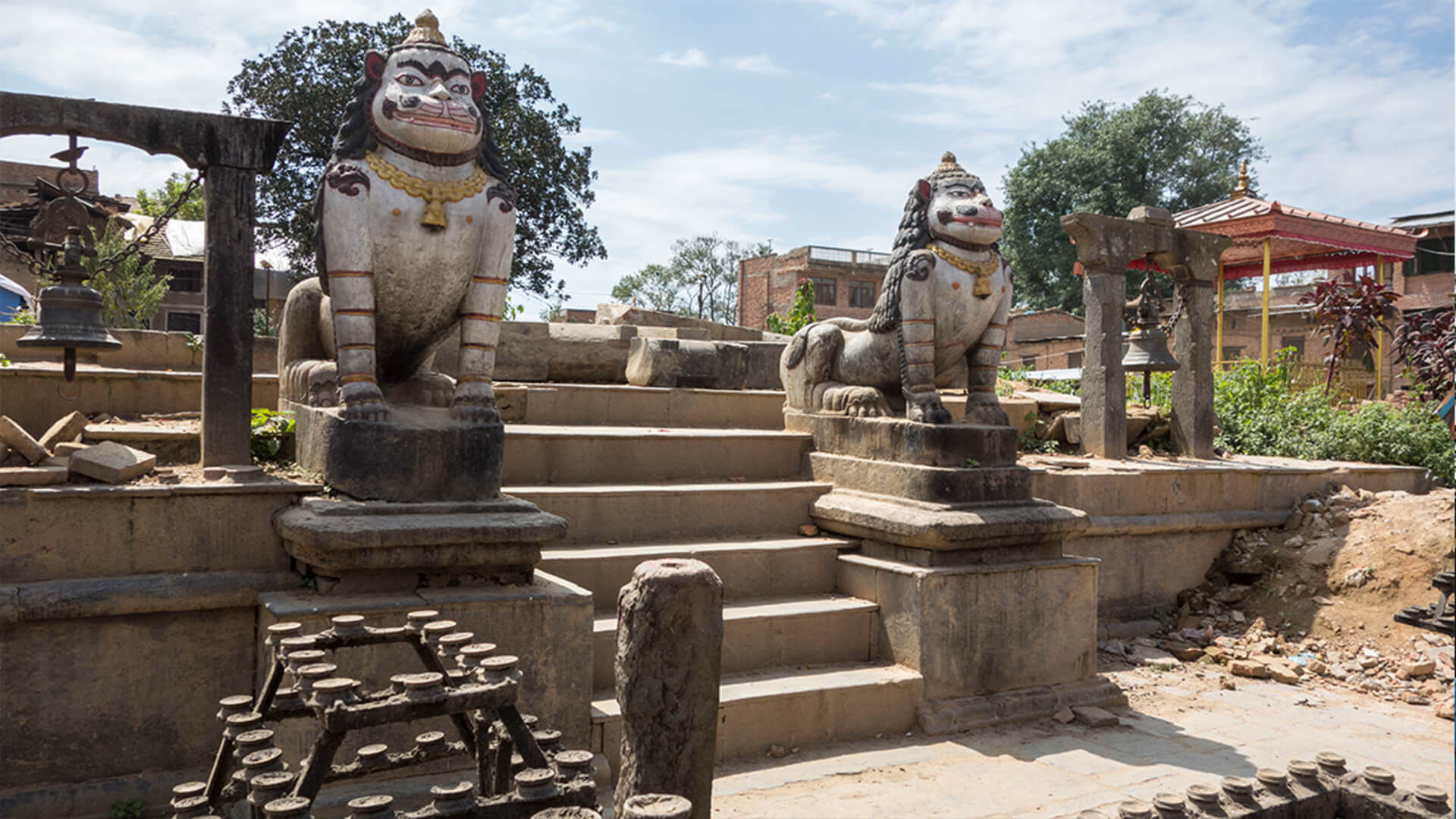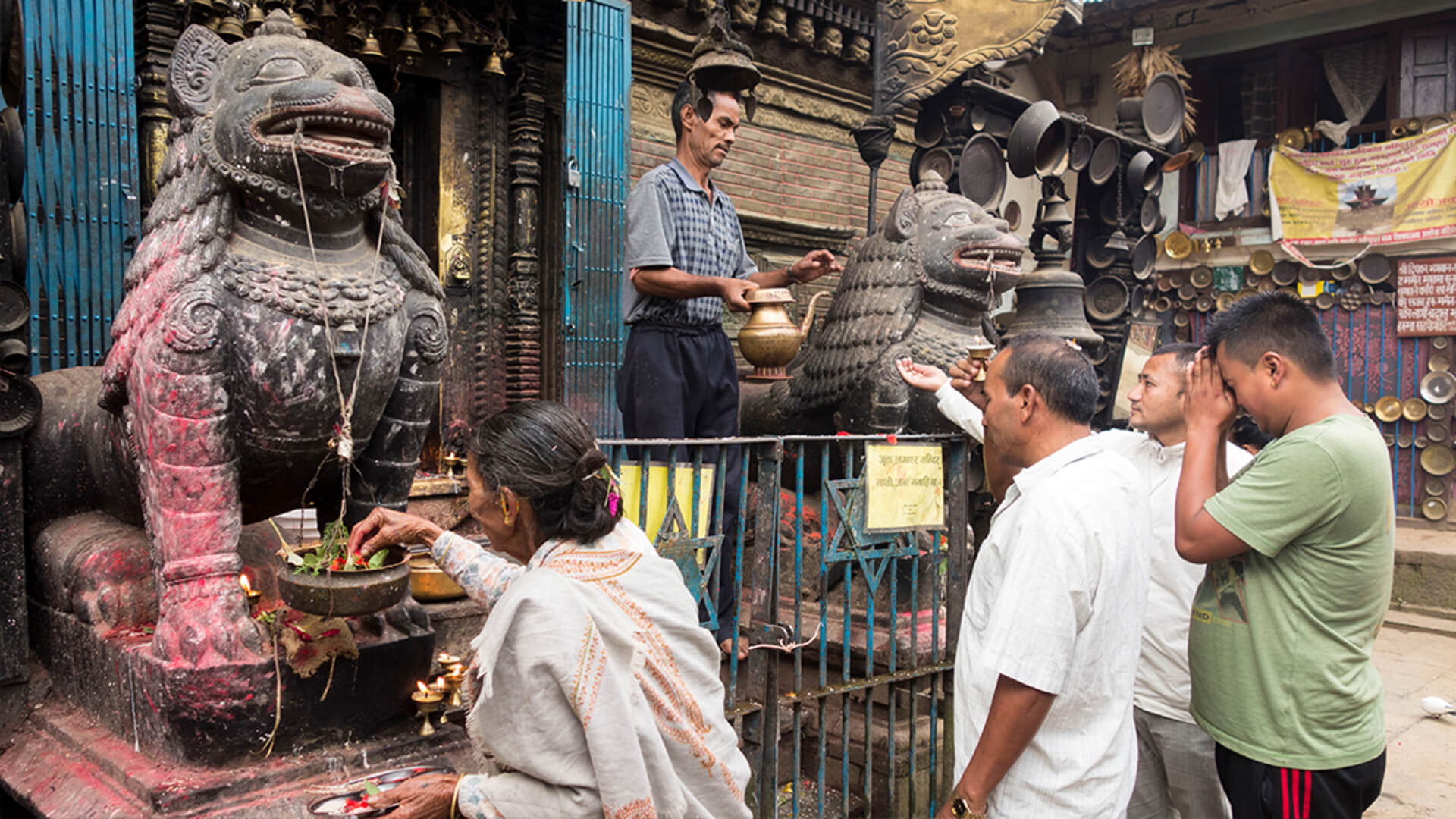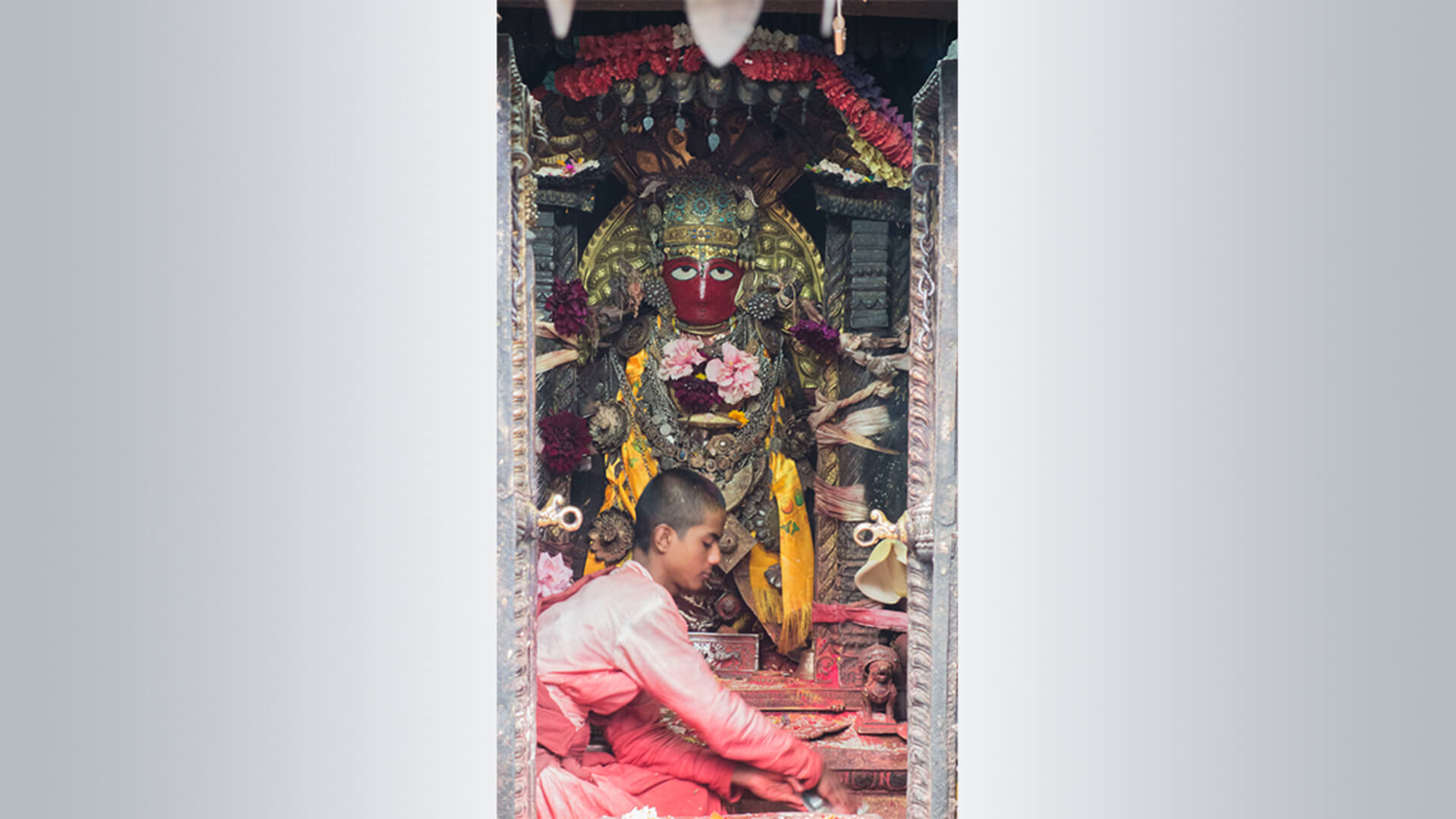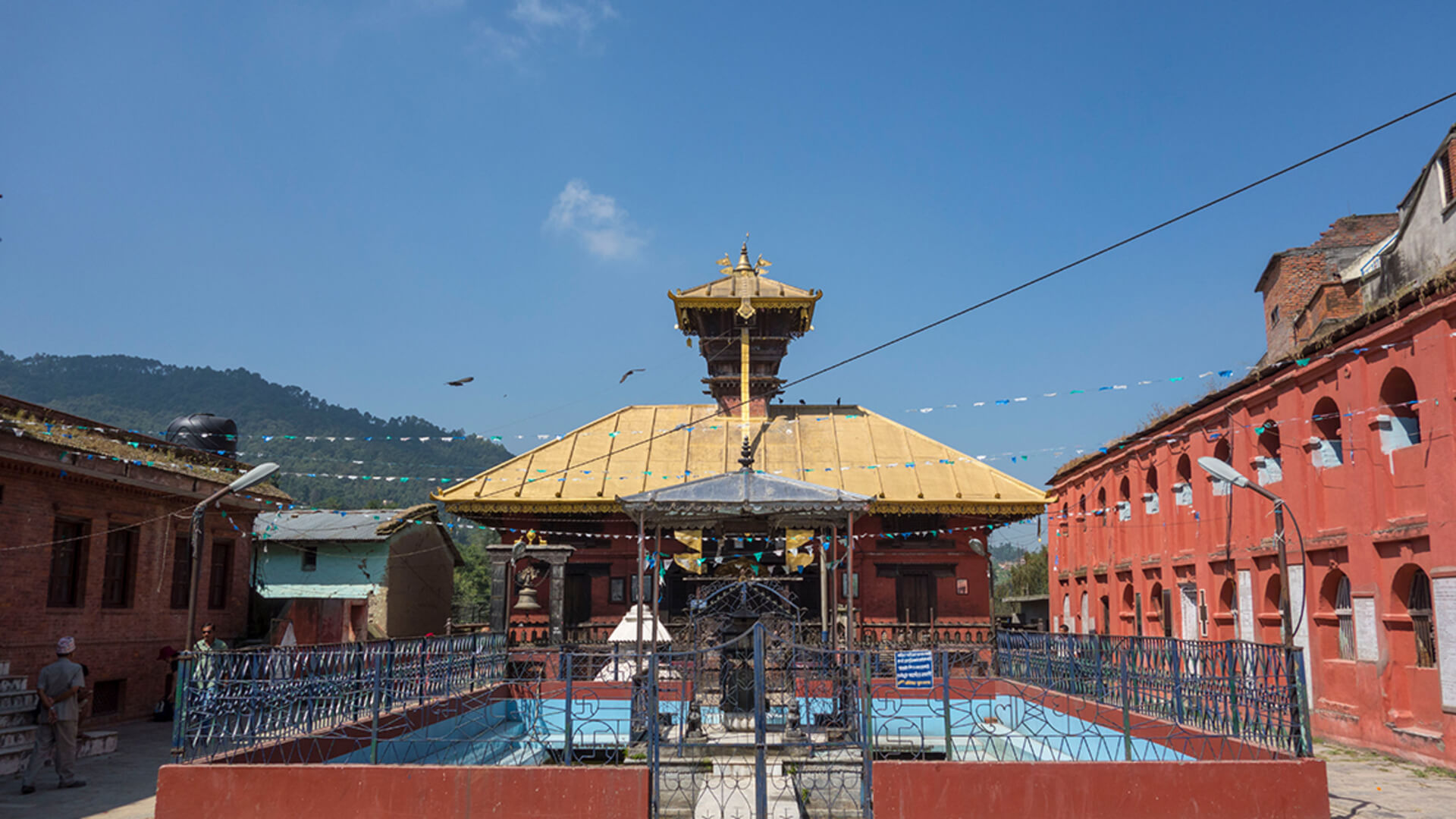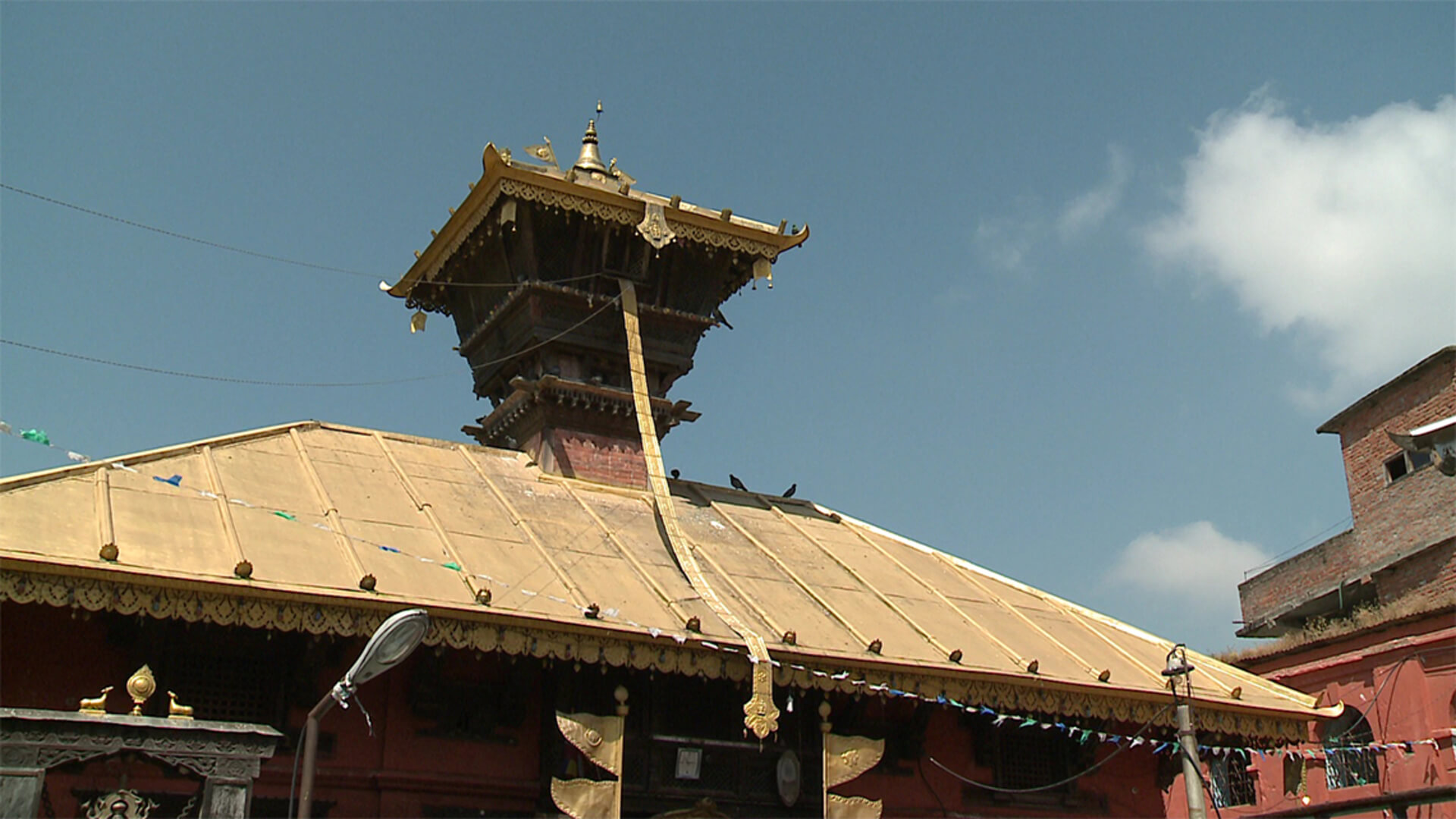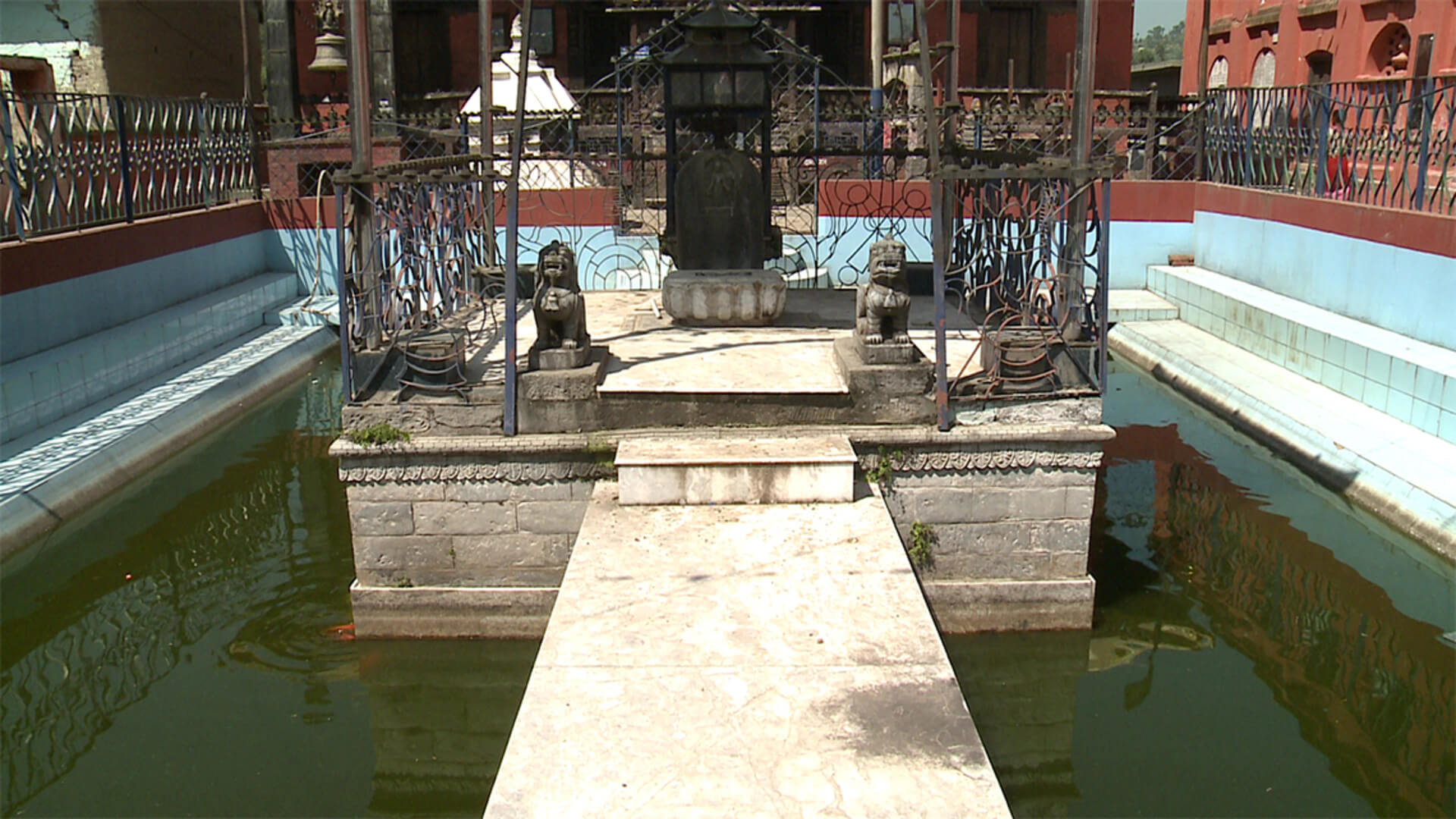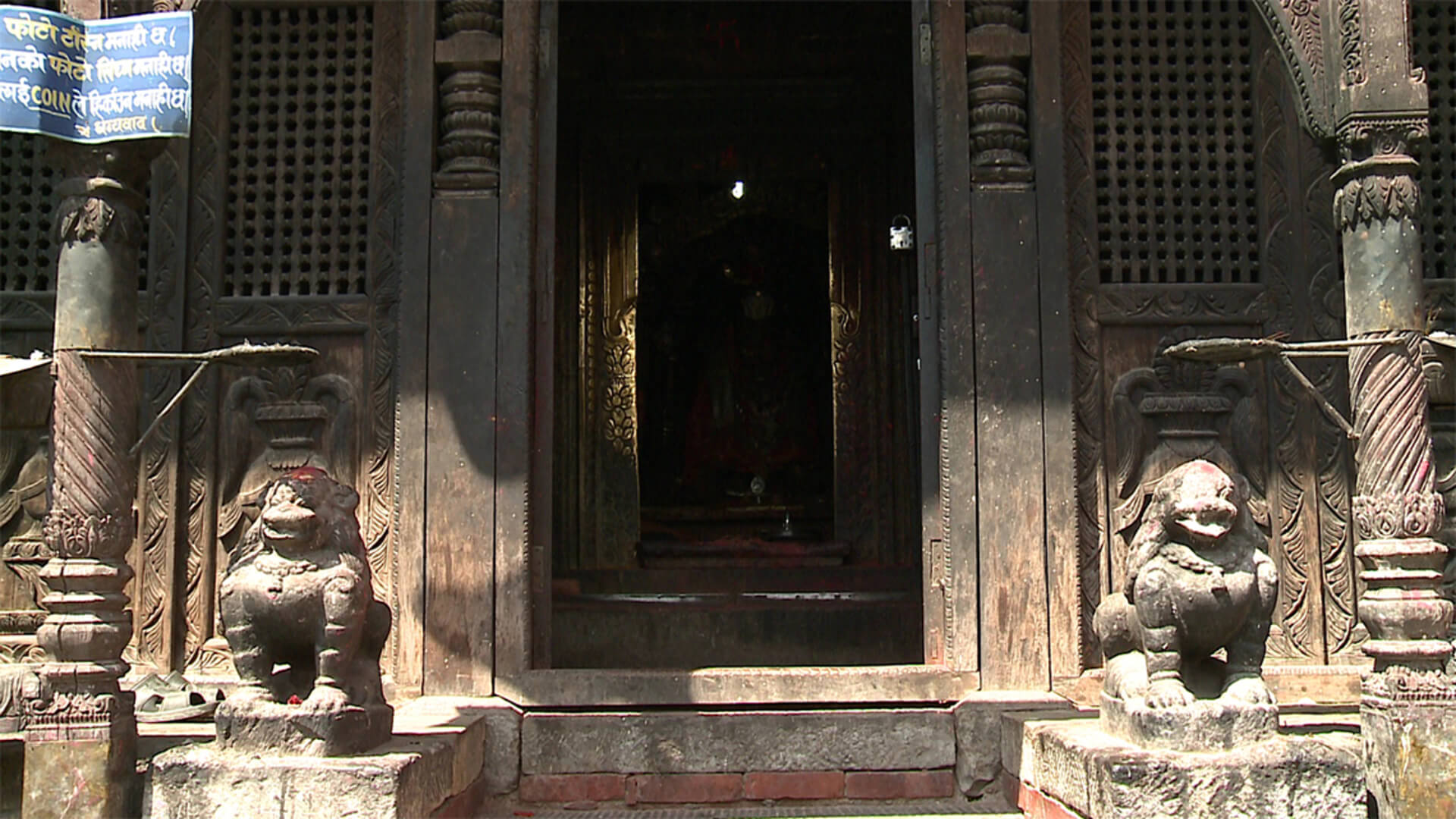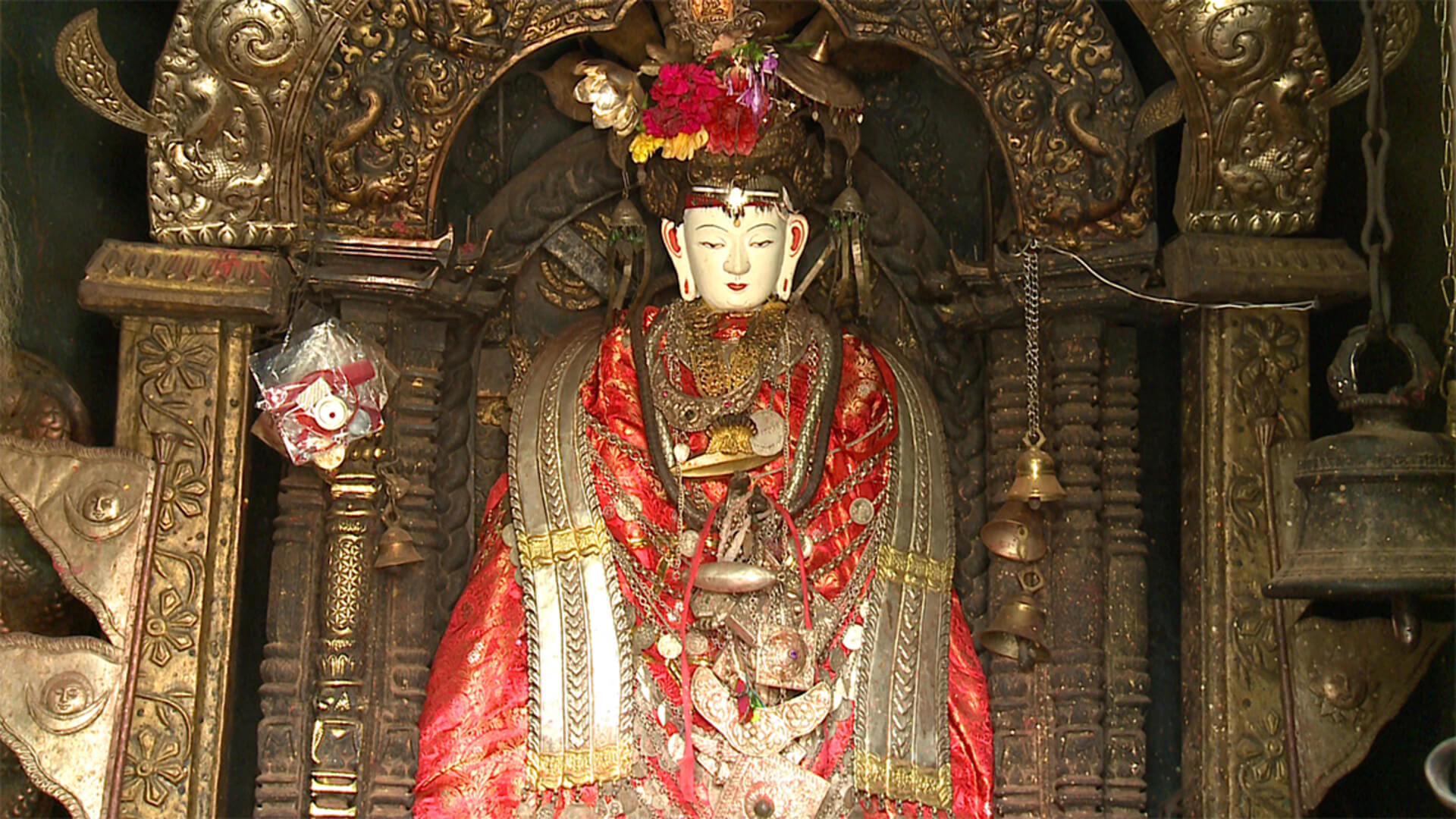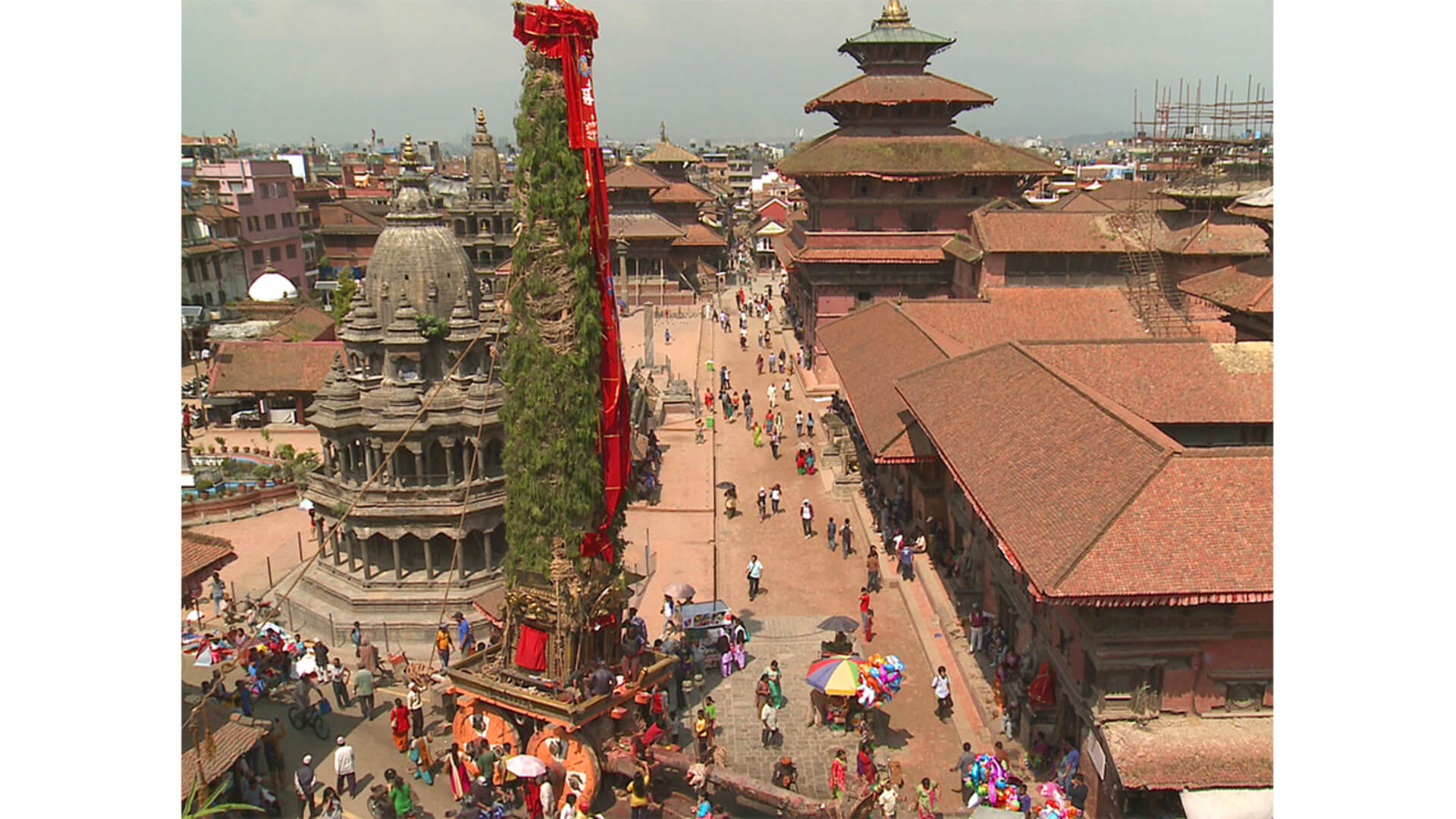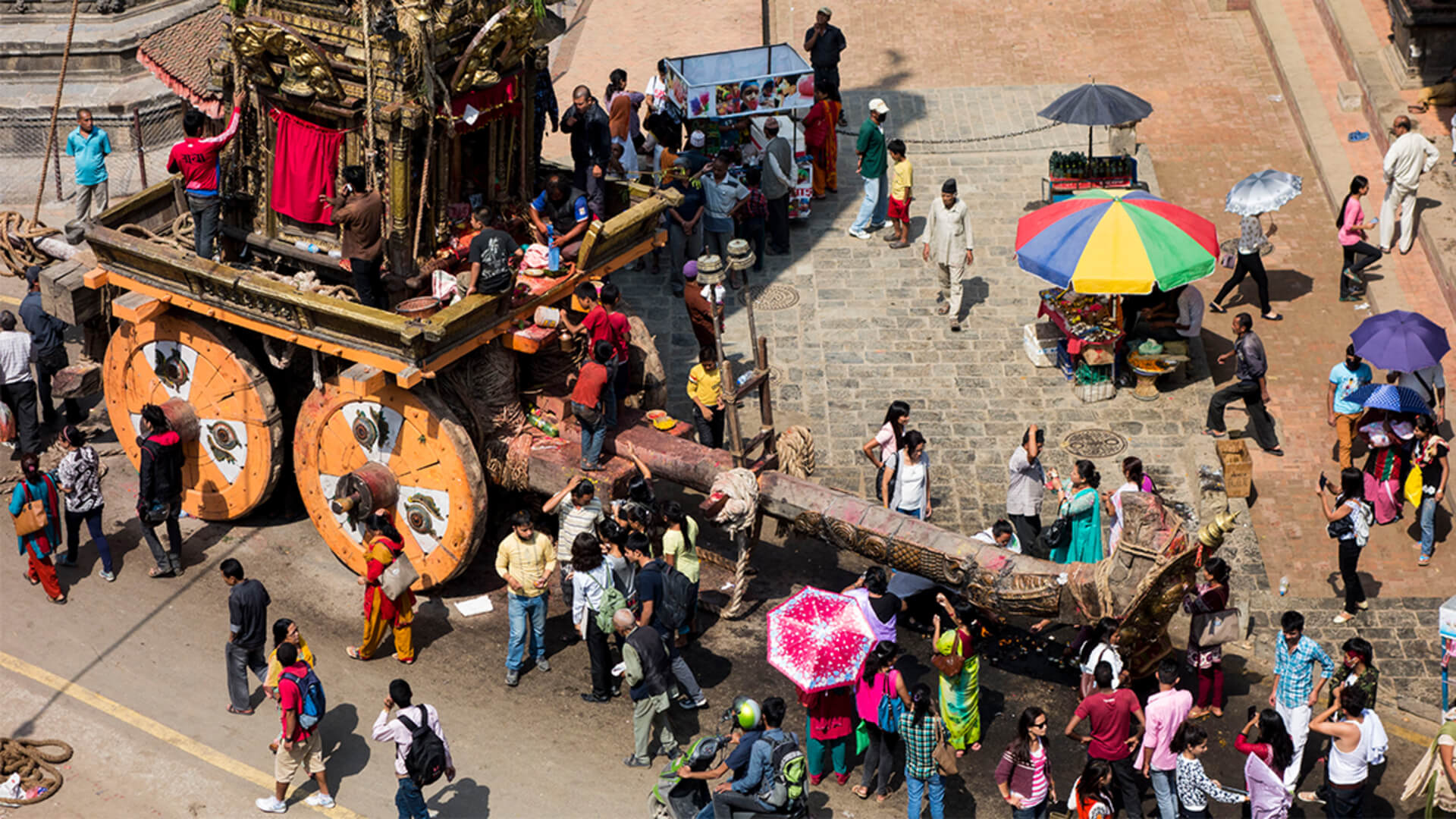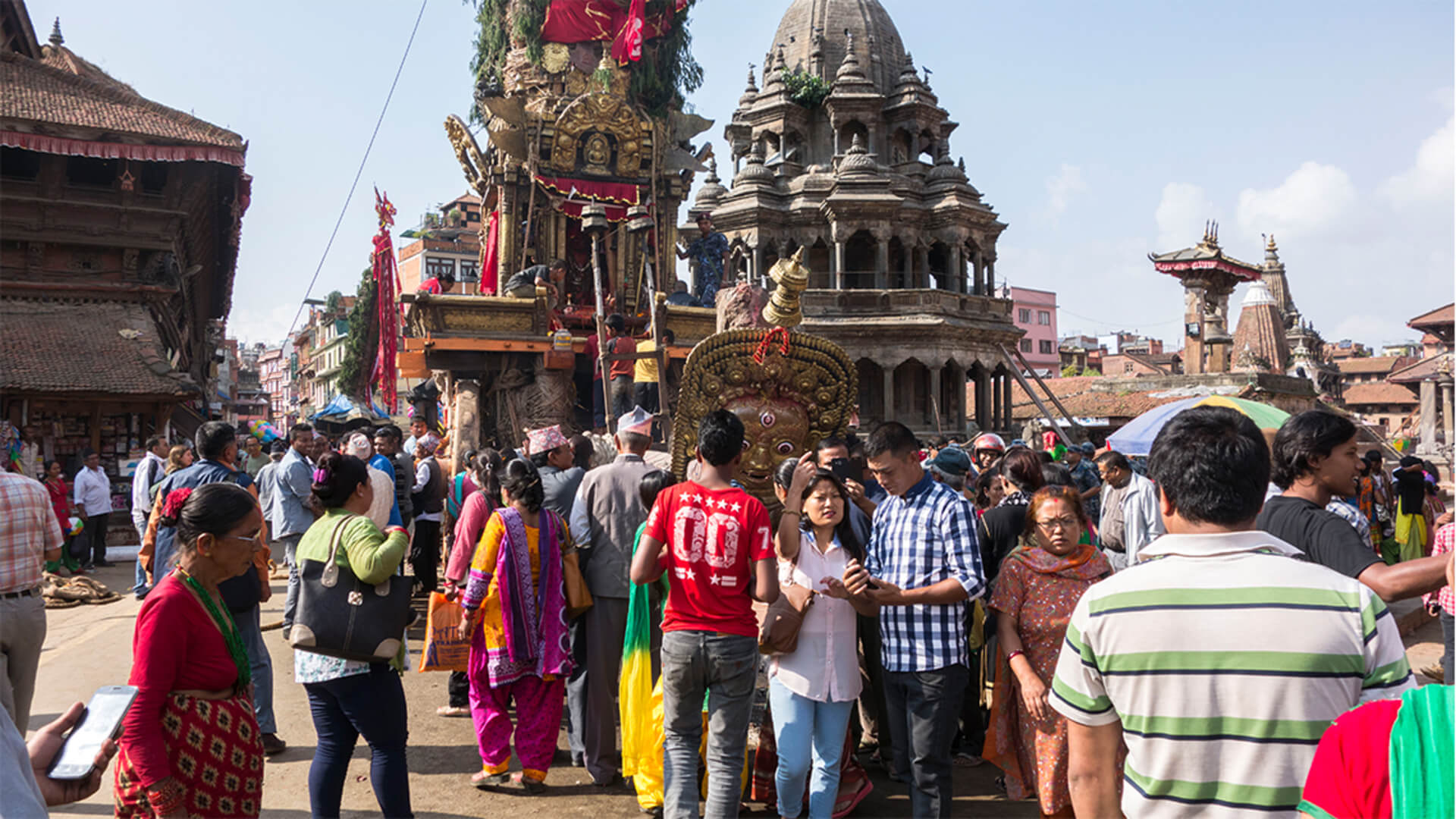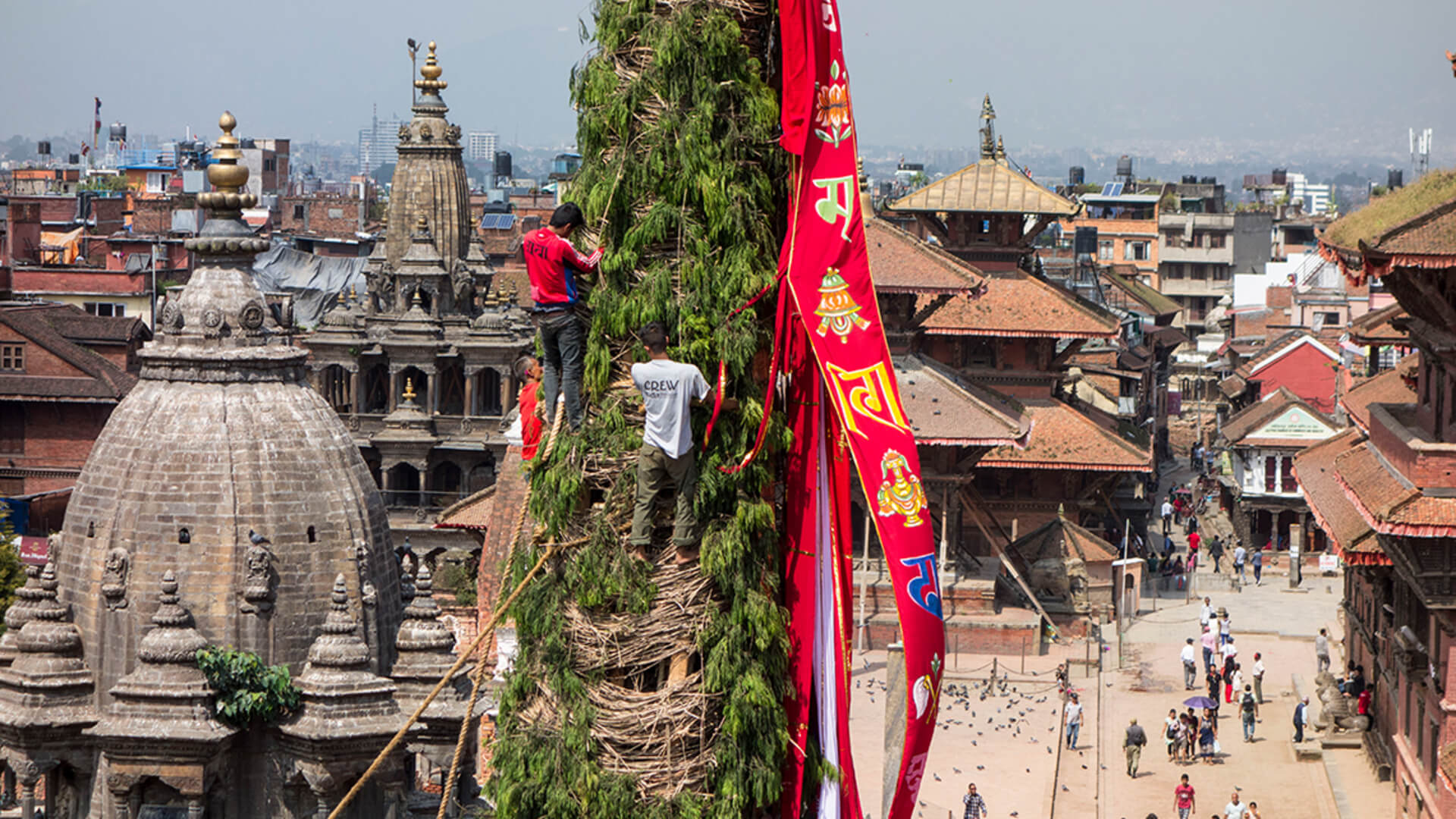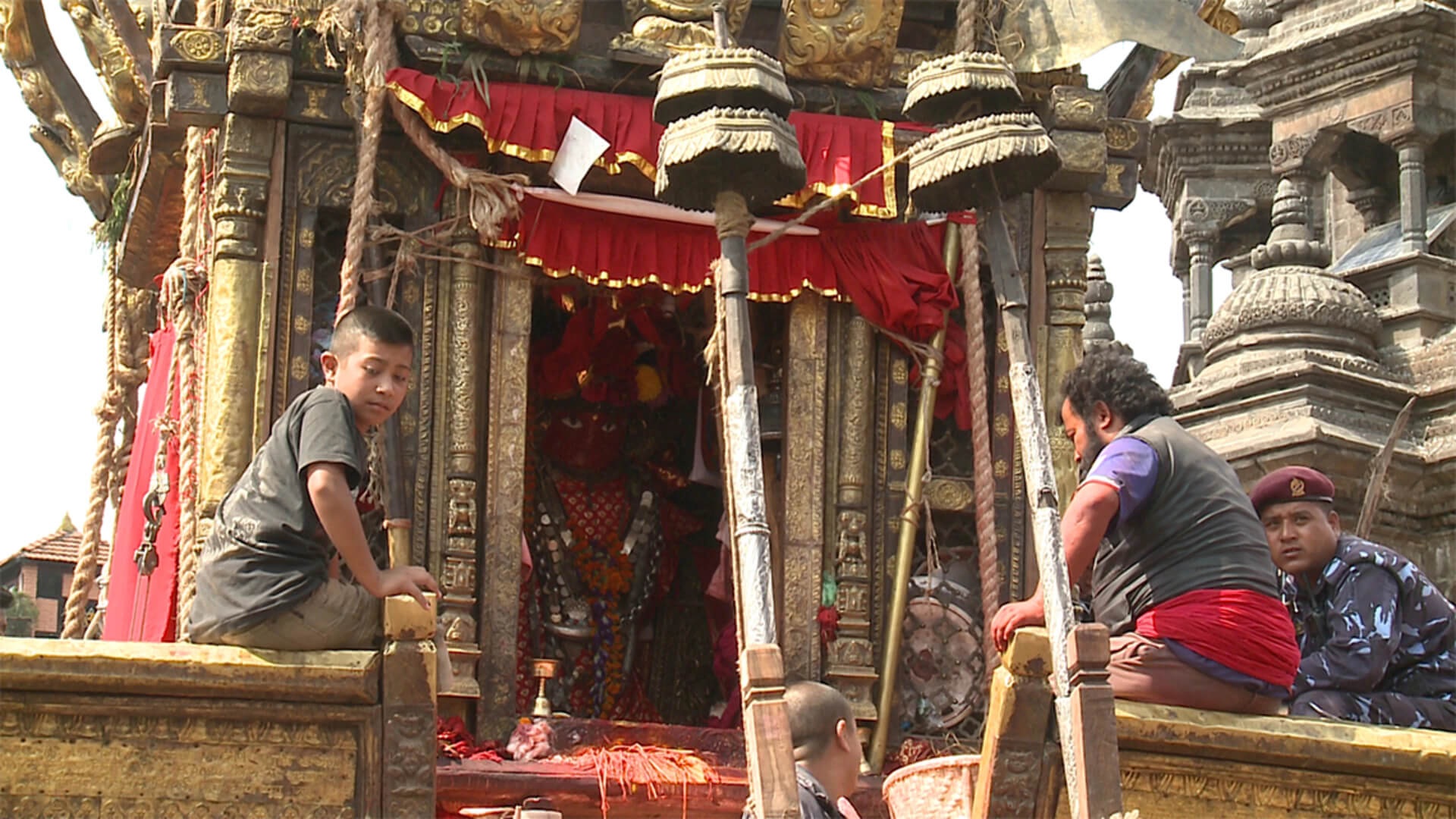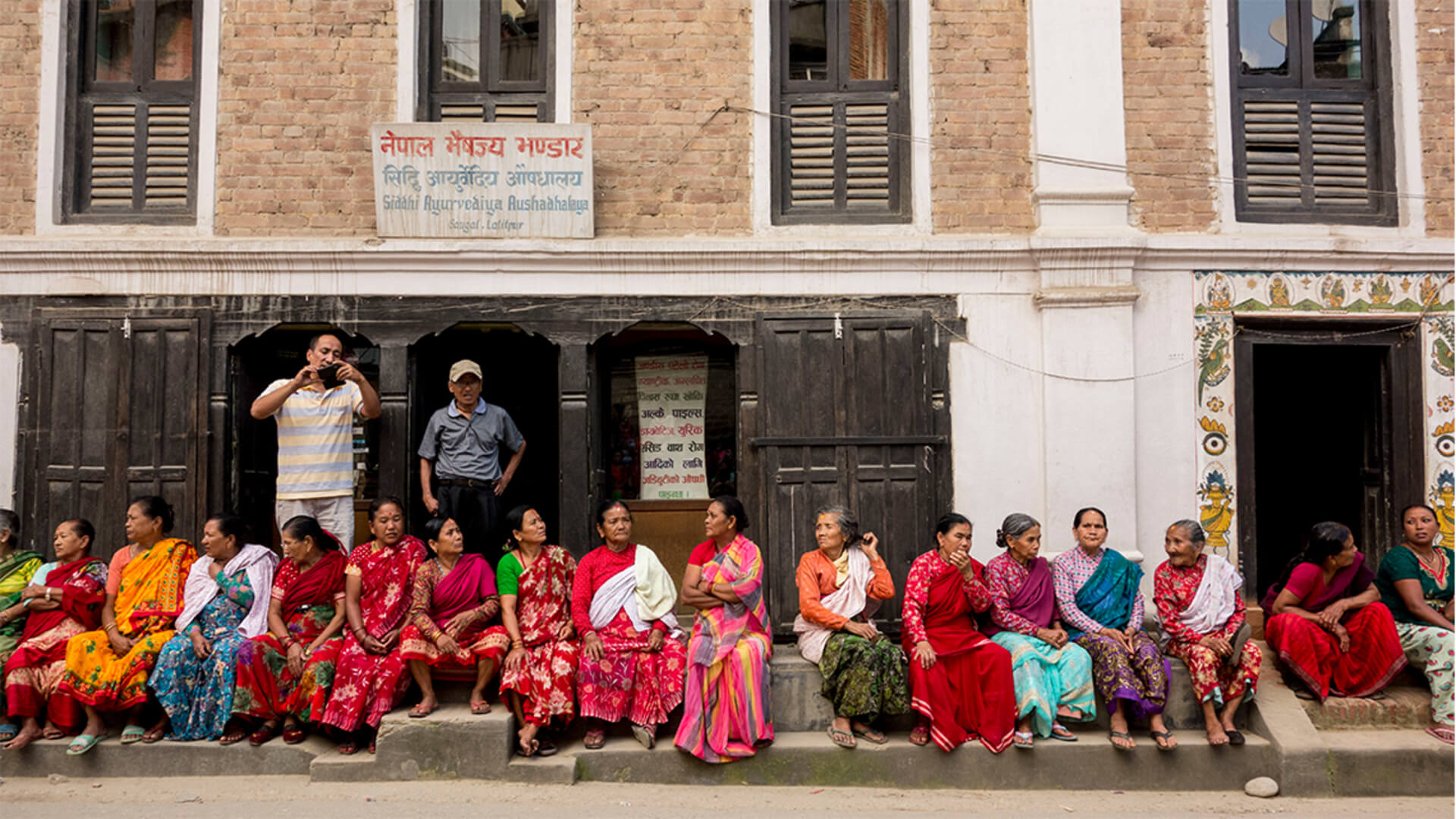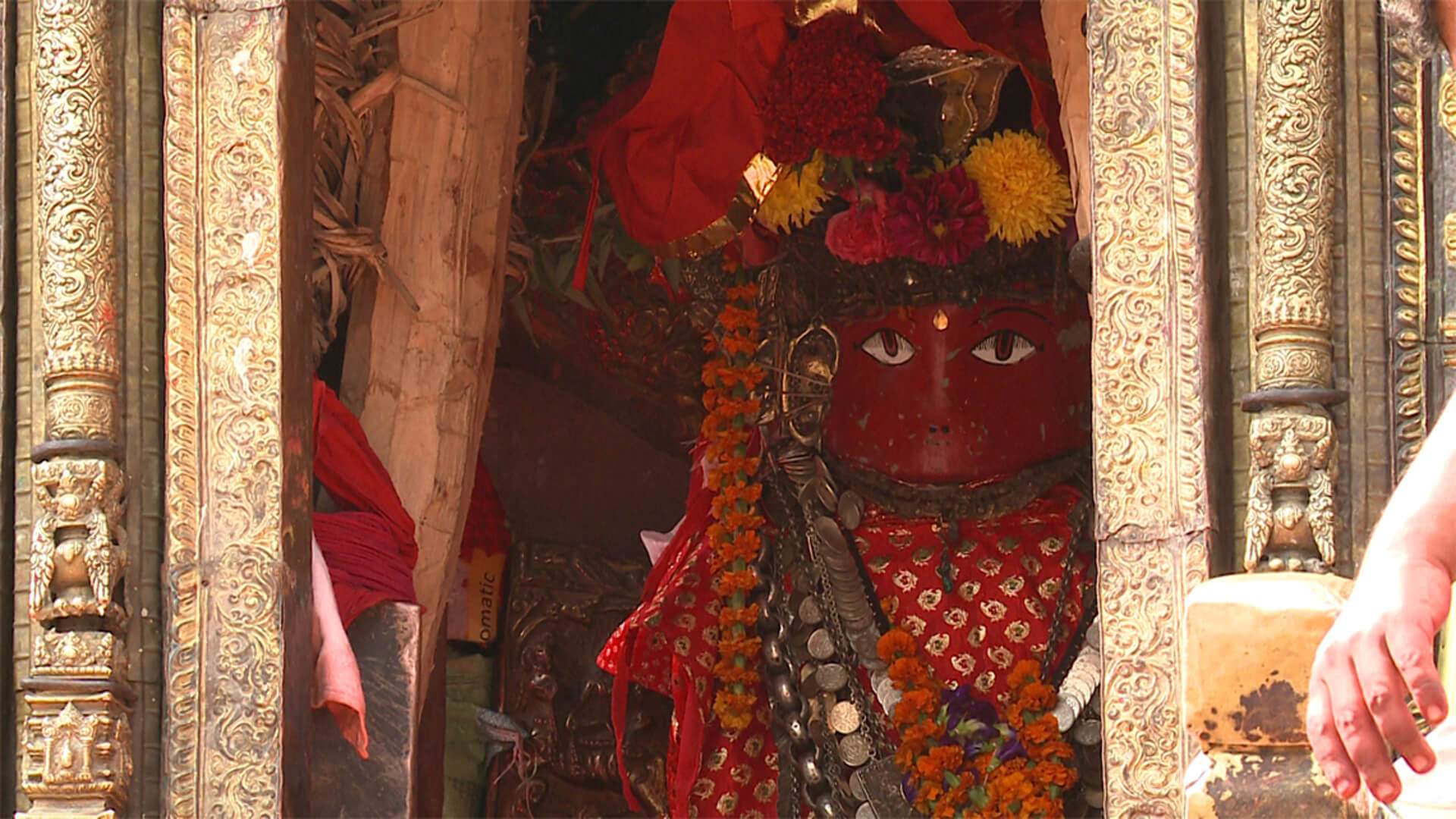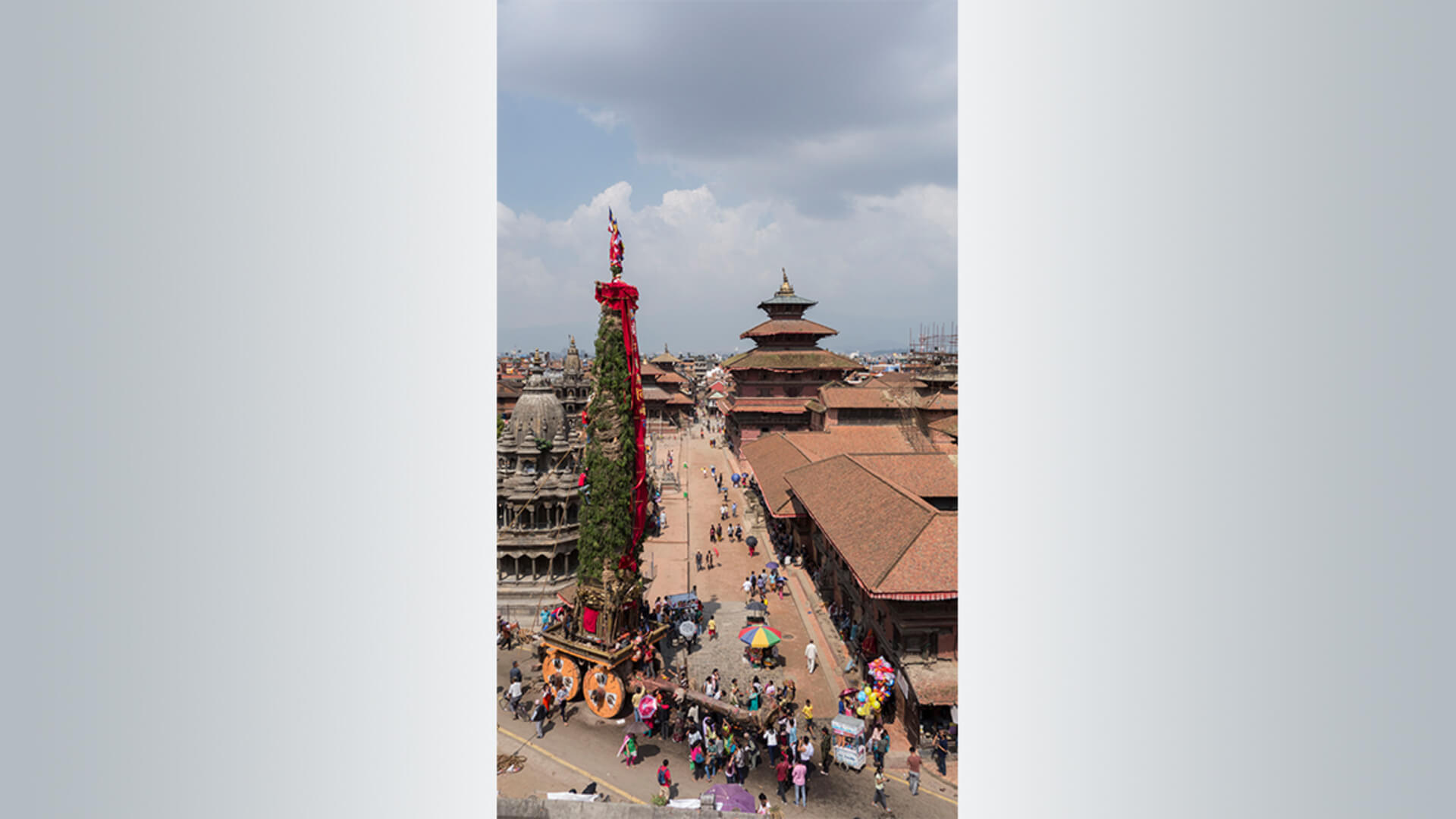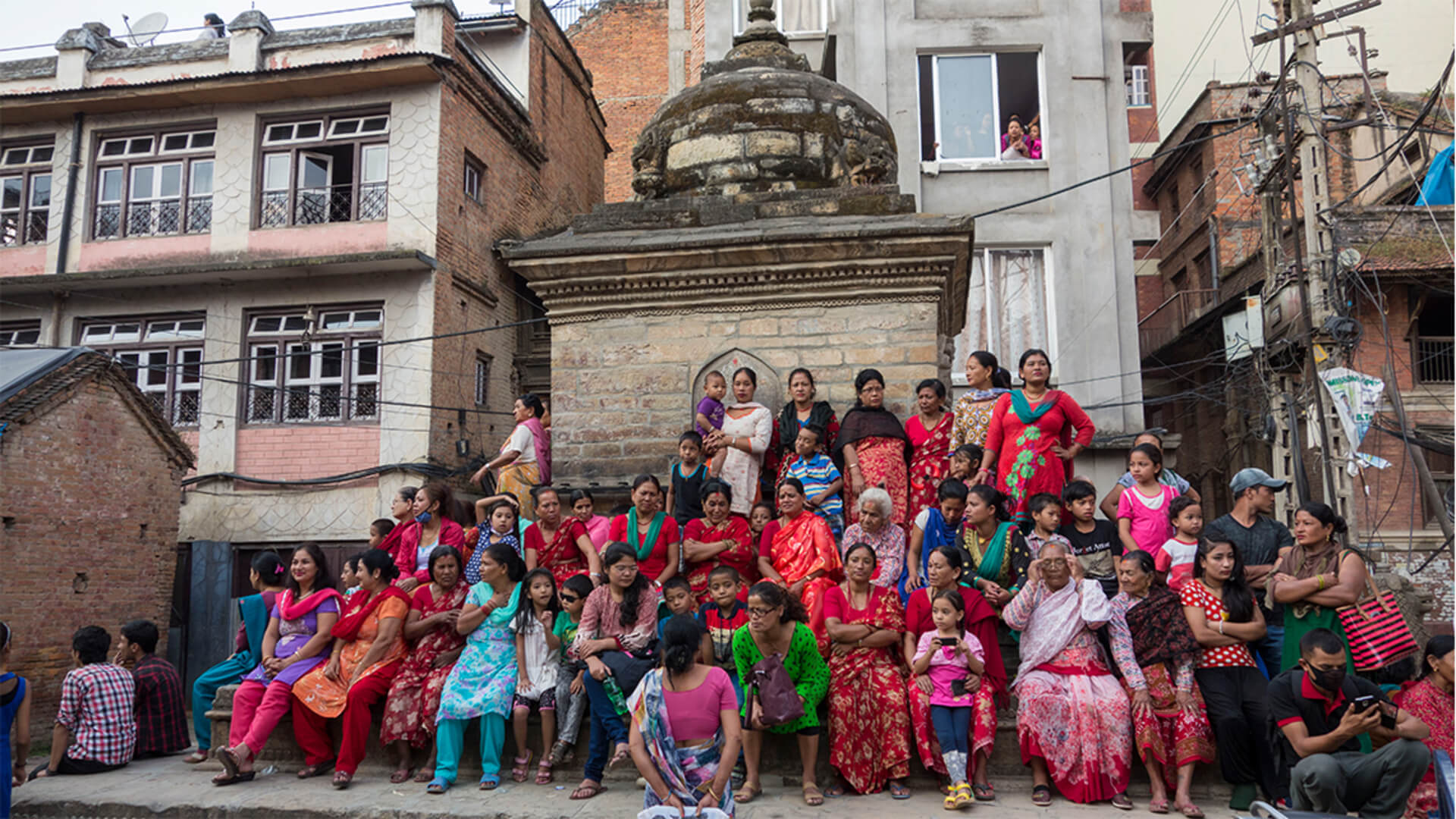Background of how Avalokiteśvara Bodhisattva came to Kathmandu
Of the greatest Bodhisattvas in Buddhism, it can be said that Avalokiteśvara Bodhisattva has become the widest-spread as he embodies the great compassion. Ever since Buddhism began to spread out from India at the top of the Common Era, Avalokiteśvara Bodhisattva was venerated and worshiped wherever Buddhism flourished. In Asia in particular, as the phenomenon is billed as ‘the faith followed by half of Asia’.
Nepal is the birthplace of Shakyamuni Buddha, where Buddhism flourished early. It is small wonder that Avalokiteśvara Bodhisattva is popular there. In the Nepali capital, Kathmandu, there is a unique temple by the name Jana Bahal (Temple of Seto Machhendranath), where the 108 forms of manifestation of Avalokiteśvara Bodhisattva can be appreciated. But then, one may ask, how did Avalokiteśvara come to Kathmandu?
Prof. Sukra Sagar Shrestha, former deputy director of the National Nepali Bureau of Archeology, shared with the camera crew of the 093TV production team of Ling Jiou Mountain (LJM) the following anecdote in one of the interviews. Legend has it that a severe drought hit the Valley and people suffered enormously from the 12-year drought with no rainfall at all and the scorched land couldn’t grow crops. It was at the end of the 12-year drought that Avalokiteśvara Bodhisattva came to Kathmandu for the rescue from his original abode at ga-ma-lu-ga-ma-je.
Prof Min Bahadur Shakya, on the other hand, told of the following anecdote of relevance in his book ‘Iconography of 108 Lokesvaras’: the epic poem of India - Swayambhu Purana - recounted the legend that had Kathmandu as a big lake some 14 square-kilometers in size and a lotus with a thousand petals was growing in the center of the lake, where the self-originating manifestation (what Swayambhu means in Sanskrit) of a Buddha was taking place in flames. Manjusri Bodhisattva manifested himself as Manjudeva Acarya arrived with the desire to pump the lake dry for people to have a good place to live. The act agitated the dragon Kulika Nagaraja that was in command of the lake and caused devastating floods. Desperate people in suffering turned to Buddhism for protection and help, and they prayed to Avalokiteśvara Bodhisattva in particular.
Avalokiteśvara Bodhisattva dispatched Samantabhadra Bodhisattva to visit Kathmandu and contain the dragon Kulika Nagaraja and relieve people of the miseries. Samantabhadra Bodhisattva accomplished the mission and the dragon Kulika Nagaraja converted to Buddhism for a happy ending.
Episode 1: Prelude - Origin of the 108 Lokesvaras
Episode 2: Dharma lost to the world
Episode 3: The Origin of Buddhism in Nepal
Episode 4: The Origin of the 108 Lokesvaras in Nepal
Episode 5: Representations for Inheritance & Revitalization
Avalokitesvara Trailer - Yearning for Dharma - The Origin of the 108 Lokeśvara
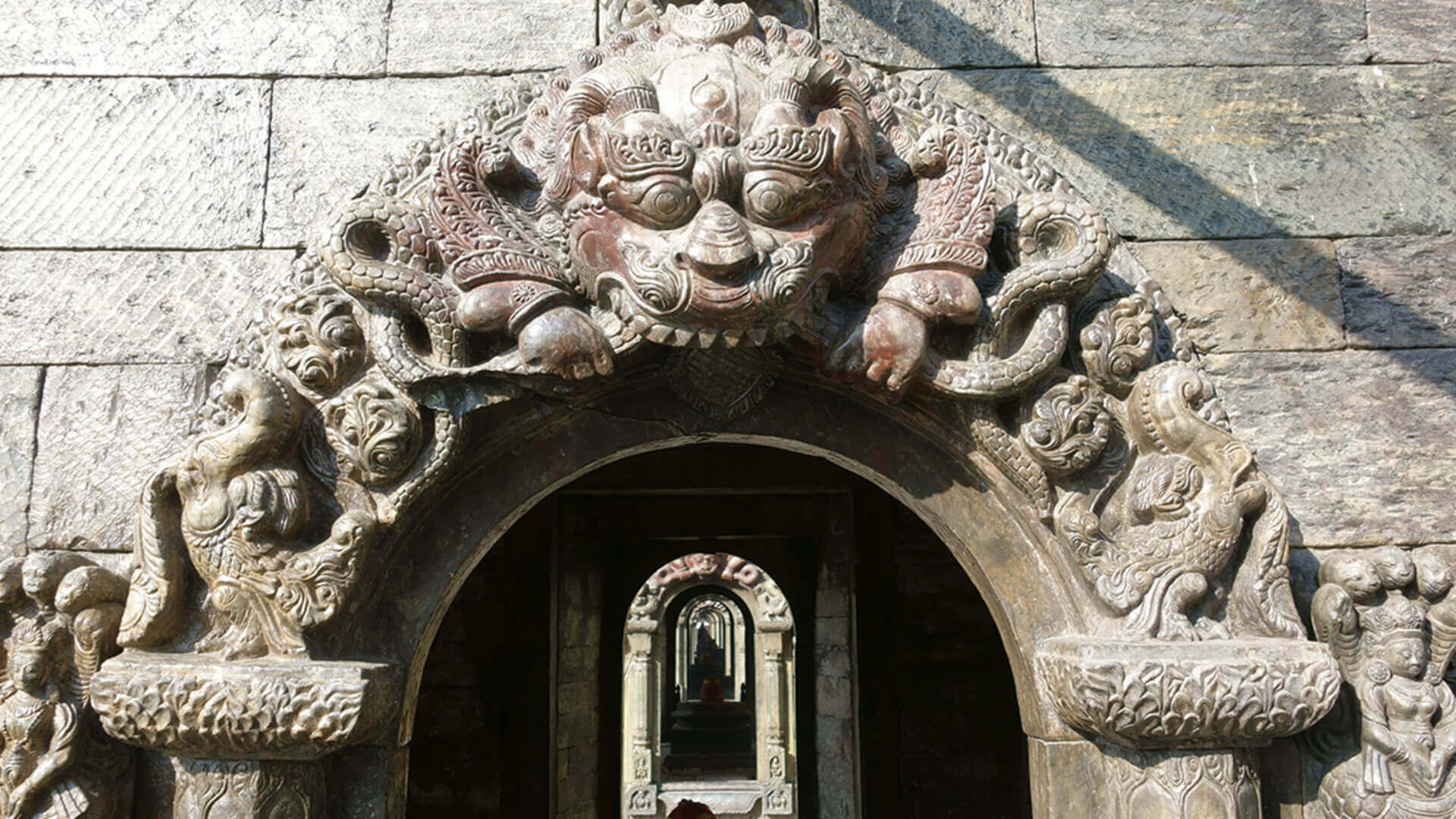
The History of the Temple of Seto Machhendranath
The Temple of the 108 Lokesvaras in Kathmandu is situated at the ‘Seto Machhendranath Temple’ also referred to as the Jana Bahal, which is one of the most important and grandest temples in the Nepali capital. Tucked away in narrow alleys, the popular temple is always crowded with praying visitors and is located close to the juncture of the Durbar Square and the Indra Chowk. There is a sign upon the entrance that reads ‘Believers of all religions welcomed’ The main deity for worshiping at the main hall, the Seto Machhendranath, is viewed by Hindu followers as Lord Shiva’s manifestation for the rain. Many Hindu believers are therefore among the Buddhist crowds who visit the temple.
The Temple of Seto Machhendranath enjoys a long history studded with legends, and one goes to tell of how the temple was built by King Yakthamalla of a small country Jambur located where Kathmandu later came to be. The temple was erected at the riverside where Indra Chowk is. Why there? It was where two rivers (Bagmati, Kalamati) converged and was called ‘Woga’ in Newari, where the sacred site ‘Kalmochan Tirtha’ also was located and the name meant ‘liberation from death’. The legend further tells of how Shakyamuni Buddha was quoted as saying that those who clean themselves with a bath here before going to the temple to worship Seto Machhendranath will be relieved of sickness and sufferings, with years of age taken off of them to rejuvenate in better health.
But when exactly did people begin to construct the Temple of Seto Machhendranath? There is no record for exact reference in terms of date, but we can be pretty much reassured that renovation was conducted for the temple in the 17th century. Former deputy director of the Nepali National Bureau of Archeology, archeology professor Sukra Sagar Shrestha pointed out to us that the temple had been called Kanakchaitya maha vihar, and record of it can be traced back to AD200 (Nepali Calendar year 256) during the reign of Nepali King Narendradeva of the long Licchavi Dynasty. The area where the temple is situated is called Kledol and there are stories of some kind of connection linking the temple to the Buddha’s secular family clan by the name Koliya that relocated to Kathmandu and built the temple, giving rise to the name of the place as Kledol. A father-&-son team came to Kledol and visited the temple, where they worked on Thang-ga paintings for the 108 Lokesvaras in the 19th century. Approximately twenty-plus years ago a set of bronze bas-relief sculptures were fashioned after the 108 Lokesvaras.
According to Prof Sukra Sagar Shrestha, the 108 Lokesvaras did not come about over a short period of time. The number can reflect the 108 kinds of miseries that people suffer from, and Avalokiteśvara Bodhisattva manifests into 108 corresponding forms for relief and salvation. People in stress call out for help to Guan Yin, and different forms of Guan Yin with respectively matching names would manifest to correlate. Over time, the 108 forms of Avalokiteśvara became a collective group.
The Japanese scholar abbot of the TOKURINJI, Hidenobu Takaoka who lived in Kathmandu for more than a decade for studies in the 70’s, on the other hand, cites the fact that the term 108 Lokesvaras also appeared in the Tripitaka of Mahayana Buddhism and he believes that the faith did not originate in the Kathmandu basin, but that it reached there and received acceptance for preservation to eventually become a unique faith there. The names and legends
of the 108 Lokesvaras could have come from India, but the possibility that they were derived from back translations in Chinese and Tibetan cannot be ruled out.
One thing, however, is for sure: the group of 108 Lokesvaras in bronze bas-relief belong right there in Kathmandu.

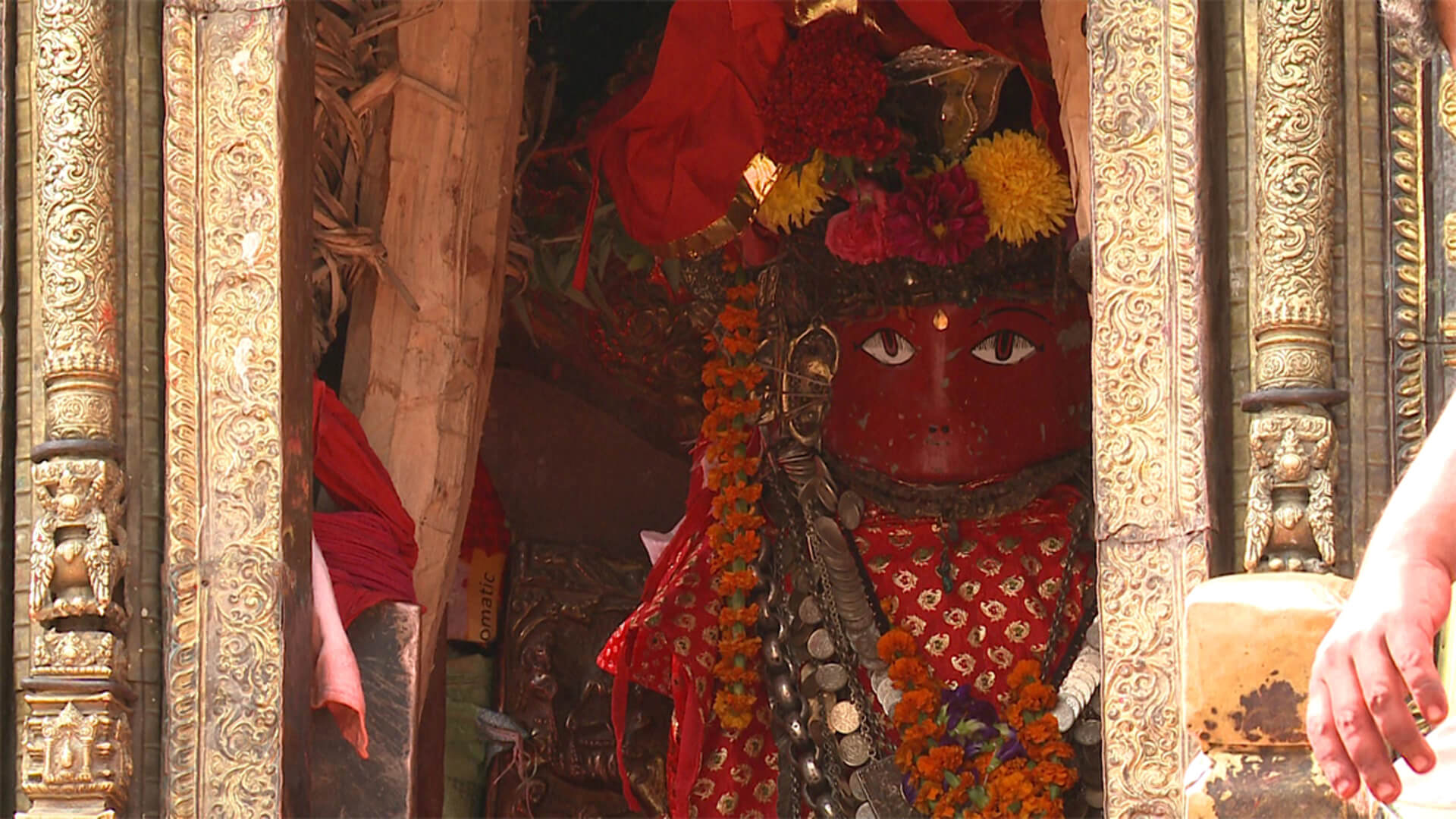
The History of the Temple of Rato Machhendranath
Besides the Temple of Seto Machhendranath (White Guan Yin) described earlier, there is also the Temple of Rato Machhendranath (Red Guan Yin) in the ancient city Patan in modern-day Kathmandu. Building of the temple started in 1673 and the main deity worshiped is Rato Machhendranath, which the Hindu believers likewise consider one of the manifestations of the Lord Shiva.
A mega quake shook the Nepali Valley and many historic sites and temples were damaged severely, including the Temple of Rato Machhendranath. The LJM TV crew went to Nepal for rescue and relief work, and recorded the tumbled Temple of Red Guan Yin in a documentary. Prof Sukra Sagar Shrestha offered to explain that many countries including the United Nations were concerned about re-building sites of tumbled world heritage and there ought to be sufficient resources. A period of 5-7 years is what it would take for the Temple of Rato Machhendranath to show itself again to the world, once relevant concerns such as political and legal issues were sorted out.
With regard to the origin of the Temple of Rato Machhendranath, there is no lack in legends and stories. One popular but not necessarily fact-based notion is as follows according to Mr. Sarbottam Shrestha, himself a Nepali literati and intelligentia, and a medical doctor by training.
A yogi master came to Kathmandu a very long time ago, but people did not know him and there was no due respect understandably. Upset and wanting revenge, the yogi master wielded the dark power to capture all nine dragons of Kathmandu and made them carry his sedan chair. With the nine dragons gone, it also stopped to rain in Kathmandu and life was much disrupted. The drought went on for 12 years and the scorched land became totally wasted. The frustrated King sought help and was advised to secure the visit of the yogi’s Guru, who alone could help turn things around. Nepalis believed that the savior was an heir to the throne living in Assam, India, who would later become Rato Machhendranath. The escorted entourage, however, stopped short of entering the city of Kathmandu and stayed at Bungamati, and the yogi master went to pay respect but was reprimanded and told to set the dragons free. The instruction was heeded at and things went back to normal. Consequently, the Nepalis view Rato Machhendranath as the deity who bestows good harvest upon farmers.
Archeology professor Sukra Sagar Shrestha, however, pointed out that before there was the Temple of Rato Machhendranath, there had been a big monastery on site that could be traced back to as early as the 13th century according to archeological findings. By the time the Temple of Rato Machhendranath was retrofitted onto the existing structure some 200 years ago, the Indian style dominated the architecture, yet the roof-top stayed distinctively Newari.

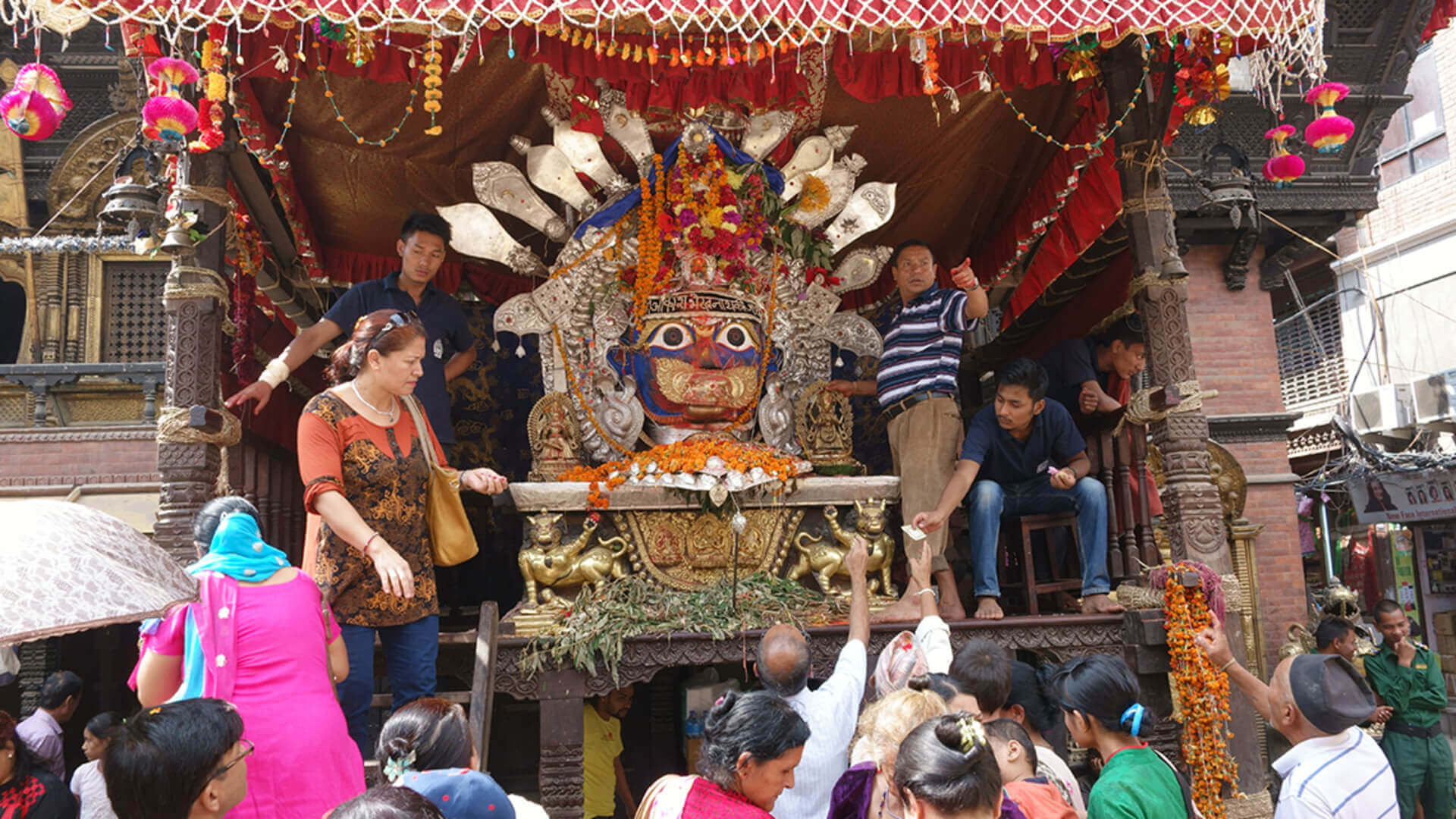
Cult Festivities of the Red/White Rato/Seto Machhendranath Temples
The presence of the Red Machhendranath was key to the solution of the drought and the King and his people were all overjoyed. But that the Red Machhendranath decided to stay at Bungamati outside the city of Kathmandu had the King plea for a modification in that the Red Machhendranath regularly visit the city with fanfare and celebrations, so that people would know about the visit and come pay homage.
Rato Machhendranath gave the consent and thus resulted in his split stays of half a year at Patan inside Kathmandu, and the other half-year outside at Bungamati. And each year in April/May when Rato Machhendranath leaves town for the suburbs, the most important festival of the year for Nepal begins. A three-story tall wooden structure that takes more than a hundred people to move for a slow procession carries the image of the deity, leaving town on a designated route and only to return approximately half-a-year later.
The distance between the two temples of residence of Rato Machhendranath’s is about 8 kilometers long. But the slow procession moves at a snail’s pace with big crowds along the way, and the 7 or 8 days of the procession is obviously the highlight of a month-long festival. Everything pertaining to the Rato Machhendranath festival has become ritualistic and strictly observed, from the rites dedicated to the deity before and after the procession, to the crafting of the wooden structure, with details such as what kind of timber from which forestry, where the rattan is secured from, and specifics of the wooden structure including who the carpenters should be, all clearly instructed. In the Land of Festivals - Nepal celebrates 300-plus festivals year-round - the Rato Machhendranath Fest is obviously of particular significance. Many people of Patan are of the opinion that the Fest is worthy of the status of the New Year celebrations. The Fest actually supersedes the caste system and religions and it belongs to all Nepali people and not just the Buddhists.
The Temple of Seto Machhendranath, of course, has its own Fest that falls somewhere between March/April each year. People would bring out the image of the Seto Machhendranath and set it securely in a tall, antique, wooden chariot(Jatra) for a slow procession from one ancient site to another over 4 consecutive nights to finally arrive at Lagan at the south of Kathmandu’s old city. There the image of the deity would be moved from the chariot and carried back in a sedan chair to the Temple where the 108 Lokesvaras are. The chariot would be disassembled for re-use the following year.
Of the two Fests honoring the Red and White Machhendranaths, the one for the Red is apparently longer and bigger in all measurement of the festivity. Sarbottam Shrratha had this to add: the White Machhendranath Fest is mainly about the image of the deity in a chariot for a 4-day procession. But for the Red, people of Patan are expected to invite a lot of guests for eating and drinking in a much more celebratory ambiance overall. The scale is way bigger and it lasts a whole month.
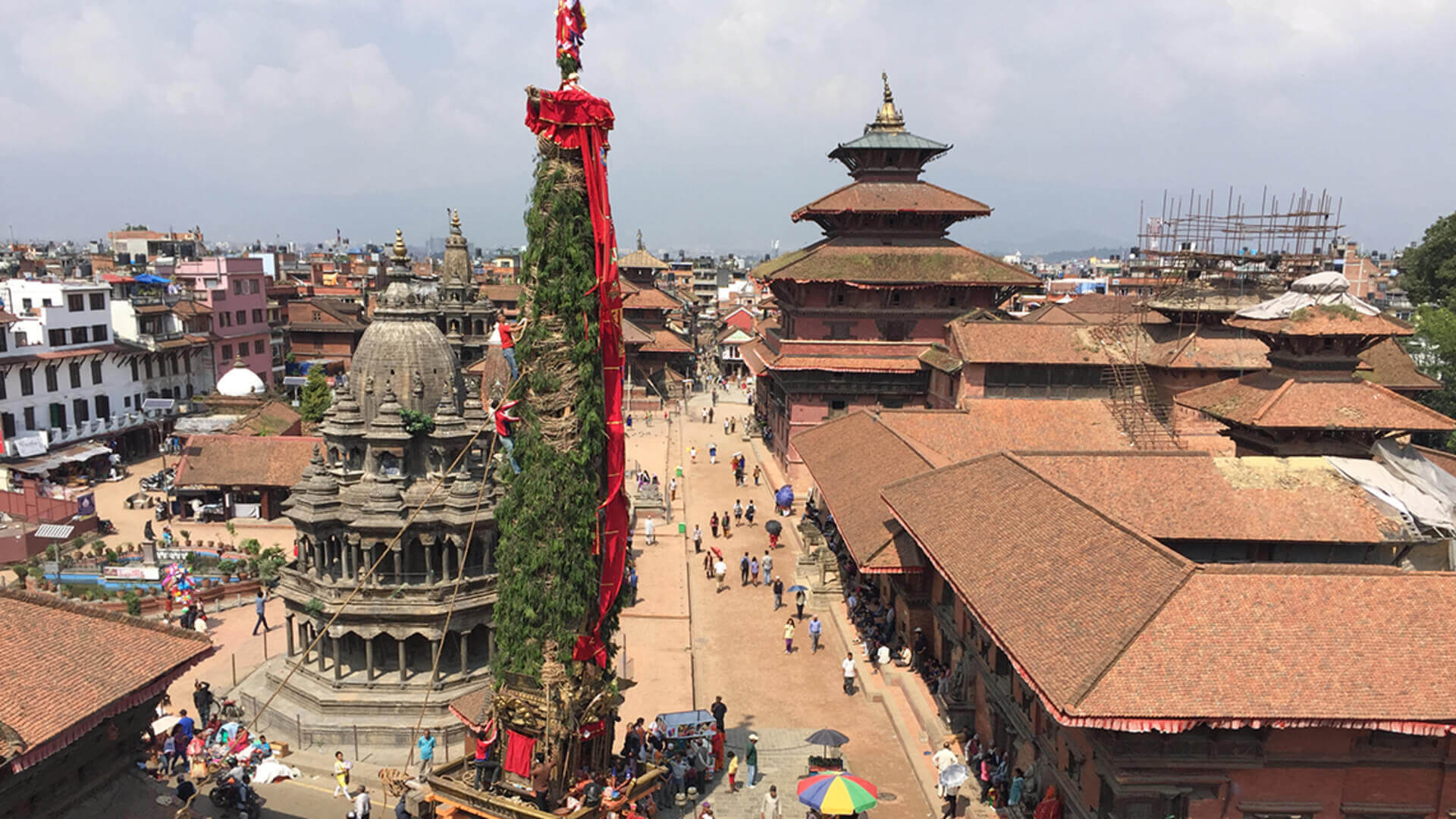
The Four Major Temples of the Avalokitesvara Bodhisattva in Nepal
While Hinduism obviously dominates in Nepal, but the Newari people in the Kathmandu Valley have for the longest time been nourishing both Buddhism and Hinduism harmoniously to the extent that one is tempted to use the term ‘well-blended without forced distinction’. In the Mahayana tradition of Buddhism, Bodhisattva
Avalokiteśvara, or Guan Yin in Chinese and always associated with the verse - ‘prayers depart a thousand hearts; in a thousand hearts he answers. At all times he is a boat that crosses people over the sea of suffering’ - is undoubtedly most popular and known to literally everyone. In Nepal’s Theravada Buddhism, Avalokiteśvara Bodhisattva also makes an appearance, but most international visitors to Nepal as the birthplace of the Buddha do not have the slightest idea that there is also strong worship of Avalokiteśvara Bodhisattva right in Nepal.
There are four major temples dedicated to the worship of Avalokiteśvara Bodhisattva, two each, red and white. Most popular and perhaps most thoroughly-researched is maybe the one in the old street of Kathmandu for Seto Machhendranath, generally referred to as the Jana Bahal, also where the group of the 108 Lokesvaras can be viewed. The deity is venerated as ‘Karunamaya’ that means ‘the heart full of compassion’. Seto Machhendranath is viewed by the Newari people as the guardian deity of Kathmandu, who faces East with the right hand in a gesture of expressing a wish, palm forward, and holding a lotus in the left hand, slanting eyes cast downward, with the image of Amitabha in the head-piece. Two statues, one green, one red, of Aryatara and Padmatara respectively, flank the Guan Yin, and legend has it that Guan Yin shed two tears of sadness when witnessing sentient beings in suffering, and the two tears transformed to stand guard for Avalokiteśvara Bodhisattva.
By contrast and of equal significance if not even more so is the Rato Machhendranath with the two residential temples at Bungamati and Patan respectively. It is very rare for the same deity to be worshiped at two temples at the same time, with each of the places occupied for worshiping for half-a-year regularly and alternately. Furthermore, the procession of the Bodhisattva’s moving between the two residences gave birth to, and accounts for, a grandiose festivity that not only marks the most important holiday season in all of Nepal but functions for the Newari people as a month-long New Year celebration.
The other two temples dedicated to the worship of Avalokiteśvara Bodhisattva are Chobar Machhendranath (red) and Nala Machhendranath (white), and both are nestled in the suburbs of Kathmandu.
With regard to what people would usually pray for when worshiping Avalokiteśvara Bodhisattva at these four different temples, here is a quick answer. The four temples are regarded by the local people as ‘particularly auspicious’ for different wishes respectively: protecting lives (Seto), bestowing fortune (Rato), recovery from illness (Chobar), and strong fertility (Nala).
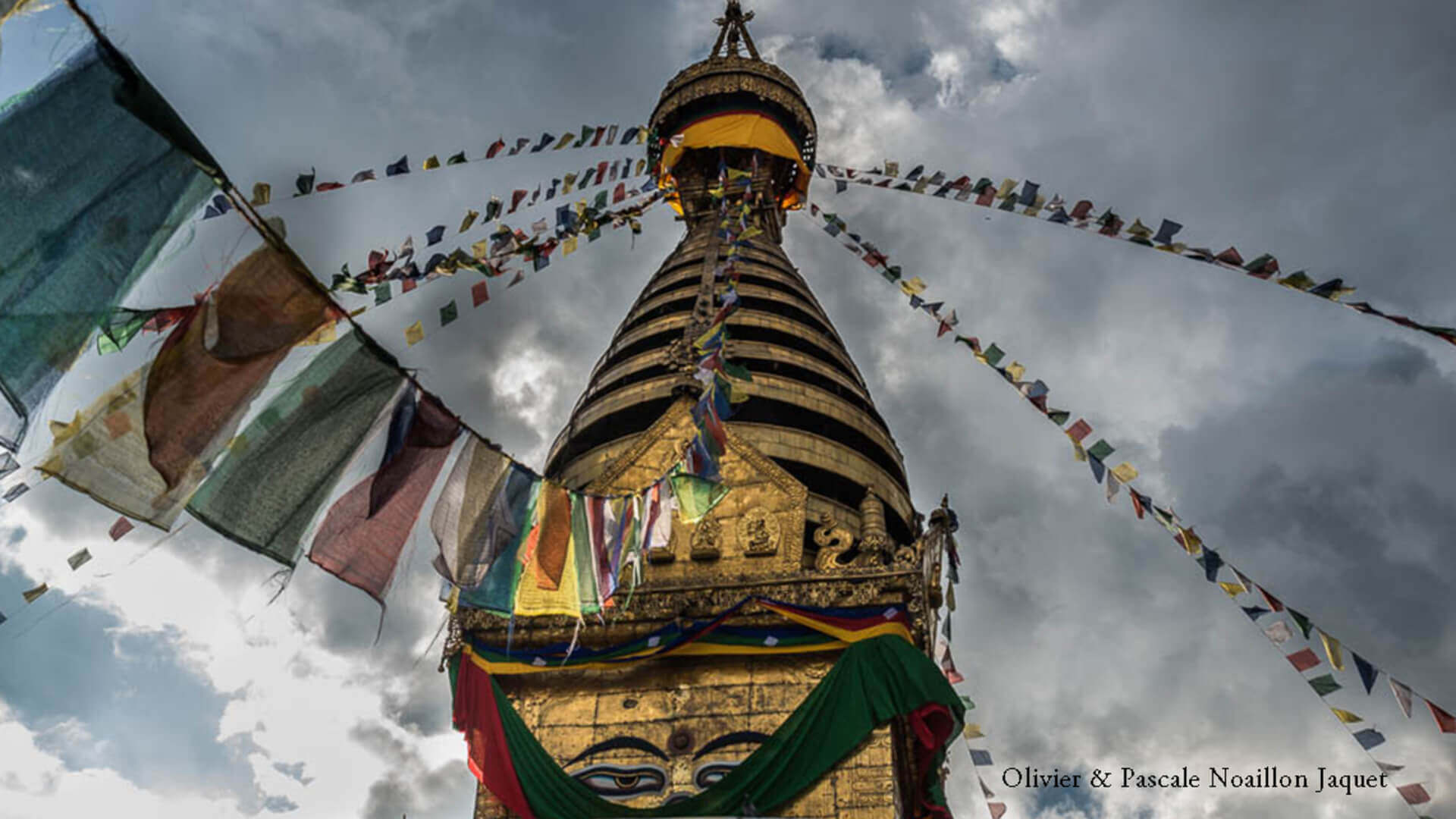
Indianized Avalokitesvara/Cult names/Guan Yin worship in Nepal
Slightly over 2,500 years ago, Shakyamuni Buddha was born in Lumbini in modern-day Nepal. The Buddha for all of his life moved mostly around in northern India and Nepal. Hinduism has become the dominating faith in India and Nepal. Many scholars, however, believe that much of the original Buddhism directly from Buddha himself can be found well preserved in Nepal (especially in the Newari communities) for more than 2-and-a-half millennia. Over time, the exchange and interflow between Hinduism and Buddhism have created religious and cultural ‘mixture’. A present case in point: the 108 Lokesvaras at the Seto Machhendranath Temple lend themselves well as examples of such blending.
More specifically, the term/name of Machhendranath is a manifestation of Lord Shiva for the rainfall and therefore the guardian deity for the Kathmandu Valley. But in Buddhism, the same deity is also a manifestation of Avalokiteśvara Bodhisattva.
According to the former deputy director of the Nepali National Bureau of Archaeology, Prof Sukra Sagar Shrestha, the term/name Lokeśvara morphed to become Machhendranath, for instance, is mostly because a Nepali king during the Malla Dynasty was converted to Hinduism and tried hard to turn it into the national faith. As a result, Buddhist Bodhisattvas all adapted to their Hindu counterparts. Patan was where the changes happened first, they then spread to other parts of Nepal.
What do people do in Nepal when studying to practice the teachings of Avalokiteśvara Bodhisattva ? We see a lot of women reading religious scriptures in front of the temples early every morning. But besides that, so Prof Sukra Sagar Shrestha, there are many other ways. There are people who concentrate on citing Guan Yin’s name, some walk in circles around sacred images of Guan Yin, others refrain from consuming food after mid-day, to name but a few examples. But no matter which way you practice, you must have a clean and devout heart. When taking the worship to the next level for more serious practice, people would take up living at the Temple of the 108 Lokesvaras for a month-long fasting that allows only consecrated water. At the end of the fasting, people are of course physically weak but much stronger than before in their spirit. It also needs to be said that everything we use when worshiping Guan Yin must be white in color as it stands for cleanliness.
